#the main argument i see for sub is that its more 'true' to the original? which. yea that has value. but so does dub??
Explore tagged Tumblr posts
Text
yea sure. puts on my hbomberguy voice
So. Here is a ramble on The Story Of The Man Himself: What the FUCK is up with that???
like, alright, in episode 25's sub version, the intro says “When the man’s hands were cut off, he began writing a story in his own blood. That was a story of the man himself, who would continue to spin stories even after his death.” which is notably different from the dub version, which only says "That was a story he could continue spinning even after he died." a rare W for sub enjoyers, getting a little more flavor than dub enjoyers.
but its very clearly stated within the show that the story drosselmeyer was writing isnt His, its the story of the prince and the raven. this isnt even spoilers, they tell you in like episode 2. so why is the narrator, someone who tells the plot's stories in layers of metaphor, saying this Outright?
maybe because mytho IS drosselmeyer, cloaked in metaphor and allegory.
let's start simple: they look alike. no come back im going somewhere. princess tutu's cast all have unique appearances; their own hairstyle, hair type, and hair color, their own facial shape, their midly varying skin tones, etc etc.

like, this image doesnt even include the side or one-off characters who all look unique. pique and lillie, ebine, paulamoni and her husband, literally all of the animals, etc etc. so why, in this varied cast, do TWO of the main characters have white hair and golden-brown eyes? thats a very specific combination to put on Two Characters. oh well! surely thats a coincidence! maybe it just Happened to be an effective character design for both of these men with forbidden powers and surviving something that should have very much definitely killed them.
hey wait a second.
let's go over this story one more time. drosselmeyer is a writer whose stories come to life. his power was feared for the possibilities it could cause, so the bookmen cut off his hands and destroyed his stories. he evaded death by using his blood to write a story of himself, possibly dying from bleeding out in the process. its unclear. but its unlikely he wouldve been able to get actual medical attention for his hands, so i assume the impromptu amputation killed him eventually.
mytho is a revered prince with a forbidden power who uses it to trap the raven after they both escape from the story, completely losing his heart and thus himself in the process.
im not the only one seeing parallels, right? they are holders of great power who are loved and whose enemies Want that power. when their enemies cannot have the power to themselves, they vow to kill the power's holder. using this power, they endure an injury that should have killed them, leaving only a shell of themselves to continue existing.
maybe other stuff in drosselmeyers stories lines up with this. maybe the ghost knight is another version of himself, maybe the gk's lover, tutu, and lohengrin are all people who tried and failed to defend drosselmeyer. maybe drosselmeyer wants mythos story to end in tragedy just like his did. maybe its all just a parallel to tie the story into neat bows, not a direct self insert.
however its really funny for it to be a self insert bc so is edel and that makes all three of them transfem as FUCK thank you and goodnight!!!
The narrator opening episode 25 by saying the story of the prince and the raven is a story about himself was wild and completely changes the narrative
#NOT sorry for the rare sub W comment also. yall have been on your high horses for ages as if dub isnt equally as valuable and fascinating#the main argument i see for sub is that its more 'true' to the original? which. yea that has value. but so does dub??#there is so much value to be found in how lines and voices and acting are translated. the meaning dub adds to lines and voices.#and also can i be so fr sub ptutu is just Less Fun? mr cat and drosselmeyer arent even Silly. theyre just Normal. not even Eccentric#MAYBE theyre silly/eccentric by japanese standards but those standards dont Translate. you have to translate the Voices Themselves.#also im fucking tired of ppl calling her 'ahiru' in english. it doesnt Work bc it doesnt Read as Duck. her name is DUCK. thats the POINT.#me when i have autistically high standards for the interpretations of my funni show and neither sub supremacists nor shippers Get It#like yes yes cute romance between fakir and duck but what about the rejection of romance. what about the ways they struggle to get along.#what about learning that self acceptance is more important than outside love#about duck realizing she doesnt Love like mytho/rue/fakir do.#well. aside from me aro headcanoning mytho and rue as well as duck. thats a different discussion <3#aroace mytho and aro rue exist at the same time as duck realizing shes aro bc theyre allo and her experiences do NOT match. theres nuance <#yea im putting completely different rambles in the tags to the actual content of the post. enjoy your fucking soup of takes.
59 notes
·
View notes
Text
Rise of the V-Tuber
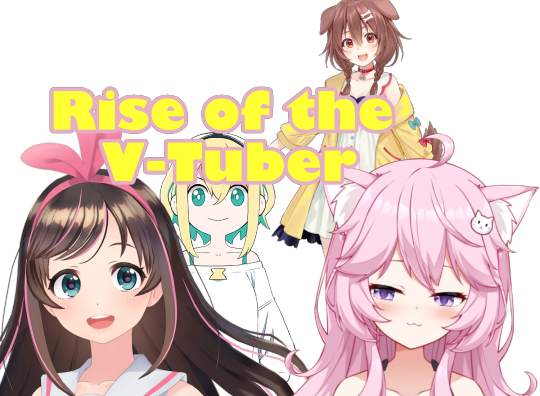
As a platform, YouTube has gone through a variety of “eras,” wherein a particular trend catches on and defines the website for some time. In the early days, you had funny cat videos, then Let’s Plays of video games became rather popular, and now we seem to be deeply entrenched into a new era that has exploded in popularity as of late. If you’ve frequented the website at all in the past few months, it is almost inescapable. Cutesy, anime-styled avatars that play games, sing, chat with viewers, or even cook! What does it all mean? Where did they come from? Are they here to stay? Most importantly, how does one crawl out of the rabbit hole once they fall into it? All that and more will be revealed as we delve deep into the wacky, wholesome and sometimes worrying world of V-Tubers. (photo credit YuuGiJoou. Check her out on YouTube, Twitter or Twitch!)
THE ORIGIN
To begin properly, let’s define the subject. A “V-Tuber” is a “Virtual YouTuber,” someone who streams on YouTube (or any other streaming platform) using a digital avatar as a proxy. The streamer in question typically uses face-tracking software so that the avatar can emote (or at least attempt to emote) to match their own reactions as they provide entertainment for their audience. While it may seem as if V-Tubers are rather new, in doing research on the topic, you’d be surprised how far back things go.
For starters, the concept of a virtual celebrity has been around for a while, with one of the most notable efforts being Hatsune Miku, a Vocaloid voicebank program. Hatsune Miku is every bit as famous and beloved as a flesh-and-blood singer or entertainer despite being nothing but voice synthesizer software. Vocaloid got its start back in 2000, eventually being reworked into a commercial product in 2004, though it wasn’t until the programs started receiving anthropomorphic character designs that it took off, with Hatsune Miku’s own debut in 2007, and the rest is history.

Many will consider “Virtual Idol” Kizuna Ai as the true pioneer of what we call a V-Tuber today, making her debut in 2016, however one could make an argument that Ami Yamato, a 3D-animated vlogging channel debuting in 2013, beat her to the punch. Honorable mention of course goes to Any Malu, a Brazilian animated YouTube vlogger who debuted in 2015 and eventually gained her own show on Cartoon Network Brazil. While Ai may not be the first, she is undoubtedly considered to be the codifier that many later V-Tubers would follow. Ai’s entire shtick was being an AI program that wanted to connect with humans, playing games, singing or interacting with fans. Following her explosive popularity, it was clear that other companies would follow the model established by Ai, with their own spins on it of course.
Nijisanji, established in 2018, proved that this trend could be incredibly profitable, becoming trailblazers in their own right as they established various “branches” of their company in several countries with their own unique performers that could cater to a wider range of viewers. As of this writing, Nijisanji employs over 164 “Virtual Livers,” most of which come from their Japan branch, alongside their Korean, Chinese, Indian and Indonesian branches. Similarly, there is the Hololive corporation, which saw substantial growth throughout 2020 in particular. Established in 2016 originally as Cover Corporation, at first Hololive was the name of an app meant for use in 3D motion capture, though following Nijisanji’s success, Hololive was rebranded as a V-Tuber competitor and also features a variety of colorful characters spread across many different main branches. There is of course the Japanese branch, as well as Hololive Indonesia, the relatively new (and highly successful) Hololive English, a defunct Chinese branch and an all-male Holostar branch in Japan.
Other, smaller V-Tuber groups have sprung up alongside the corporate powerhouses, such as VOMS Project, established in March of 2020, as an independent trio of streamers, and more recently at the tail-end of 2020 with V-Shojo, featuring a group of Western streamers (who ironically mostly stick to Twitch). Outside of this of course are the countless independent streamers who utilize avatars for one reason or another across many different platforms. Even prominent Twitch streamers seem to be getting in on the act, such as Pokimane, though that one has not come without some backlash. So consider that a rough history of how V-Tubers got started in Japan but how did they gain a more global fanbase? Well, in a word…”memes.”
GOING INTERNATIONAL
I won’t deny there had to be at least SOME overseas fans who enjoyed watching V-Tubers before they became more well-known, but for many Western fans their introductions to V-Tubers in general typically came from viral videos taken from various streams that spread like wildfire, eventually getting people curious enough to check them out. For Kizuna Ai, her playthrough of Resident Evil 7 gained notoriety for her mimicking the cursing of the English-speaking player character, and for Hololive, arguably the first real Western breakthrough for the company came from a now infamous moment from Sakura Miko’s stream of Grand Theft Auto 5.
youtube
Also from Hololive, Inugami Korone in particular had a variety of memes spread about her due to playthroughs from various games that even got acknowledged by the developers themselves. Her playthrough of DOOM 2016 resulted in a short-lived Easter egg implanted into DOOM Eternal, and her video on Banjo-Kazooie (and the animated Eekum Bokum fan video that spawned from that) got the attention of Rare, Xbox and even Grant Kirkhope, the composer for the original game.
Honestly, the real unsung heroes of sorts for V-Tuber popularity might just come from foreign fans that would clip and translate various moments from streams that helped to build an international audience. There are dozens of Twitter handles and YouTube channels that specialize in spreading these clips around and if you factor in the YouTube algorithm, once you see one video your feed will be flooded with similar videos. It is no surprise fans call getting into the fandom “falling into the rabbit hole.” When you look at the more popular members of Hololive, often the ones with various viral clips have the higher subscription counts. In the case of Aki Rosenthal, one of the older members, her sub count exploded after a fan translated a section from a then-recent stream in which she talked candidly about her less-than-stellar growth as well as the difficulties of standing out in general. While at one point having the lowest amount of subscribers (well below 200,000), in the months since that video her sub count has more than doubled going past 400,000. Sometimes the talent needs a little push.
Now, within Hololive itself, I think Kiryu Coco is also partially responsible for expanding the fanbase, being one of the few employed talents with the ability to speak English (likely a native speaker), she gained a large international fanbase as she would work to translate what she or other members were talking about on the fly, and later on established an ongoing series where she would directly engage with fans over websites like Reddit and “rate” the various memes they would send in. Coco also pushed for establishing what would become Hololive English, which has proven to be a gigantic success, each member of that branch blowing past more established talent’s subscriber counts, with Gawr Gura becoming the first Hololive V-Tuber to pass one million subscribers and just recently passed the two million mark. So yeah, V-Tubers are a big deal now but…what is about them that makes people want to watch them in the first place?
THE APPEAL
So, right off the bat, if we’re going to ask why someone would want to watch a V-Tuber I think it’s fair to ask that of virtually ANY internet personality. The reason why someone would watch Game Grumps or Pokimane or Jojo Siwa or whoever else is the same reason they’d watch Kizuna Ai or Inugami Korone or Ironmouse: they’re entertaining. I guess that seems like a bit of a cop-out answer, right? There MUST be a reason why V-Tubers have blown up in popularity over the last few years, so are there things that make these particular Internet entertainers stand out from the crowd?
Undoubtedly, the fact that these streamers are playing a character is a deviation from the norm, though the dedication to staying “in character” seems to vary from person to person, and over time many V-Tubers tend to open up and are far more genuine. At any rate, even the best actor out there can’t possibly make up various daily happenings or childhood stories for their characters on the fly, day after day, stream after stream. Still, I’d imagine the decision to use a proxy as opposed to their real self can be liberating, a mask they can wear to speak more freely or a role they can play up for entertainment. For the most part, I think the persona aspect is mostly harmless fun that makes the streamer seem more distinct; ask yourself which is more eye-catching: some normal human playing a game and occasionally cracking a joke, or a one-eyed pirate girl discussing her raunchy past? Or maybe you’d rather watch the grim reaper practice her raps? Even talent that don’t really play up their character much still often have interesting character designs; we have princesses, dragons, devils, robots and more. A little something for everyone!
youtube
Speaking a bit more personally, I find it interesting to watch streamers from an entirely different culture and how they interact with fans or engage with games. I find it funny when Inugami Korone or Sakura Miko plays more Western-oriented games like the DOOM series or Grand Theft Auto V respectively. Often times they’re blown away by the culture clash, or they view these games through a different lens since it’s so different from what they’re used to. In particular, those two are just genuine goofballs that are funny all on their own. More chat-focused streams are an interesting view into daily life in Japan, such as the stories Houshou Marine tells, though obviously a given V-Tuber’s viewpoint isn’t a metric you can apply to the whole country, but she’s still interesting to listen to. Takanashi Kiara is also notable for her multilingual skills, which has helped her bridge the gap a bit more between the various Hololive members through her Holotalk segments where she interviews other V-Tubers. Outside of Hololive, Amano Pikamee from VOMS Project is just a bundle of energy that’s fun to watch as she rages in Super Mario 64 or Super Mario Sunshine. Her tea-kettle laugh is also just kinda charming. The V-Shojo group stands out for being super vulgar compared to the more corporate V-Tubers and while I don’t watch them all that much, there’s still some fun chaos to be had. Still though, I think there’s one big elephant in the room that would also help explain V-Tubers catching on at this specific point in time: the pandemic. Streaming is one of the few jobs not really affected by the pandemic, and with people stuck inside, they’re more likely to scroll through YouTube or Twitter and find a funny clip and then…well, you know… It’s one bright spot in an otherwise dark time…but I’d be lying if I said it was all sunshine and rainbows.
THE DARK UNDERBELLY
The overall idea behind V-Tubers, at least in Japan, seems to be an extension of Idol Culture…and uh…if you know anything about Idol Culture in Japan, it is all kinds of scummy. Exploitative, filled to the brim with harmful rules and regulations and largely catering to some vary unsavory “fans,” I’ll make it no mystery that I find it incredibly distasteful. Look no further than what happened to Minegishi Minami from the idol group AKB48. To keep a long story short, the obsession with “purity” and being this idealized Japanese beauty means idols are effectively locked into their work, unable to discuss or in many cases partake in romantic relationships, as that would make them less “desirable” to their audience. This unfortunately does at times extend to V-Tubers.
Take Tokoyami Towa, who was suspended for some time and forced to make an apology video for…having some male voices briefly heard over Discord during an Apex Legend stream. She even lost a lot of subscribers and support from Japanese fans following this, though once learning of this, Western fans flocked to her as a show of support. Hololive has also dealt with a variety of issues coming from Chinese fans; though that’s a particular hornet’s nest I don’t want to delve into here too much. To sum it up, fans can get obsessive and toxic, which can lead to the talent being harassed. It is for this reason, it is generally agreed upon by fans to not delve too deep into the personal lives of the V-Tubers, for fear of being doxxed and the illusion being broken. These kinds of issues certainly bring up some interesting questions regarding how talent should be treated moving forward.
Are these V-Tubers characters or just alternate sides of real people? Where does the fantasy end and reality begin? Ultimately, the lines are somewhat blurred. Talent certainly brings some of their own personality into the performance, but they are forced to remain anonymous and as can be seen in the case of Kizuna Ai, they are not always in control of the character they’ve been given. Kizuna Ai’s initial actress was for a time replaced, and “clones” of the character with different voices and personalities started to spring up, likely as an attempt to compete with the likes of Nijisanji and Hololive. In cases where V-Tubers retire from the industry, or “graduate” as some call it, all of their hard work cultivating a fanbase might end up being for nothing as they were forced behind a proxy that isn’t truly themselves and I imagine it can be hard to start over again from square one. Never mind the attempts to step out of the shadow of your older work. Man, Perfect Blue was downright prophetic at times, huh?
I don’t want to dwell on the negatives too much though. It’s worth noting for one thing that Nijisanji seems relatively lax regarding how their talent operates, whereas it seems Hololive is the standout for adhering to the idol ideal, though considering how some of the talent acts (in particular Kiryu Coco), one has to wonder if they’re softening their stances a bit. Many V-Tubers generally talk about the positive aspects of the industry and being given the opportunity to reach people from all over the world. Shortly after Ina’s debut in Hololive English, she was actually brought to tears when told her art streams convinced people to get into (or back into) the hobby, which had been one of her goals for becoming a V-Tuber in the first place. Ironmouse, now a member of V-Shojo, has an immune system disorder that keeps her bedridden and forced to stay inside, so the opportunities afforded by this particular type of streaming has allowed her to reach out to others and as per her own words, has changed her life for the better. While there are definitely “fans” that go too far, corporate practices that are outdated, or harmful and a slew of potential unfortunate implications, ultimately I think most people out there are just looking for quality entertainment, and these digital proxies give these entertainers an outlet to connect with fans in a way that they might not have otherwise.
CONCLUSION
V-Tubers are in a bit of a boom at the moment, though I can’t imagine it’ll last forever. We’re quickly approaching market saturation and after a point, people can only follow so many streamers at once. Hell, as I was editing this up, it seems as if prominent YouTuber Pewdiepie is about to step into the ring, so who knows what kind of shake-up that could bring. The bubble will undoubtedly burst and what becomes of V-Tubers then is still up in the air. Or who knows, maybe V-Tubers will endure and replace all entertainment and we’re just watching the beginning of a cyberpunk dystopia. Stranger things have happened! Considering the world is still reeling from the effects of the pandemic, that should largely have an impact on the popularity of V-Tubers for some time to come, though as we emerge into a “new normal” in the world, it’ll be interesting to see how these entertainers continue to evolve. Now, I suppose there is one question I never quite went over before now, isn’t there? How does one escape the V-Tuber rabbit hole? Well, I’m sorry to say but there is no escape.
Enjoy your new home!
-B
#xb-squaredx#blog#vtuber#v-tuber#hololive#nijisanji#VOMS project#korone#sakura miko#pikamee#kizuna ai#youtube#twitch#v-shojo#ironmouse#houshou marine#eekum bokum
42 notes
·
View notes
Text
Rebellion’s Biggest Outstanding Question
(Big fat PMMM+Rebellion spoilers under the cut, natch:)
Homura, at the end of Rebellion, believes that she is rebelling against Madoka’s will. But is she actually doing so? Or is she acting in accordance with it?
Let me explain.
I’ll start with the point I’m sold on either way (and have commented on at least twice before, including my explanation of Madoka’s other big mistake): Rebellion is directly downstream of Madoka making a single mistake immediately after her ascension in episode 12, a moment when she could not afford to make any mistake at all. Much like Madoka’s other big mistake in episode 10, this one is not obvious on the surface and only becomes clear when looking at the events through a symbolic lens.
Specifically, a Buddhist symbolic lens.
I’ll leave the full explanation there to this post, which lays out the Buddhist influence on base PMMM’s themes and imagery and on Madokami’s ascension better than I could. (Although its author is missing a few points. First, the shot of Madoka expanding to galaxy size is DIRECTLY out of ego death symbolism. Which makes sense, because there’s enough accounts to suggest that regardless of whether or not it has any deeper meaning beyond brain chemistry the people who’ve had it are describing a single class of subjective experience, and “one’s consciousness expanding to the size of the galaxy” seems to be a common feature of it - I’ve read at least one account of that kind of experience from, of all people, a random Protestant minister who claims to have had such an experience on a vision trip to the Amazon and only later realized that there was precedent for that kind of experience in Buddhist traditions, and he mentions that exact expansion as part of what he went through. Second, the flower on Madoka’s bow is a rose, not a willow... which makes sense, because “Guanyin/Kannon and the Virgin Mary are two aspects of the same goddess” has been a theory in certain parts for at least a century, and the rose has a traditional association with the latter goddess - there’s a reason they call it the rosary, after all. (I’ve seen speculation out of a few polytheist/less orthodox Christian circles I keep tabs on that Pistis Sophia is yet another aspect of the same goddess, too...) Third, note all the mandala symbolism floating around - most obviously Walpurgisnacht’s appearance and Kyubey’s exposition in episode 11.)
And that influence is important here, because part of the process of the escape from samsara is the breaking of all karmic ties to the world.
Except... Madoka does not do this. She leaves one karmic tie behind.
This one, to be precise:

Now, in theory it’s possible that the tainted miracle of Homura remembering Madoka has another root. But I have my doubts, and the biggest piece of evidence there is the OST: the track that plays when Homura meets Junko in the finale and offers to give up the ribbons is named Taenia Memoriae, aka “the ribbon of memories”. HMM,
(That Junko scene is in this regards the single most enigmatic scene of the main series finale to me. My instinct is that it’s drawing off of Christian mythos again, either canonical or Gnostic, but I can’t quite place what piece; I kind of want to compare it specifically to the Denial of Peter.)
Now, there’s two other pieces here that are worth noting.
1) While Homulilly is described as the Nutcracker Witch in Rebellion, Homulilly’s name and Witch card are first revealed in the PSP game, and there she goes by a rather different epithet: Witch of the Mortal World, nature is karma. Which is rather on the nose (the Mortal World [shigan] being another term for samsara), but then that’s probably by design - main series PMMM is not subtle at all when it wants to make a point. And it is this epithet, not the Nutcracker Witch, that the Doppel versions of Homulilly in MagiReco draw off of, which suggests the staff considered it important. (There’s a second distinction in the latter, because Moemura’s version of the Doppel implies that Homulilly’s nature was originally slightly different again - Witch of the Mortal World, nature is closed circuits - but I think for our purposes here this is a difference without true distinction, much like the Witch of the Near Shore pun for swimsuit!Moemura’s version of Homulilly.) And there’s echoes of this even in Rebellion: the Clara Dolls are of course referred to as the Children of the Mortal World, plus of course the obvious “Homulilly’s Rebellion barrier as the Mortal World” take. (Which, hmm. Hello second-order symbolism - Homura failing to “break out of the egg” as failure to escape the cycle of samsara.)
2) The red ribbons of course suggest a very specific form of karmic tie - the Red String of Fate. And you can be very, very sure that the staff intended that, too. To drag a certain piece of key animation back out from storage:
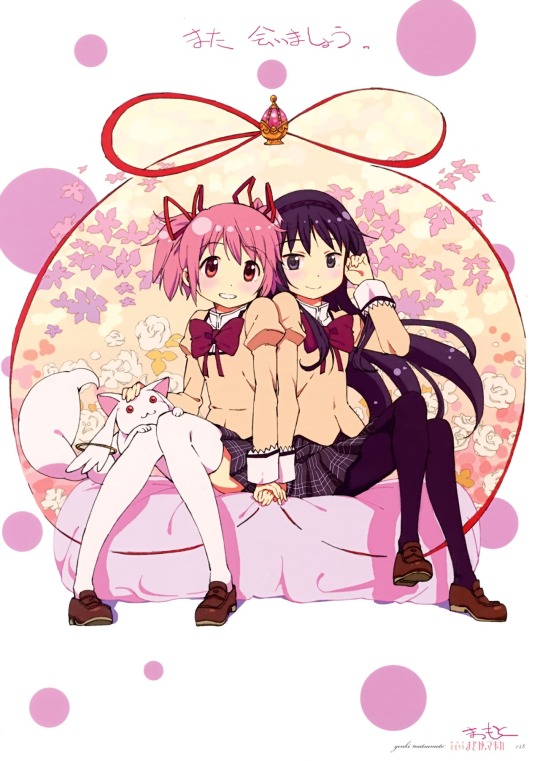
While it’s hard to tell at this size, it sure looks to my eyes like the two ends are specifically tied around the girls’ pinkies. You know, exactly where the proverbial Red String is said to be tied.
Or, to put it another way: AI YO.
Everything in Rebellion is downstream of this.
But all this is prologue. Now that we have established the mistake, we can address the actual outstanding question: Did Madoka intend to make that mistake? People have noted the applicability of Junko’s comments about intentionally making a big mistake when backed into a corner to Homura’s actions in Rebellion; do they also apply to the action Madoka took that led to that?
I am not sure. Both cases are consistent, and I’d put about even odds either way. But it’s the affirmative case I want to lay out here, to show that it does in fact exist:
- Let’s start with the one point someone else might bring up that I don’t really weight: Madoka’s final conversation with Homura in the flower bed. This one, I think, can mostly be discarded. We have word from both Kyubey and Sayaka that Madoka does not have her memories here; I can’t see both of them lying here. (Also remember that Kyubey seems to have restriction that is sometimes said to apply to demons, at least under certain circumstances: he cannot directly tell a lie. This is of course a very different thing from having to tell the truth, as episode 9 alone is enough to attest, but in this specific case it’s a boost to his credibility.) If there’s an actual argument here, it’s a second-order one; it is possible, especially given her divine abilities, that Madokami was running a Xanatos Gambit and counting on her amnesiac projection to unwittingly relay her true feelings. (In which case I would have to grab a certain infamous line from another well-known anime: “Just as planned”.)
- That one shot of Madokami’s gloved, scarred arm reaching down through the window to touch Homura. Operative word scarred. (And honestly, looking at one of the subs for that scene again Madoka’s comments there look potentially consistent with her actually supporting of or at least accepting Homura becoming a demon...)
- Mata Ashita, specifically the lyrics thereof. With the perspective of the full series, Madoka’s character song is fairly clearly from the perspective of Madokami, and it’s suggestive that she is not entirely happy with the results of her wish and ascension.
- The fact that Rebellion happened at all. There’s a complaint that I’ve seen regarding the mechanics of the Incubators’ plot in Rebellion: logically, by the wording of Madoka’s final wish the Incubators’ plan to use the Isolation Field to block the Law of Cycles should not work, since part of Madoka’s wish was to rewrite any rule or law that would prevent her from destroying Witches with her own hands, including the one the Incubators set up with their Isolation Field - doubly so if you take Madokami’s statement can see every world that ever existed or could ever exist and apply it to the Sealed Reality the experiment generates. Except... there is one way that argument fails, regardless of anything else: namely, if Madoka saw what the Incubators were doing and intentionally allowed their experiment to proceed. And at this point there is precedent for her doing something very similar; AIUI in her Magical Girl Story in MagiReco Madokami does something very similar wrt the MagiReco timeline, deliberately declining to destroy it despite its continued existence conflicting with the Law of Cycles.
(- Magia. This point of argument I’m not convinced of either, but let’s lay it out. (Honestly, even if I’m right I’m not sure how much of this was consciously intended, but creations can have a life of their own - especially creations where fucking natural disasters delay them so that they’re released on the most appropriate day possible!) There’s two pieces to this, one I’m more sure of than the other:
1) The visuals. Here’s the spot where I feel most solid about interpreting Magia: the ED visuals are clearly a reference to Madokami’s ascension. (The show loves hiding that sort of foreshadowing in plain sight, why would you be surprised?) Note the second half particularly, both Madoka’s hair lengthening and the starfield she’s running past. (I think the order of the four other girls in the first half is probably how long they held out without Witching out.) That leaves two issues, one more obvious to Western audiences and one less so. First, that enigmatic and ominous shot of Madoka in fetal position (appropriate - her request in 10 and then her wish in 12 can be rephrased as “don’t let me grow up”) in the eye of Mephisto. Second, there’s a point I’ve seen raised in analyses of Connect: in Japanese cinematography, motion from right to left indicates a correct course (unlike its Western equivalent, where the opposite applies)... and for the entirety of Magia Madoka is moving left-to-right.
2) The lyrics. This is the part I’m less sold on, but once again let’s lay out the affirmative. My line here derives from a hunch: Connect is famously from Homura’s perspective despite appearing to be from Madoka’s, perhaps the inverse is also true? I’m still not sure there, but especially if you’re considering the TV version it can work... provided the lyrics are specifically from Madokami’s perspective again. Grabbing the wiki version of the translation: “The light of love lit within your eyes will transcend time” sure fits better if we’re talking about Homura rather than about Madoka, likewise “with this power that can break even darkness” sure sounds like a better fit for Madokami to me. And in that case the most interesting stanza is the second: “Swallow down your hesitation. What is it that you wish for? With the direction of this greedy admiration, will there be a short-lived tomorrow?” The former two lines are quite consistent with Homura’s decision in Rebellion (and I note the visual of Homura biting down on her Soul Gem to break it!), and “tomorrow” is consistently a reference to the possibility of Homura and Madoka meeting again in other PMMM songs (Mata Ashita again, Colorful, Connect full version) - which is realized courtesy of a greedy admiration, no less. So. Magia’s full version might count, too - there’s lines there that are harder to square from a Madokami perspective (”if I can move forward without hesitation then it’s fine if my heart gets broken” especially), but “Someday, for the sake of someone else, you too will wish for great power; on the night love captures your heart, unknown words will be born” fits Homura’s fall better than Madoka’s wish, I think.)
- If Madoka’s mistake in 12 is intentional then it more closely mirrors her (unintentional) mistake in 10: she’s implicitly asking Homura to once again do something she can’t and stop her from/alleviate the effects of her making a mistake.
- At a Doylist level, if they go for a proper happy end (either in Walpurgis no Kaiten or in a hypothetical sequel to the same) I’m not sure there’s any way they can get there without using this interpretation. (In general, the two outcomes that make the most sense to me are “Akuhomu becomes the core of Walpurgisnacht, cue ending scene with Moemura making her wish” (the Logic Error ending, consistent with the Eternal Return of the Self; cue MagiReco as the way out) or an ending based on the answer to this question being yes - the easy version being a movie of everyone except Homura fighting to let Madoka rejoin the Law of Cycles only for her to surprise everyone with some sort of ending based on “actually, I was counting on her to do this from the start”.)
12 notes
·
View notes
Text
Mina-san, bonne lecture~! (Tsuki recaps his feelings about Kamen Rider Saber, a personal essay.)
So, Saber... what a wild ride it's been, huh? Just a quick heads up, this is very long and rambling, and also contains spoilers for everything in Saber. It's fine if you don't wanna read all this, but I just wanted to get my thoughts out there.
TL:DR, Kamen Rider Saber's an undercooked hot mess I absolutely adore, warts and all.
Speaking as objectively as possible, it's a 6/10. Probably closer to a 5 than a 7... it's not great: All the different plot elements are cluttered and weirdly paced; character focus is disjointed and clearly biased toward certain characters, leaving great ones like Kento and Ogami, interesting ones like Kamijo and Hayato, and underdeveloped ones like Sophia and especially the Shindais in the dust; not to mention its balance of comedy and drama is off, and while both are very effective, there's a lot of mood whiplash that can take you out of the story. I also feel like a lot of the easily avoidable character conflict could've been easily resolved, even in universe, by simple conversations. Be careful Fukuda, I think Inoue might sue you if he finds out you've been biting his style and doing it worse.
Rider shows have a very frustrating tendency to drop cool form ideas and not do anything with them, and I don't think it's ever been more the case than with Saber. There's a similar argument to be made with the majority of Heisei Phase 2 after Gaim, but wow. The suits are expensive to make without just straight up recycling everything, I get that, but man, I really wanted to see more Wonder Rider forms. How come Touma got all the fun, eh? Of note are the Blades King of Arthur forms (which look amazing by the way), Espada's Jaaku Dragon forms (one of which I even drew last night), even the non-elemental random Wonder Ride Books all have awesome design elements that go tragically unused. Even if the other Swordsmen just kinda have the ones they do get to use slapped onto them, that's at least something. Touma also just straight up only uses Diago Speedy twice and never again. You have cool props guys, don't waste them like that!
Speaking of waste, Espada, goddamn. Since most of the Wonder Ride Books are Story Type and he needs one very specific Story Book to transform, he doesn't get much of... anything, really! No Wonder Rider forms like Blades, Lamp Do Cerberus being exclusive to Ganbarizing, only getting to use the Ride Gatriker like once, he even spends the second and third arcs as a completely different Rider, then once he comes back he doesn't get a King of Arthur-granted upgrade or even a Necrom Espada form. ...at least, not yet anyway. I'm holding out hope for Espada x Necrom and the eventual Saber V-Cinemas. Extra Rider stans, we will be well respected someday.
The Unreal Engine CGI used for fights in early Chapters was pretty good but wow it feels disconnected and they really drop it quick. I feel like if the animators had more freedom to use as many forms as they want, we'd have gotten a lot more mileage out of the books beyond... decoration basically. I actually really liked the CGI sequences, they felt creative and were fun to follow along with.
The soundtrack is pretty great on its own and conveys what it needs to, but they seriously overplay the orchestral themes. It honestly feels kind of... stock at times. I think my favorite parts of the score are when it winds down, since it feels a lot more natural and lets the cinematographers and actors speak for themselves.
As awesome as I think Falchion's design and the Mumeiken Kyomu are, The Phoenix Swordsman and the Book of Ruin comes up short as its own standalone thing. You'd think 30 or so minutes of non-stop action would be awesome, and it almost is? It's as good as a typical episode of the series with a higher action budget, but it kinda drags on a bit too long; and although I think Emotional Dragon looks cool, it feels a bit tacked on. Coming off of the incredible Zero-One REAL×TIME, it doesn't give you much room to breathe, which Rider films are typically great at handling. I also thought the resolution for the kid's subplot was kinda forced. He does an okay job at acting considering his age and doesn't overstay his welcome, but I really don't see how 20 minutes of violence and action is enough to convince him to be brave enough to go play with the other kids. 5/10, it's closer to a 4 than a 6 and I think that maybe Zero-One should've stood on its own if they really had to push back Kiramager Bee-Bop Dream because of the pandemic.
Alright, with all that said... As imperfect and undercooked Saber was, like Ghost I can consider it a personal favorite, 10/10. Call it a guilty pleasure if you want, but holy hell it's just the show I needed. Takuro Fukuda has a talent for creating fun, wonderful characters and utterly fascinating worldbuilding and concepts. It's a shame he doesn't utilize them fully, but hey!
The action and fight choreography are pretty top notch as usual. Lots of beautiful shot composition and set pieces, and plenty of great angles to help keep up with the extra busy action. I love watching the suit actors perform and they deserve all the respect in the world for their hard work in those hot, sweaty, and heavy costumes. Their visual design is also top notch, with lots of unique and fascinating forms and cool weapons I desperately want to play with despite being broke, all with spectacular finishers and hype jingles with the voice of Akio motherfucking Ohtsuka calling them out. A real feast for the eyes. Not a single bad suit among them, yeah I said it, fight me.
The crossover specials are soooo good too.
-I went over my feelings on the Zenkaiger crossover episodes in a separate post (good luck finding that btw), but to sum it up, they were great character moments for Zox and the Shindai siblings with lots of great screwball comedy and some good old fashioned meta humor.
-The Ghost crossovers are great little side stories all about how Daitenku Temple somehow had the Ghost Ijunroku Wonder Ride Book? I genuinely have no idea why it was there, or how Makoto had the Specter Gekikou Senki, and as far as I remember neither of their origins are explained. Did Luna or Tassel hand them off to them and told them to wait for a sword guy? And why do these generic French Revolution Gamma villains working for Danton get their asses handed to them so easily by Kanon, who literally just became a Rider? I thought that Makoto deciding to adopt all the Kanon clones into his family was both hilarious and adorable though; considering all the crap they went through, I think it was a good ending to this plot. Gimme Espada x Necrom already Toei/Bandai/Fukuda/whoever I need to yell at, give Kento things to do, I beg you.
-I haven't actually seen Super Hero Senki since it's not available for subbing yet, but apparently there's a Journey to the West plot starring the Taros and Ohma Zi-O and I want to see that so badly.
Tokyo Ska Paradise Orchestra? Yoohei Kawakami? A match made in heaven, that's what they are. All of their themes are absolute bangers. All of them. Almighty, Kamen Rider Saber, Sparks, Taju Rokou, all excellent and empowering pieces. Rewrite the Story, Will Save Us, and The Story Never Ends are all amazing inserts done by the cast, and it makes me wish we had even more of them to help break up the monotony of the score.
The characters are what easily make this show such a great watch though. For the most part, they have great personalities and chemistry, consistently fun and interesting scenes, well acted and... sometimes well-written development, and deeply investing personal stakes.
Narrating it all is the delightfully eccentric Tassel/Viktor, portrayed by Romanesque Ishitobi "TOBI" of the Paris-based Les Romanesques. I was utterly confused by his presence at first, wondering why there needed to be a narrator when the story would've been perfectly fine without it. He even got a special spot in the opening despite having no stake in the plot despite seeming to live in Wonderworld, who the hell is this guy? But then I thought "OH MY GOD, HE'S THE MAIN VILLAIN USING TOUMA AS THE HERO IN HIS OWN TWISTED STORY, THE BASTARD". I thought it'd be some subversion of expectations, true form, "That Was His Mistake!" shit. Trust me, it made a lot more sense in my head. I'm very happy that they didn't do that, as I grew to love having male Yuuka Kazami as my narrator, and when he was shown to be actually important by being friends with Yuri my mind was blown. And doubly so when I realized just how deeply necessary to the plot he really is.
Rintaro/Blades is up there as one of my all time favorite secondary Riders, since his curiosity is always consistently funny and adorable, his forms are all gorgeous and impressively designed, his relationships with Mei and Touma are absolutely sweet and compelling to see unfold, and his arcs about becoming willing to call out those he views as family and coming to terms with his feelings of inadequacy and both moving past and using them to strengthen himself are always great lessons to pass on to kids. ...even if they took like 10 goddamn episodes to be conveyed in what could've been 5, but hey, Takaya Yamaguchi does a stand-up job all throughout. Rider veteran Eitoku's refined, almost logical movements with the Suiseiken Nagare absolutely beautiful to see in action, and his final form having the same white and blue color scheme as Zooous's base form is an amazing touch I don't see appreciated enough.
Mei Sudo's also absolutely wonderful, serving as the perfect emotional core of the story, responsible for most of the funniest lines, sweetest character moments, and some of the most deceptively compelling drama. Asuka Kawazu brings the perfect energy for such a dynamic and well rounded character, and absolutely nails her scenes of quiet turmoil. As much as I would've loved her to become a Rider, I don't think she really needed to. She's already done so much to help, and as cool as it would've been to see her pick up a sword and fight alongside them as Espada, Calibur, or Falchion she's already endeared herself to me as one of my favorite supporting characters in the whole franchise.
I can't get enough of my homeboy Kento Fukamiya/Espada. Like Rintaro and everyone else for that matter, he also suffers from Saber's pacing issues; and like his predecessor Valkyrie from Zero-One, he doesn't get a proper upgrade aside from his Wonder Combo, instead becoming an anti-villain using a completely different powerset and shifting the Raimeiken Ikazuchi out of focus for the Ankokuken Kurayami, and I feel there's a serious missed opportunity to see him use Jaaku Dragon with Alangina. However, Ryo Aoki's performance is probably among the most easily praiseworthy in the whole cast, managing to convey both Kento's kind and knightly stoicism as Espada and his emotionally unstable despair as Calibur perfectly, in conjunction with Yuji Nakata's experienced and expressive stuntwork.
Ren Akamichi/Kenzan's a dark horse favorite for sure. I remember back when Saber was first picking up, people hated this breezy mad lad for being such a simple character at first. Overly concerned with strength? Black and white world view? Annoyingly energetic? Agh, real-feeling character flaws, I hate them, get him away from me! But then y'all came crawling back. Eiji Togashi's apparently a bit of a rookie actor, and it really shows with some stilted delivery and the way he sometimes bobs his head when giving his lines, but man he improves dramatically as the series goes on. His inexperience ironically ends up really selling his character development, and his unexpectedly beautiful relationship with Desast is special evidence of that. The Fuusouken Hayate's three modes and Satoshi Fujita putting them to excellent use through his stellar acrobatic movements are also really cool.
Why did Luna have to be a child for so long? Does Wonderworld not age whoever inherits its power? Well since Luna randomly becomes an adult in Super Hero Senki and some of the final episodes, I guess so? Miku Okamoto does a fine job for a kid actor, but she's basically done all the heavy lifting for the whole series and doesn't give Mayuu Yokota enough time to get a feel for her character as an adult. How did she choose Touma to inherit the power anyway? Does she just subconsciously decide to trust him with it upon seeing how kind and passionate about storytelling he is? Well if that's the case, why didn't Kento get at least some of that power too? He's just as important to the merchan- I mean Luna-chan, isn't he? Why did Tassel pick her over someone who isn't a literal child who'd be understandably terrified about basically becoming an embodiment of storytelling?
Sophia also kinda suffers from the same problems. Rina Chinen's voice is very pleasant to listen to, but she doesn't really do much beyond serving as a source of exposition and support. I think her dynamic with Mei's adorable, and given her kindness I can certainly understand the respect Northern Base has for her, but she doesn't really contribute a whole lot. If she could use the Kurayami and become Calibur all this time, then why didn't she take it from Kento and Yuri and do so earlier when Kento decided to go back to being Espada? I know she's not much of a fighter and as the closet thing the Sword of Logos has to a leader after Isaac's death I'd understand not wanting to put her at risk, but considering Storious is destroying the world, and she's very evidently kicking a lot of ass in the first part of the final battle even in the basic Jaaku Dragon form, I think it would've helped a lot, just sayin'. Tassel at least has the excuse of being unable to interact with the real world, but Sophia obviously didn't just be put in charge of Northern Base just because she's a pawn in Isaac's plans right?
Ryou Ogami/Buster is also a victim of the disjointed character focus. I have no problem believing he's an excellent father and fighter thanks to Yuki Ikushima and Jiro Okamoto, respectively, but he feels a bit flat and simple in comparison. His rivalry with Desast is randomly dropped, his wife doesn't even show up until the final episodes, he's kinda sidelined in terms of action a whole lot. I imagine that must've sucked for the Rider Dads out there. He does get to star in his own manga, and that was pretty good, so I guess I can't be too mad.
Tetsuo Daishinji/Slash fares better though. Hiroaki Oka, being a Kamen Rider fanboy himself, manages to make him among the most relatable characters in the series. Not only are his hyperfixation on swordsmithing and anxiety played surprisingly believably, Hirotsugu Mori letting him cut loose is extremely cathartic and hilarious, and you really feel for him when the Onjuuken Suzune becomes the first victim of Calibur!Kento's sword sealing.
Yuri/Saikou's another dark horse favorite, for me at least. "Oh great, Avalon guy's got even more merchandise to sell, I wonder what his Sword of Light is- it's himself. Well... that's different." I admit, I didn't like him at first. He felt like he was there to fill out character dynamics in the absence of both Rintaro and Kento, I thought his gimmick was too silly even if his design and jingles were bangers, I didn't particularly care for his power set. But then XSwordman came around I totally got it. He's an endearing, hard-working man trying his best to catch up on all the cool shit he missed, unafraid of experimentation, ready to throw down at a moment's notice, serving as a wonderful bit of consistent support for our heroes, a truly knightly individual, an absolute Chad. and goddamn does he make me worry. Tomohiro Ichikawa, I salute you good sir.
Even if they fall short compared to the rest of the cast, the Shindai siblings are at least cool enough to not wanna write out entirely. They kinda devolve into comic relief after they become allies, something that villainous Riders from Chase onwards are very prone to doing, and it's especially awkward in their case because I think that they kinda get off scot-free for obeying the obviously sinister and crazy Isaac for so long, as well as driving a wedge between a lot of people and threatening children in Reika's case. I think their sibling dynamic is nice though, even if Fukuda recycled it from Makoto and Kanon and has some... questionable possessive undertones as a result. It's cool how they're basically foils to Touma and Rintaro though. The dispassionate and methodical Reika/Sabela is beautifully played by Angela Mei and her moments of emotional depth are fascinating to watch. Her Rider form is a thing of beauty, and its use of literal the Eneiken Noroshi's smokescreens and Yuki Miyazawa's precise and deadly stinging strikes are a joy to watch. And while Ken Shonozaki's not given the best direction as the undercooked plate of 7-Eleven fried fish that is Ryoga/Durendal, he manages to sell him as an experienced and hardened warrior with an awkward side that's especially evident in the Zenkaiger specials. His goddamn RWBY weapon that is the Jikokuken Kaiji is absolutely sick, I'm a sucker for transforming weapons and its combination of time and water powers is really cool, especially with Yasuhiko Amai's deliberate and forceful acting in the suit.
Daichi Kamijo/the Second Calibur, for as brief as his story was, was a pretty cool starter villain. Hiroyuki Hirayama brings this poor bastard to life in a genuinely touching way. I love how as Calibur he goes full force on his creative use of Wonder Ride Books for attacks, and his debut as Jaou Dragon got my blood pumping. His end is also deeply tragic, and I really felt for him when he realized just how badly he fucked up. Hayato Fukamiya also does wonders for the backstory, and while he also doesn't get much to work with, Mitsuru Karahashi makes his regrets and love for Kento feel genuine.
Legeiel and Zooous are both very intimidating and entertaining villains. On top of being just the right balance of goofy and threatening, Kairu Takano and Koji Saikawa's stage presences are both very strong, and their mixture of camaraderie and in-fighting is extremely believable. Zooous's rivalry with Rintaro feels incredible to see through to the end, and although Legeiel doesn't get quite the same treatment, Elemental Dragon had such a cool debut that it more than makes up for it. Their final fights are also absolute spectacles. I don't think their sympathetic angle works even close to as well as it does with MetsubouJinrai or even the Gamma, but I get it, power corrupts, and you probably feel a lot of sadness and regret for things you've done when you die unless you're a right bastard.
Isaac/Master Logos/Solomon is kinda generic. As wonderful as Keisuke Soma is, he doesn't get much dimension to work with. The result of that is while he nails being as smug and punchable as possible, he feels almost... comically generic. Genta Umemori from Shinkenger was full of personality! He was also basically some guy, but he was fun, he felt connected to the rest of the cast! Meanwhile the only real time we get to see Isaac's depth is when we see him crying over his failures. I almost appreciate him being unapologetically evil though, since I've seen way too many shows where redeemed villains get off scot free for way worse things, and some where they outright demand you to sympathize with them despite them doing nothing to warrant it.
Bahato/Falchion surprises me by not just being a movie villain whose actions affect the main plot, but also being a movie villain who actually gets to appear in series as a recurring threat! ...and it's not a particularly great showing on his part, sadly. Masashi Taniguchi does a wonderful job with what he's given, but his character feels like a retread of Eternal without any of what made Katsumi Daido a compelling and frightening villain. I'd like to believe Yuri when he says that he used to be a good person and a hero to the people, but I can only hear so many anime villain monologues about the pointlessness of life and the beauty of destruction before I can never take them seriously again. ...I think that's his biggest problem, actually. I thought he was an overall uninteresting and generic villain in the movie, and the cartoon nihilist he's shown to be in series is only a small step up. He still feels like filler. If only there were a far better written and much cooler villain who takes on the Mumeiken Kyomu after his de--
Desast is probably one of the finest anti-villains I've ever seen in recent years. On top of an absolutely badass character design and the excellent combination of Kazuya Okada/Danki Sakae's suit work and Koki Uchiyama's stellar voice acting, his story being so thoroughly intertwined with Ren's makes their shared journey and bromance a borderline Shakespearean tragedy. His struggle for identity despite Storious treating him as nothing more than a failed experiment and the Sword of Logos treating him as a mere monster really gripped me, and the way he uses what little time he has left to encourage Ren into blossoming on his own is absolutely beautiful. I think his enmity with Ogami is criminally underexplored in series, considering he killed several of the previous Riders and how Ogami's in desperate need of screentime.
Then there's our main villain, Kamen Rider Storious. Robin Furuya brings an incredible amount of charisma to this character, expertly portrayed as both a sinister, manipulative bastard , and as a lonely, tragic figure that arguably makes him feel even more villainous. Speaking as a struggling writer myself, it's easy to feel stuck in the idea of "fuck it, who cares, maybe everything is predestined", but I can't imagine what it's like to know that as the truth and carry it with you for all that time. All of your grand ideas have roots from your experiences, and you're not the only one who even could have those experiences. It's easy to just fall into despair and give up trying, but would that make you happy? Sure, Storious is sadistic, he may be fulfilling his goals, he may be ungodly powerful... but it's not enough for him, is it? All of his friends are gone, one of them even at his own hand, he probably doesn't have any idea what to do after he destroys all the world's stories, Touma even reached his full power before he did, and his downfall is so predictable that even a blind person could see it. He even seems to welcome it, what's up with that? But then I realized... OH MY GOD, HE'S THE MAIN VILLAIN USING TOUMA AS THE HERO IN HIS OWN TWISTED STORY, THE BASTARD. He's so far gone, he's so desperate to stick it to the Almighty Book, he's willing to twist the archetype of the Hero's Journey so hard, it snaps in two. What I think is interesting is that he's ironically trying to chase the trend of "edgy superhero story" that became super popular in the 21st century. The Boys, Brightburn, Kamen Rider Amazons, The Sentry, No More Heroes, Magical Girl Site, even mainstream comics from DC and Marvel... Surely Storious must've seen the cruelty and tragedy these stories are filled with, but he chooses to go through with trying to force the world into this direction anyway. Did they, along with seeing the ever-popular tragedies of legendary playwrights and bleak satire of the twentieth century fuel his despair?
And yet... there's one who stands in determination against his ideals.
Our hero, Touma Kamiyama, the titular Kamen Rider portrayed by Syuichiro Naito and Kousuke Asai, he speaks to me on a personal level. There're plenty of jokes to be made about his procrastination in early chapters, his godless fashion sense, and him doing the funny run up the slope, that's all fine and dandy, but I rarely feel so connected to a character the way I did Touma. The struggle to create, find companionship, live your life, reach out to others... these're things a lot of people struggle with, and of course you see them depicted a lot in media about creators, but Saber gets to the root of what the greatest thing about storytelling really is. Giving people hope, while using the pain of the past as fuel for the future. Sure, Storious may be right about how every story has been done as far back as human civilization gets, he may even be right about how any spin or creativity humanity has is outright predestined. It should be pointless to even try, right? That's where Touma Kamiyama disagrees. He didn't spend all that time fighting and creating just to give up at the idea of predestination. His novel writing-fueled creativity in his early training, his devotion to his friends that let him surpass Kamijo as Dragonic Knight, his compassion for the Primitive Dragon that let him combine their powers to destroy Legeiel as Elemental Dragon, his resolve that let Xross Saber dethrone Solomon, and his passion for the craft of storytelling that let our heroes channel their wishes into Wonder Almighty... all stemming from the belief imparted onto him by his predecessor that "Hope lies beyond your resolution." And that you decide how your story ends. He may not be the greatest Rider to some, he may be as lame as others think he is, he may not even be my favorite, but I have no issue calling Touma Kamiyama... Kamen Rider Saber, one of the all time greatest carriers of the Kamen Rider name.
The final chapter's definitely not as great as some other Rider finales, but goddamn. Primitive Dragon consciously choosing to save Touma is so sweet and such a great emotional payoff, I loved jamming out to the opening theme while our boys lay the smackdown on Storious. Wonder Almighty's a fitting final bit to close the main series out with, if not exactly a great one. I think the cover is great, and the book's body is a lovely shade of candy apple red, but I really don't like how its pages are just the covers of the other books copy-pasted onto onto the pages, that feels lazy. Maybe if it were a panorama of all the books' characters, I'd like it a lot more as a symbol of how unified the Swordsmen are, but eh, what can you do? On a related note, does this mean all the "last episode extra final forms" of the Reiwa Era are gonna be named after their series's opening? That's a neat idea.
I felt a lot of feelings seeing all those video messages of Rider fans all across Japan talking about their favorite stories, and how their passion and fond memories help reshape the world. Mei's monologue at the ceremony about is also really touching and- IS THAT A HUMAGEAR!? :O
Y-yeah dude, it is! Wow, where have you guys been for the past 48 episodes?! Are you guys doing okay? How come you're like... the only one here? Is the technology of Hiden Intelligence only really that prevalent in that very specific metropolitan part of Japan and they're just not coming around much over here? Is it like Dragon Ball where anthropomorphic animals are just vibin' with humans while the heroes are off kicking ass? Apparently he's played by Hasegawa Keiichi, who wrote this episode and had the award ceremony named after him. ...is Hasegawa Keiichi a HumaGear in this universe then? Did he set up this award ceremony in Touma's honor? If so, why is it named after him? Did reading one of Touma's books lead to his Singularity? I know this is just a cameo, but... god, I have so many questions that probably will never be satisfactorily answered.
Overall, if I had to compare Saber to anything, it'd probably be Sam Reimi's Spider-Man trilogy. It's awkward, stupid, overwrought, undercooked, illogically written, scattershot, cheesy as fuck, and has a tendency to squander its otherwise fine execution; but the sheer passion for storytelling, sense of spectacle, deeply fascinating characters, and belief in the ideals set forth by the cast, crew, and fans are absolutely admirable. Improvements would certainly make it an overall better experience, to be sure, but there's something deeply captivating about how wonky this series is. Seeing everybody get their happy ending after all they've been through felt extremely gratifying though, and I may have to wait another for the epilogue to and then wait for Revice, but... man. I'm hella proud of our awkwardly-emoting, fashion disaster novelist and all of his heavily flawed friends for carrying the Kamen Rider name on to the future. Here's hoping Revice will keep it going.
Alright, that's everything I wanted to talk about. Sorry this was so long and ramble-y, I had a lot to say. I'll probably be liveblogging Revice as episodes of that come out, so... look forward to that, I guess. See ya.
2 notes
·
View notes
Text
Is there significance in Subcultures in Design? - Sahriel Nicole Sicat
1. Introduction
I have chosen Subculture in Design; this essay will contain arguments on why sub-culture in design is important and the influences that sub-culture has on design. The way I will achieve this is to define subculture and provide examples from research resources. This essay will also contain information on how subculture has influenced design over the years and how it affects design solutions today. Examples will also be provided to explain further and give proof of sub-culture within the design field, with brief descriptions on how it has changed the design and how it has either improved or not improved from the before and after processes. This essay will be concluded by summarising the information and what sub-culture is defined as in my own words
2. Defining Subculture in Design Subculture is defined as number of cultures that has derived from one main culture.
There individuals share characteristics and interests within these subcultures that have been influenced from its origin. According to YourDictionary.com, subculture is described to be a group of people that have created a culture that contains different beliefs and values from the consensus; something that does not typically align with its wider culture. (Yourdictionary.com, n.a). Bashin (2020) defines subculture as groups that hold values and norms that deal with politics, cultural and sexual matters; he goes on to say that subcultures are an integral part of society as they give balance to certain issues or situations. Bashin (2020) states that characteristics of subcultures cannot ideally be defined or made into list form because the definition of subcultures itself are changing all the time. Although it is known that subcultures are not particularly easy-going when it comes to who represents them and who are suitable for these groups; their overall identity and who embodies it is important. Grimell College’s (n.a) piece on Subcultures and Sociology: Characteristic of Subcultures, covers the general overview of the characteristics of subculture, other points that would define subculture characteristics would be: - Share different meanings. This means that although the identities or values of a subculture are different from another subculture, their practices could be similar or done for similar meanings. - Shared identity. This pertains to the feelings of members within these cultures; Grimmel College (n.a) mentions that people would feel some disconnect but having or being part of a particular subculture, even without physical interaction, made them feel more at ease and like they had more to their individual identities. - Resistance. This mentions three dimensions in which subcultures can take place or engage in. The first dimension can be active or passive, in the sense that it will take the intentions of the subcultures into account. The second dimension or micro level depends on the direction that the subculture is taking their perspectives. The third dimension or macro level happens when issues are being directed to those within political positions or dealing with political issues that are aimed towards the subcultures. - Marginalization. Marginalization happens to subcultures because of their unique traits and personalities that do not exactly fit in with those in the dominant or origin cultures. All these points briefly explain the characteristics of subcultures; it gives a vague overview of how these groups get categorized into subcultures.
3. The significance of Subculture in Design in identifying and solving a design problem
Subcultures in design shows major significance because the community of designers can be said to be or contain its own subcultures, for example you get graphic designers, fashion designers, architects and so much more. If you had to think of it in this way, subcultures can create communities for individuals to feel more comfortable in their interests, as they are able to share it with others who share those interests or values. “We can therefore conclude that graphic design is a communication form that utilizes the visual aspect of communication to transmit certain ideals or to stimulate particular feelings and emotions from its audience.” (UK Essays, 2018) Good Therapy (n.a) speaks about how subcultures can affect mental health; although this is a broader topic, it can still apply to the field of design. I say this because designers are put under a lot of pressure, this can be due to deadlines, time constraints, any mishaps that may occur during the planning and the execution processes. All these factors can aid to stress and can cause further issues that deal with mental health or health in general. Good Therapy (n.a) continues to say that within subcultures, communities are formed and people use this as an outlet or a place to feel more comfortable with themselves. This gives them reassurance in their interests, making it known that they are not alone and there is a place for them within society. If you had to put subculture in design within the context of how it has affected design over the years, then I would say that its significance still applies. I say this because design is influenced by traditional and culture, the styles and colours take a lot of inspiration from what is occurring around us. If dominant culture can influence our way of design and visual imprints on the world then so can subcultures; design can evolve and cater to any demographic it chooses, if done correctly and with the right message and/or intentions. Batagoda (2019) writes about the importance of looking at cultures and subcultures when designing. Some of these points are: - Understand which countries you are doing work for and where the clients live in. - How do graphic design trends change in the countries that your focus groups are? - How the visual language change from country to country? - What is the cultural impact of the country on its design? - What are the most common colours used in the designs? - Understand common font faces, native fonts and how the visual hierarchy is present in the design. These questions are good to ask when you are designing for a client; taking into consideration things such as, the demographic within the area you are planning to design for, their age, ethnicities, needs within that area or community and more. Thinking about the overall personality of a country and how they represent themselves within design projects is important because this is a form of communication to the public, it needs to have a clear message but still appeal to the interests and values of subcultures.
4. Examples of successful application of Subculture in Design in spatial design
How the Great Recession influenced a decade of design

Figure 1: Sarah Lawrence for Vox (2018). Photograph. Vox. This image contains two sets, one of minimalistic style and white being the staple colour, the other half shows a more renaissance scene with duller colours, heavier furniture and very elegant design finishes.
Brooke (2018) wrote an article for Vox on the influences the Great Recession has had on design over the years. She specifically points out minimalistic design and states that the concept of minimalism is to purchase less but better things. I believe that this can be seen in the image comparing two different styles but they still share characteristics in the fact that furniture pieces, lighting, colour and finishes play a significant role in achieving a simple yet put together spatial design. The term to buy less but better things came from a brand called Cuyana, they wanted to encourage their customers with this phrase and with the recession in mind this was an action that become an impulse during the aftermath of the recession. (Brooke, 2018) Within this image you can see the similarities that have been applied when you think of the “buy less but better” phrase. Each space has their own colour palette but they both stay true to its main choice of colour, this makes the space look cleaner and open. The styles of design are true to the era they fall part of but you can easily distinguish that fact the modern-day minimalism holds a crisper style; the edges are clean and everything looks very bright; modern minimalistic design relies a lot on natural light and also using pieces within the space that won’t distract from the overall harmony of the area. If we look at what it is being compared to, the older design style has more rounded furniture pieces and finishes; they also contain a lot more detail but is focused on statement pieces of the room, such as the fireplace, it has intricate designs carved onto it which makes it stand out but it does not take away from the overall aesthetic. Design experts weigh in on the changing face of retail design

Figure 2: Shweta Parida (2018). Design experts weigh in on the changing face of retail design. Image. Commercialinteriordesign. This image is of as store, it contains a flight of stairs which leads to a section of display areas for products.
When we take into consideration of the changes within the economic and how it functions now and how it did in the past, the wants of customers have changed drastically and is still changing. To change the space of retail stores to accommodate customer needs and wants again, Parida (2018) writes about Architectual guidelines and the inclusion of technology when it comes to shopping. Parida (2018) continues to say that buildings would have to change their structure to allow more space or passageway for customers to feel more comfortable when trying to adhere to guidelines of current situations. If we look at modern adaptions and compare it to methods from the past, technology is a large step into change and how shopping can be achieved, whether it be from physically going to the mall or doing it online. Technological advances for retail spaces can also be applied to actual stores within shopping malls. Design aspects on buildings would look at aspects like spacing, lighting, audio and other visual elements that would be the most effective on creating impact on customers. (Parida, 2018).
5. Conclusion
Based on the evidence provided in the previous section of this essay, I would say that the significance of subculture in design is important and still applies to how and what we design today. I say this because, it is evidence that characteristics or styles of design that we call modern, can easily be spotted in designs from the past. We are able to identify that they have been influenced by art movements, clothing trends, economic changes, the people within certain communities and so much more. Taking this information into account, the evolution of design can be considered a subculture itself.
2 notes
·
View notes
Text

Here it is! Our first ever “what if...” scenario!
I bet you’re excited! (And if you’re not, then why are you reading this?)
Okay, here it is... Drumroll please.

What if...
Steve fell off the train instead of Bucky? (written by Rebecca)

Well, the whole timeline of Steve becoming Captain America would be very different, indeed.
One of two things could happen.
Bucky becomes the new Captain America and joins the Avengers as an OG Avenger, instead of Steve.
Bucky doesn’t join the Avengers at all, leaving a place of leadership to be missing.
Well, let’s go through each movies that Steve was in and evaluate each one, shall we?
<-------------------------------->
Captain America: The First Avenger (2011)
The following is a Wikipedia entry of what happened in this movie AFTER Bucky falls from the train:
“Using information extracted from Zola, the final Hydra stronghold is located, and Rogers leads an attack to stop Schmidt from using weapons of mass destruction on major American cities. Rogers climbs aboard Schmidt's aircraft as it takes off. During the subsequent fight, the Tesseract's container is damaged. Schmidt physically handles the Tesseract, which opens a wormhole into space, sucking him into it. The Tesseract burns through the plane and is lost in the ocean. Seeing no way to land the plane without the risk of detonating its weapons, Rogers crashes it in the Arctic. Stark later recovers the Tesseract from the ocean floor but is unable to locate Rogers or the aircraft, presuming him dead.”
Now if we analyse each of the things that could’ve happened if Steve fell instead of Bucky...
This would turn out the exact same, except replace the face of Chris Evans with Sebastian Stan and visa versa. But of course the Peggy relationship would be different (maybe that what if scenario about Peggy becoming Captain Britain might come true?)
None of this would’ve happened if Bucky didn’t become Captain America. Barnes would’ve been still stuck in the 1940s and died there as he wasn’t injected with the super soldier serum that Steve did. Of course, Steve would’ve taken Bucky’s place at HYDRA (cue HYDRA Cap, but that will come later in the sequel)
<-------------------------------->
The Avengers (2012)
I’m not going to copy and paste the whole Wikipedia plot of the Avengers onto here, otherwise that would be too long to read, so here is a shorten version that someone wrote on IMDB (trust me, it is shorter than the Wikipedia entry).
“S.H.I.E.L.D. has located the mysterious Tesseract device and the Army's super soldier Captain America. The Tesseract is actually a gateway to an entirely new world called Asgard. A mysterious being known as Loki arrives on earth and immediately assumes that he can rule all human beings. But that irks S.H.I.E.L.D. director Nick Fury the wrong way. As Loki escapes with the Tesseract, Nick Fury believes this is an act of war against Earth. His only hope is to assemble an actual team of super heroes. Dr. Bruce Banner, who turns into an enormous green rage monster known as the Hulk. Tony Stark and his venerable Iron Man armor. Captain America, the Stark Enterprises created super soldier. Thor, the god of thunder, protector of Earth and his home planet of Asgard, and Loki's brother. Master assassins Hawkeye and Natasha Romanoff. Together they will become a team to take on an attack that will call them to become the greatest of all time.”
Let’s analyse again...
The whole movie would be the same, except for a few bits. Whilst the whole boxing scene would be scrapped, the introduction of Bucky as Cap would be similar (with the memories of the events of the First Avenger and Steve falling off the train). The leadership part would be missing. Bucky considers himself as a very introverted person, so the leadership skills would turned towards Stark, which would be different for the other movies (as well as Iron Man 3).
For this scenario, the introductions would be the same, except the Cap intro. That would be replaced by either Carol Danvers, Scott Lang or Hope Van Dyne (probably not Scott but it could’ve been a possibility).
<-------------------------------->
Captain America: The Winter Soldier (2014)
This is the most important part of the franchise. Again, this is another IMDB plot summary of the Winter Soldier cause it’s shorter than the Wikipedia entry.
“Two years after the alien attack on New York, Steve Rogers starts to adjust to the modern world and works as an agent of SHIELD. However, Steve disagrees with the rules of today as he faces a world of threats and complexities. When Director Nick Fury is killed by a mysterious assassin called the Winter Soldier, Steve is warned not to trust anyone, only to find himself being framed for not sharing information. On the run, Rogers launches an investigation into a deadly conspiracy which reveals that SHIELD has been infiltrated by his old arch nemesis HYDRA, who have been hiding in plain sight. With only Black Widow and Falcon as backup, Rogers must once again suit up and defeat HYDRA from launching their ultimate weapon before it's too late.”
Analysing...
To be honest, this whole movie would’ve been the same, but instead of Bucky being the Winter Soldier, Steve would’ve revealed himself as Hydra Cap (or Militant, as it’s known in the comics). Probably not with the whole green and black suit colours, but with red and black (just like Bucky had in the CA:TWS with the red star on his metal arm). Bucky would’ve still met Sam Wilson and their TV series, The Falcon and the Winter Soldier would still go on (but more on that later).
The events of the movie could’ve still happened (due to Pierce’s plans and Sitwell being an undercover SHIELD agent working for HYDRA). But Natasha Romanoff and Clint Barton would probably be the main protagonists of the movie, fighting Hydra Cap together.
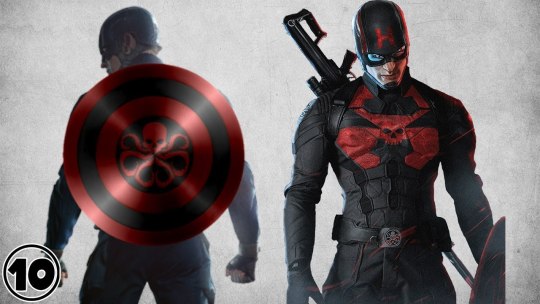

<-------------------------------->
Avengers: Age of Ultron (2015)
Here is yet another plot summary from IMDB about this movie.
“After a successful raid on a HYDRA base, Tony Stark and Bruce Banner create an Artificial Intelligence called Ultron, a peacekeeping protocol designed to help the Avengers protect the world from their enemies. But things go wrong when Ultron sees the human race as a threat and sets out to destroy it along with the Avengers. Now the Avengers, Iron Man, Thor, Captain America, the Hulk, Black Widow and Hawkeye, must reassemble to stop Ultron from causing mass destruction. Aside from this, the Avengers also must take on the powerful twins Quicksilver and Scarlet Witch as well as the new entity called Vision. Also, the Avengers find that things may never be the same again after discovering a power beyond their comprehension.”
Analysing...
This movie would be the same, as well as Pietro dying (RIP Pietro). But it is a possibility that Clint would not have a family, due to the fact that he was on the run with Tasha. Also, it is a possibility that Brutasha (Ship name for Bruce and Natasha) would still happen, but it is a low one as maybe during the events of CA:TWS, we find out that Clint and Tasha have a secret relationship that we don’t know of until the Black Widow movie, (which won’t be mentioned in this post but probably in a later post about the Clintasha ship).
With Bucky out of the way, this bit of the movie (courtesy of Wikipedia), “As Stark leaves and Barton retires, Rogers and Romanoff prepare to train new Avengers: Rhodes, Vision, Sam Wilson, and Wanda...” will happen without him. Barton would not retire and help Tasha with helping to train them. But the theory that Stark went to his safehouse (mentioned and visited in Endgame) could happen in this version. But of course, if the, before mentioned, characters in the first Avengers movie were to replace Bucky, then they would train the newbies with Tasha.
<-------------------------------->
Captain America: Civil War (2016)
Here is another important movie in the franchise! And here it is, another plot summary!
“With many people fearing the actions of super heroes, the government decides to push for the Hero Registration Act, a law that limits a hero's actions. This results in a division in The Avengers. Iron Man stands with this Act, claiming that their actions must be kept in check otherwise cities will continue to be destroyed, but Captain America feels that saving the world is daring enough and that they cannot rely on the government to protect the world. This escalates into an all-out war between Team Iron Man (Iron Man, Black Panther, Vision, Black Widow, War Machine, and Spider-Man) and Team Captain America (Captain America, Bucky Barnes, Falcon, Scarlet Witch, Hawkeye, and Ant Man) while a new villain emerges.”
Analysing...
Again, to be honest, this whole movie would’ve been the same. Yeah. That’s it. But number two, on the other hand...
...Would not happen at all. Well, actually, the Sokovia Accords were about the Battle of Sokovia in AoU, but the whole argument between Steve/Bucky and Tony wouldn’t happen. Unless either Carol, Scott (probably not Scott) or Hope would disagree with Stark, then it would go along with the original movie. But for the sub-plot (which is Hydra Cap killed Tony’s parents) would only be mentioned. So that’s mean Baron Zemo’s introduction would have to wait until the Falcon and Winter Soldier series. As of Spider-Man and Ant-Man’s introduction (of course, after Scott’s solo movie), that would be the same (unless of course Scott was the OG Avenger to replace Steve or Bucky).

<-------------------------------->
Avengers: Infinity War & Avengers: Endgame (2018 and 2019)
Two plot summaries from IMDB... (Points number 1 and 2 will be for Infinity War from both scenarios and points 2 and 4 will be for Endgame)
“As the Avengers and their allies have continued to protect the world from threats too large for any one hero to handle, a new danger has emerged from the cosmic shadows: Thanos. A despot of intergalactic infamy, his goal is to collect all six Infinity Stones, artefacts of unimaginable power, and use them to inflict his twisted will on all of reality. Everything the Avengers have fought for has led up to this moment, the fate of Earth and existence has never been more uncertain.”
“After half of all life is snapped away by Thanos, the Avengers are left scattered and divided. Now with a way to reverse the damage, the Avengers and their allies must assemble once more and learn to put differences aside in order to work together and set things right. Along the way, the Avengers realise that sacrifices must be made as they prepare for the ultimate final showdown with Thanos, which will result in the heroes fighting the biggest battle they have ever faced.”
Analysing...
So, for IW, Bucky would be back as Captain America to fight Thanos with the rest of the Avengers (except Hawkeye as he is playing tag. I’m just joking xD). But instead of him being the one to help Vision and Wanda, and take the others to Wakanda, it would’ve been Sam (maybe to foreshadow the fact he will become the next Captain America in Endgame). Steve, of course, will be awoken from his cryogenic sleep from Civil War and reunited with his buddy. But when Thanos snaps his finger, Steve would be the first person to be disintegrated (or maybe it would turn out the exact same as the original with Bucky going with Wanda etc... and Steve staying?).
As for Endgame, Barnes would probably lead grief counselling sessions for survivors (like Steve did). Then, the same thing will happen like the original. But the ending will change. Bucky will give the mantel of Captain America to Sam Wilson and maybe, go back to return the stones, find Red Skull, of course, and maybe go back to the first Cap movie to reverse the roles (so he fell off the train instead of Steve, like in the original MCU timeline).
For the second scenario, I think the movie will go along as normal. But if Carol replaced Steve as the “Captain”, then Fury would never need to send a distress signal to Carol, as she is already there (and the mid credit scene is no longer needed, but I think that wouldn’t happen, due to the fact that Carol is too strong when she is put up with a Norse god, a Gamma radiation monster, two SHIELD assassins with no superpowers and a tech genius with a sarcasm as a superpower. Of course, for Steve and the cryogenic sleep would never happen because no one rescued him in Civil War and he would still be with Hydra.
Endgame, however, would be totally different to the first scenario. There would be no “grief counselling sessions”, only Banner, Stark and Lang would go to New York (which means no Cap v Cap fight). It is possible that the “going back to the 1970s” plan could work with just Stark, but Scott would go with him as well. Unless Carol went with them, then the Cap v Cap fight (with Carol instead of Steve) would still happen. Both the funerals for Stark and Tasha would still happen. But who would return the stones? Probably either Scott or Barton.
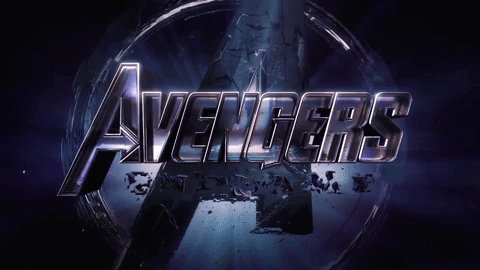
<-------------------------------->
Now time for the last part (finally!), the future movies and TV shows!
First up is the Falcon and the Winter Soldier. There isn’t an official synopsis for the show yet, but here is a Wiki entry...
“After being handed the mantle of Captain America at the end of Avengers: Endgame, Sam Wilson teams up with Bucky Barnes in a worldwide adventure that puts their abilities to the test.”
This part will be a combination of the two scenarios to save time.
The casting of the show has only got 4 characters, in line for the show. Sam Wilson (Anthony Mackie), Bucky Barnes (Sebastian Stan), Baron Zemo (Daniel Bruhl) and Sharon Carter (Emily VanCamp).
And, of course US Agent (the “fake” Captain America) played by Wyatt Russell.
For scenario 1, the series will play out the exact same way (depends on if Bucky goes back in time to fix everything).
Scenario 2, however, would be very different. Sebastian would be missing from that cast list, but would be replaced by Evans (who would play Hydra Cap once again). As for Zemo, this would be an introduction to the MCU (unless he would get introduced in the Black Widow movie).

Secondly, it’s the Black Widow solo movie and other TV series (such as the Hawkeye series and WandaVision). Here is a unofficial synopsis of them (that means it’s not official by Marvel Studios).
“Following the events of Captain America: Civil War, Natasha Romanoff finds herself alone and forced to confront a dangerous conspiracy with ties to her past. Pursued by a force that will stop at nothing to bring her down, Romanoff must deal with her history as a spy and the broken relationships left in her wake long before she became an Avenger.”
“In April 2019, a limited series focused on Jeremy Renner's Clint Barton / Hawkeye was reported to be in development, with the plot involving Barton passing the mantle of Hawkeye to the character Kate Bishop.”
“Set after the events of Avengers: Endgame, Wanda Maximoff and Vision begin to suspect things are not as they seem as the two live their ideal suburban life.”
Even though, we don’t know exactly what will happen in the future of the MCU (especially Phase 4), I cannot say what would happen if Steve fell from the train instead of Bucky. But maybe check in with us in about 4 to 5 years when these TV series/movies have come out fully.
So, that’s it for this scenario! Hopefully you have had fun reading this, as much as I have had writing this. If you have any suggestions on other scenarios, just send an ask in to us!
This is Rebecca signing off.
Until next time!

11 notes
·
View notes
Text
Hard-Boiled Fantasy
So a conversation from @firefly124-writing about the TV show Supernatural and where it exists in relation to horror got me to wondering about the origins and trappings of what we now consider the “urban fantasy” genre, which I realized I haven’t really dug that deeply into before.
That sounded like a fun rabbit hole to fall down, so I figured I’d do a bit of digging!
So the initial question was: Is Supernatural a horror show?
It kind of seems like it should be, right? There’s ghosts and demons and all manner of other things that go bump in the night.
But structurally, it sure doesn’t seem like a horror. In horror stories, the monsters usually hunt the characters, not vice versa. And the story beats are all wrong. In fact, if you subbed out monsters for regular criminals, you’d pretty much just have a crime drama.
And in that respect, Supernatural is hardly on its own. In fact, there’s a ton of supernatural crime fiction - from Laurell K. Hamilton’s Anita Blake series, to Jim Butcher’s Dresden Files, to Angel (not so much Buffy, more on that in a minute) and many, many more besides. In fact, the whole genre of “urban fantasy” seems to have some hefty overlap with supernatural crime stories – but are the two interchangeable? Or is there more to it?
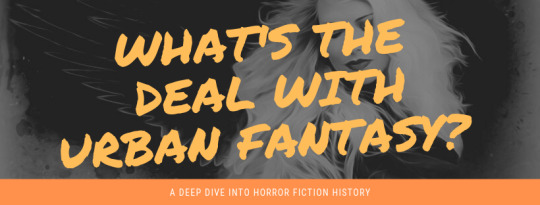
First Off: What the Heck is Urban Fantasy?
Our benevolent overlords at Barnes & Noble compiled a handy list of recommendations for Urban Fantasy series (https://www.barnesandnoble.com/blog/sci-fi-fantasy/12-urban-fantasy-series-to-binge-read/), and looking at them side-by-side, we can begin to see some trends:
Super-powered and/or badass main characters
Serial format that lends itself to a “monster of the week” type storyline
Crimes and/or supernatural political intrigue
But are they, like, the defining traits of the genre? Let’s investigate further..
According to this article from Writer’s Digest, there are a few key ingredients: setting as character, a central mystery, character-driven story (often in first person narration), and a romance subplot - https://www.writersdigest.com/online-editor/5-elements-urban-fantasy-novels-must
But I take some issue with that. I think there are a fair number of stories that feel like they should qualify as “urban fantasy” without ticking off all of those boxes. Setting aside everything that could be considered “paranormal romance” - your Twilight and True Blood and whatnot (Buffy slots here better, maybe)- there’s still plenty of things that seem like they should be urban fantasy, like Neil Gaiman’s Neverwhere or Lev Grossman’s The Magicians or Charles de Lint’s Newford series, or War for the Oaks by Emma Bull.
But it’s OK - urban fantasy is large, it can contain multitudes.
The real question is, why is so much of it just supernaturally flavored crime fiction?
The Origins of Crime Fiction
Crime fiction/mystery/thriller is the second-most popular book genre, coming in right behind romance for sales: https://bookstr.com/article/book-genres-that-make-the-most-money/
With that in mind, it kind of makes sense that you’d want to fold crime fiction elements into other types of stories. A genre that popular and ubiquitous is going to have lots of familiar tropes and appeal to a lot of people.
And as it turns out, crime fiction has its roots tangled quite deeply with horror fiction – so deep, in fact, that the granddaddy of all detective stories is none other than Edgar Allan Poe.
Poe’s character C. Auguste Dupin – from famed stories like “The Purloined Letter” and “The Murders in the Rue Morgue” – lays down the template for detective stories in the 1840s, from the eccentric gentleman of leisure turned detective to the impossible crimes explained by the power of deductive reasoning. That template would then be lifted almost wholesale by Arthur Conan Doyle in the 1880s with his Sherlock Holmes stories.
And, really, it shouldn’t be a particular shock that detective stories started to really take root in this time period. In a post-Enlightenment world, we were collectively struggling with our relationship to nature, science, industry and the mysteries of the universe. Even as we continued to fear things that went bump in the night, we increasingly sought to rationalize it all.
There was also, of course, more crime – and, thanks to developments in both city living and news reporting, people were aware of those crimes. Jack the Ripper captured public imagination and inspired terror with his murders in 1888, about the same time as H.H. Holmes was running his murder hotel in the United States.
So with that in mind, is it any surprise that crime fiction entered its first Golden Age in the 1920s and 30s – a time when organized crime was at its peak thanks to Prohibition?
What is especially interesting to me is that even as horror waned in popularity in the 1940s and 50s, crime fiction was entering a second Golden Age thanks to Film Noir and all of its now-familiar tropes – from world-weary detectives to beautiful dames in trouble and rain-drenched streets.
Some reading you may find interesting on that topic, especially in regards to how the Noir genre survived the Hays Code: http://hayscodeandfilmnoir.blogspot.com/ and https://vicolablog.wordpress.com/2017/06/05/film-noir-and-the-hays-code/
Putting it All Together
So with this historical context firmly in mind, I think we can make a few logical conclusions.
First, I think it’s safe to say that people like crime stories because they tap into cultural fears and fascinations – crime is something that we are all aware of but which most of us have fairly little hands-on experience with, so it’s only natural that we’d be morbidly curious about it. Crime is interesting because it’s dangerous and taboo, and that makes for good storytelling.
Second, it also seems safe to say that many people prefer crime stories to horror stories because they are more comfortable to consume:
The hero is usually empowered rather than powerless
Justice is usually served at the end (whereas horror tends to have a bleak outlook)
The overall feeling can be fun/adventurous/even silly and largely safe, despite the presence of a murder – see the entirety of the “cozy mystery” genre
Mysteries tap into a puzzle-solving, intellectual aspect of the audience as opposed to a visceral/primal response
Now obviously these lines are drawn in ever-shifting sands. There are plenty of horror stories that are primarily intellectual, and crime fiction can be plenty bloody and visceral. And that’s not even touching on the cross-overs like Thomas Harris’s work or the entirety of giallo filmmaking: https://vicolablog.wordpress.com/2017/06/05/film-noir-and-the-hays-code/
But by and large, speaking in general terms, I think we can make an argument that there is probably a somewhat wider audience for crime/detective stories than for horror specifically because the intended purpose of horror is to make the reader/viewer uncomfortable, and a whole lot of people dislike feeling uncomfortable.
So with all of that in mind, I don’t think it’s too much of a leap at all to see how our modern understanding of urban fantasy as a supernatural crime thriller got its start.
By taking familiar horror tropes that have slipped into pop culture – monsters and demons and zombies and whatnot – and then folding them into the comforting tropes and narratives of popular crime fiction, creators can delve into everything that is cool about horror without the icky, alienating bits that make people feel bad.
(I’d also posit that this type of storytelling is gaining an increasingly powerful foothold in modern times because it side-steps some of the more problematic aspects of realistic crime fiction – ie, the socio-economic status of most criminals, the corruption of the legal system, etc. By making fantastical creatures the perpetrators, we can skip the discomfort of due process and human rights and focus on the fun parts of solving crimes with a clear conscience)
But that’s just one opinion, from an admittedly biased horror blogger. I’ll leave you with this final essay on the topic, which follows a similar path and draws a different (but quite interesting) conclusion – https://carriev.wordpress.com/2012/04/16/the-long-and-diverse-history-of-urban-fantasy/
PS - if you like these deep dives and want to support me in doing more of them, don’t forget to drop a tip in my tip jar: Ko-fi.com/A57355UN
174 notes
·
View notes
Text
Pile of stuff concerning what happened to Loki between Thor and The Avengers
Originally posted on r/FanTheories
https://inforapid.org/webapp/webapp.php?shareddb=IAxUFHnwkGJSYMj9OFbT8mRl5goHm9SC2qHbWw4knO1cng5qI5Wrg48nP1MdgbWlJmHj6UpwbN343IqnstQUwxIIO01M5Rvb
As it does not escape my notice that I’ve created a digital version of this meme, some navigation help for anyone who needs it:
Mouse over/tap an item or relation to view its description
For items with the yellow ‘Note’ label, select the node and then 'Notes on Item’ in the side menu to view an additional notes page
If an item has a globe icon it the top-left corner, click it to open a webpage
'Adjust View’ in the side menu has controls to zoom in/out, increase/decrease the distance between items, and filter items or relations by category
Relations (and items) are color-coded by type: solid green lines are for in-universe evidence (light green connects evidence to the theory it supports, while dark green connects pieces of evidence that should be looked at together), purple dotted lines denote parallels, and dark red lines mark cases of “one of these things is not like the other”
And an overview of the theories contained therein:
First, the central piece of tinfoil around which all other tinfoil is arrayed: remember how, at the end of the first Thor, Loki was pathologically obsessed with gaining his father’s approval? And how, when he next showed up after vanishing for an entire year, he’d gotten mixed up with a guy who keeps a menagerie of adopted children? And how, during his argument with Thor on the mountaintop, he said this?
Loki: Did you mourn? Thor: We all did. Our father– Loki: Your father. He did tell you my true parentage, did he not?
Loki: I’ve seen worlds you’ve never known about! I have grown, Odinson, in my exile. I have seen the true power of the Tesseract and when I wield it—
Tom Hiddleston: There’s a bit where Thor says, “We all mourned! Our father…” and Loki interrupts him and says, “YOUR father.” And it’s that sense of 'don’t include me in this anymore. I have no relation or connection to you.’ It’s his way of saying 'I’ve let go, I’m gone, I’m on the outside of the fence, I’m happy here, I don’t want to come back in.’
If I may take a minute to get out some of my extremely complicated feelings on this, while there’s a bunch more evidence in favor of Loki having been another of Thanos’s children that can be viewed on the mind map, I want to highlight this pair of quotes because it’s everything implied by the words “Your father” that makes it into a devastating punch in the stomach which draws on both halves of Loki’s Woobie, Destroyer of Worlds characterization: his genuine love for his family is his primary redeeming quality and that he forswore it like this puts the terrible moment when he first knelt before Thanos and pledged himself to the Mad Titan’s service firmly into archetypal Faustian sell-your-soul territory, but when you consider the straits he was in at the time and the implication that Thanos initially ensnared him not through promises of power but by preying on him emotionally, it’s a very human kind of tragic mistake.
youtube
The other mitigating factor is that based on everything we’ve heard from Thanos’s other children, it’s a safe bet that he did in fact do unspeakably horrible things to Loki too – indeed, noticing the resemblance between the existing theories about Loki having been tortured/brainwashed and Gamora’s “He took me, tortured me, turned me into a weapon” was what prompted the above realization in the first place. (It’s reminiscent of Theon’s storyline in ASOIAF/GOT: yeah, he betrayed his adoptive family and did some generally awful stuff, but no one deserves what happened to him.) It also bears emphasizing that accountability cuts both ways: one of the key takeaways from the previous bullet point is that the suffering Loki went through doesn’t absolve him of responsibility for his villainous actions, but the other side of the coin is that Loki’s partial complicity doesn’t absolve Thanos of responsibility for the choice he made to take a broken, desperate young man who’d just lost everything and turn him into the rabid animal we saw during The Avengers, and I dearly hope that exploring the rich font of psychological horror that is that time period will erase any remaining doubt that Thanos’s claims of acting For The Greater Good are nothing but empty, egotistical, self-righteous posturing and everyone in the audience who insists on taking them at face value is being duped just as Loki was.
Stephen: No. I mean, come on. Look at your face. Dormammu made you a murderer. Just how good can his kingdom be?
As for where this is all going, I believe there’s a good chance that the Loki Disney+ series will be where they finally address this as a. the split timeline Loki the series will be following is still fresh from his time with Thanos and it will therefore have to explain what happened if we’re to understand the kind of headspace that he’s in at that moment and b. Tom Hiddleston has revealed that the series will also clarify whether or not Loki really is dead in the main timeline, and everything I have so far indicates that understanding the nature of his original pact with Thanos is essential to understanding both Loki’s choice to die and Thanos’s choice to kill him (see the 'Pledge of fidelity’ and 'Limited use’ notes pages on the mind map). Character-wise, I think one of the points of emphasis will be that Loki’s death in Infinity War doesn’t wrap up his story as neatly as it may appear to on the surface; truly completing his redemption arc will require him to confront this part of his past in full, and with it his guilt over everything he’s done and his fear that he’s wrecked his life and relationship with his family so thoroughly that he can never, ever fix them.
Loki: Can you? Can you wipe out that much red? […] Your ledger is dripping, it’s gushing red, and you think saving a man no more virtuous than yourself will change anything? This is the basest sentimentality. This is a child at prayer… PATHETIC! You lie and kill in the service of liars and killers. You pretend to be separate, to have your own code. Something that makes up for the horrors. But they are a part of you, and they will *never* go away!
An additional giant red flag indicating we really should be asking more questions about that time gap is a group of lines in The Avengers which reveal that Thanos taught Loki how to use the Tesseract.
The Other: The Tesseract has awakened. It is on a little world. A human world. They would wield its power, but our ally knows its workings as they never will.
The Other: You question us? You question HIM? He, who put the Scepter in your hand? Who gave you ancient knowledge and new purpose when you were cast out, defeated?
Loki: I’ve seen worlds you’ve never known about! I have grown, Odinson, in my exile. I have seen the true power of the Tesseract and when I wield it— Thor: Who showed you this power? Who controls the would-be king?
Sharing that kind of knowledge and power with someone as volatile as Loki strikes me as an monumentally terrible idea (and as much as I don’t want to be the person who throws a tantrum because their fanfic didn’t come true, I’m kinda salty that Thanos was defeated without it coming back to bite him in the ass), which leaves me wondering what Thanos hoped to gain that he believed would be worth the risks. My thoughts on that particular sub-puzzle are still somewhat hazy, but my basic sense is that there’s something weird going on between Loki and the Tesseract and wanting to exploit that connection is one of the reasons Thanos went to all the trouble of breaking him into submission.
Loki: So I am no more than another stolen relic, locked up here until you might have use of me?
The other reason for Thanos’s interest in Loki ties back to all that emotional twistiness I talked about earlier: he planned to leverage Loki’s anger and resentment towards his family in a bid to destroy Odin and Asgard from the inside.
Zemo: An empire toppled by its enemies can rise again. But one which crumbles from within? That’s dead… forever.
As a prelude to this, during The Avengers Thanos had additionally tasked Loki with killing Thor as a way to prove his loyalty and destroy the last remaining shreds of his own humanity, a test Loki failed because he still loved his brother too much.
Coulson: You’re going to lose. It’s in your nature. […] You lack conviction.
What’s more, Thanos anticipated this, and the Scepter’s influence over Loki was aimed at forcing him to go through with it if he refused.
Loki: I won’t touch Barton, not until I make him kill you! Slowly, intimately, in every way he knows you fear! And then he’ll wake, just long enough to see his good work, and when he screams, I’ll split his skull!
Lastly, even with Infinity War having established that Thanos simply gets off on emotional torture, that he would go out of his way to fuck with Odin personally by turning his second son against him leads me to believe there was a special hatred there stemming from some as-yet unrevealed history between the two. I mean, when I picture the alternate universe where Thanos shows up to attack Asgard with a corrupted Loki in tow like “You screwed up so badly that he chose me as a father figure over you” …that isn’t something you say to a complete stranger.
GRRM on writing villain POVs: That’s a comic book kind of thing, where the Red Skull gets up in the morning [and asks] “What evil can I do today?” Real people don’t think that way. We all think we’re heroes, we all think we’re good guys. We have our rationalizations when we do bad things. “Well, I had no choice,” or “It’s the best of several bad alternatives,” or “No it was actually good because God told me so,” or “I had to do it for my family.” We all have rationalizations for why we do shitty things or selfish things or cruel things. So when I’m writing from the viewpoint of one of my characters who has done these things, I try to have that in my head.
#mcu#loki#thor#thanos#odin#loki's missing year#theory#analysis#mind map#i swear i will turn this into an actual essay one of these days
2 notes
·
View notes
Text
Elsa’s Girlfriend and the Bottom Line [an essay]
It is safe to say that – even nearly six years on from its release – Frozen is still a phenomenon. Despite its over-saturation and the backlash it inevitably faced because of it, Frozen is still a strong film from Disney with great characters, beautiful songs, and a lovely core theme about the power of familial love.
(its only real stumbling block in this blogger's opinion would be its case of 'twist villain syndrome' but we'll just gloss over that for this post.)
Although it is certainly true that this is a film for every age group, it continues to strike a chord the most with kids. I work in a daycare with children ages three to five (most of whom were not even born yet when Frozen was released) and it is still one of the most requested movies for me to show them. They argue over who gets to play as Elsa and Anna during dress up time, and I have even encouraged some of the young boys that it is perfectly fine to like a 'girl movie' if you like the characters so much.
Even though both sisters in the movie are integral to the plot, and I tend to speak about them as a unit, for most of the kids in my class it's all about Elsa. Literally, they don't even call the movie Frozen, they just call it 'Elsa'.
It brings back memories of that Christmas season in 2013 when I went to the Disney store and all of the Elsa dolls were gone, leaving most of the Annas still on the shelf (which made me quite sad, since I tend to relate to Anna more myself).
It's not a stretch to say that Elsa is not only the breakout character of her movie, but a huge part of its crazy popularity. Everyone knows her, knows her powers, and knows her iconic song (whether or not they like it.)
She is an icon to so many people across the world, and as such thee are certain aspects of her future in the Frozen sequel that many people would like to have addressed. Will she continue to harness her powers or perhaps learn from where they came? Will she continue to break down the walls she built up around herself to let her sister closer to her? And possibly the biggest and most controversial question: will she ever find romantic love and if so, will it be with a man or a woman?
While there is something to be said about the fact that Elsa is a strong, independent queen who don't need no significant other of any sort (and as previously stated there are other aspects of her story that need to be addressed just as much if not more so than who she's courting), there is merit in the theory and/or hope a good portion of her fans have that she just might be into girls.
While researching for this post, I read two of the children/middle grade Frozen chapter books: A Frozen Heart by Elizabeth Rudnick and A Warm Welcome by Erica David.
In Frozen Heart, we follow both Anna's and Hans' perspectives during the events of the movie, and during one of the portions from Hans' point of view we learn that Elsa has not only done what we have seen her do (close the gates of the castle to her subjects and isolate herself as much as possible) but evidently turned away any potential suitors looking to court her.
And in Warm Welcome, Elsa an co. travel to the kingdom of Eldora where they meet the queen of that land named Marisol and we see from Elsa's point of view that she finds the queen's name beautiful. Now, one could take that however they wanted, but when I showed that part to my friend she said 'Wow Elsa, how very gay of you.”
Then of course there is the queer-coded subtext of Elsa's story. Being told that she should hide her powers and conceal her true self from the world until she is finally able to accept herself in the now forever-ingrained-in-our-brains earworm.
Now the production team of the movie could have spun her story another way to make the powers more explicitly nothing more with no perceived allegory other than 'being different is okay'. BUT one exchange Elsa has with Anna after they meet up again post-Let It Go makes one wonder. She explicitly says that she left Arendelle so that she could 'be who she is without hurting anybody'. That alone colors her powers in a different light, and makes them far much more than a simple magical ability and closer to the same type of vibe one gets from the subtext of the X-Men.
So, there is definitely some evidence to support the hypothesis that Elsa could be sub-textually queer, but this blog post is centered around the big question: Should it be overtly canon?
While this blogger would be perfectly happy to continue her headcanon that Elsa is asexual (possibly aromantic) and will make it through the entirety of Frozen 2 with no love interest whatsoever, I can also see the other side of the debate.
Most would agree that a female-led animated film hardly ever has a protagonist not fall in love by the end. And when they do they are usually children and so don't need a love interest (Moana and Coraline to name a couple), but they do happen occasionally. Elsa would still be an amazing paragon of female empowerment if she were to remain single, leaving the romantic love story to that of her sister and Kristoff.
BUT what is also abundantly clear is that we have yet to see a main character in an animated film fall in love with a person of the same gender. It would be a game-changer in the worlds of animation and family entertainment, for sure. And while some would say that that type of thing is unsuitable for children to see, most of those people are perfectly fine with the plethora of heteromantic pairs so abundant in animation. (If the argument is that kids shouldn't see romantic love between anyone that would be a different thing, but I have never heard any outcry about that.)
Were Disney even to approach it, there is also the question as to whether or not Elsa is the right character to make that particular story choice. Yes, she is a prime candidate, but as she is one of the most beloved Disney characters possibly ever, there would inevitably be some backlash to her and with that to the Frozen brand (because remember, Disney is foremost all about making money).
The other option some have some up with -to create an entirely new animated film where we star a same-sex couple – has merit as well. It could potentially introduce not one but two new princesses to the Disney Princess lineup and do all of the things that the LGBTQ community and its allies want out of Elsa while giving us a brand new, possibly totally original new story.
This blogger would be completely on board for that as well, but there is also in this idea the possibility of a backlash, or even a boycott. And if the first same-sex animated feature doesn't do well at the box office or in the merch sales, there might not be another one for a long time - if ever again.
Frozen 2 on the other hand – however the quality of the film ends up being – is almost a guaranteed hit before it even comes out. It is sure to rake in both ticket and merch sales by the boatload, even if they do decide to give Elsa a love interest of any gender.
So, the concluding statement should be in favor of giving Elsa a same-sex romantic plotline, right? If they're going to actually do it, doing it with this movie would pose the least risk to the bottom line.
There is one more thing to consider, however: The story.
One of Disney's adoptive child Pixar's founding rules is that 'story is king'. That means that whatever will make the story as a whole stronger and the best it can be is what should be done for any film.
(However you feel about Pixar's latest outings, that's still one of their philosophies).
So, the real final conclusion of this post/essay is that when it comes down to it, Elsa should have the storyline that best fits the overall plot and make Frozen 2 the strongest movie it can be. They could always just throw in a girlfriend for her with no real thought other than 'they want representation'. That is what inevitably failed the attempt of ABC show Once Upon A Time when they decided to introduce a same-sex romance.
If the very first female-female romance in an animated film is going to happen with Elsa, it needs to feel natural and integral to the story. It can't feel tacked-on just for the sake of having it.
The same could be said of giving her a male love interest, or allowing her to remain single. As long as it fits the story and Elsa remains the wonderful character that so many have fallen in love with, any outcome would be fine.
I'm all for Elsa opening up her heart to new experiences like romantic love, as a fan I want that for her. I want her to stay close to her sister and become more confident in her powers, and if the story supports it, find love with whomever her heart desires.
In this blogger's opinion though, anything other than a male love interest for her would be preferable. We already have so very many of those stories told already (even in the same franchise). Elsa deserves something different, something as groundbreaking as she is.
Whatever is in store for our Queen of Arendelle, I can tell you I will have my ticket to the first screening I can find of the sequel in order to find out.
#frozen#elsa#queen elsa#disney#disney animation#lgbtq#give elsa a gf#asexual#homosexual#gay representation#give elsa a girlfriend
102 notes
·
View notes
Text
qb anime of the year list 2018
Anime of the Year 2018 - the year of girls going to aquariums together
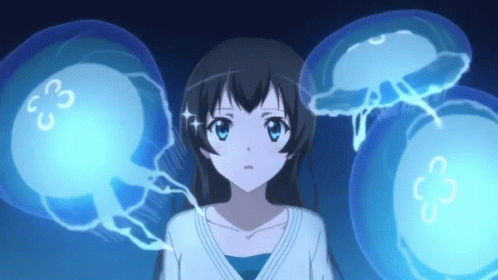
I’ve seen at least one person who claimed that 2018 was the best year for anime in recent memory and I’m inclined to agree. A large majority of my top ten list is shows that I would consider perfect and even shows that blew away what I thought was possible in the medium. It was a revolutionary year and makes a strong argument that anime wasn’t a mistake after all. - qb
#1
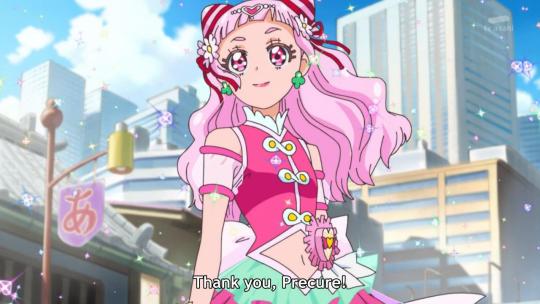
Hugtto! Precure blew away my expectations every week for close to a year. I don’t exactly know what to say about it here, since this isn’t the last time I’ll talk about it for sure. It doesn’t even end in 2018, but it was such a huge part of my 2018 in anime that it would be inaccurate to not include it. The only way I can think to explain Hugtto! Precure is to talk about the Netflix She-ra reboot. She-ra’s a pretty basic modern Dreamworks cartoon, with some interesting ideas thrown in and likable characters, but mostly held back by what they could realistically allot for production. Because of this limitation, She-ra goes hard on a single perfect episode (if you’ve seen it, you know which one) that stands out in a big way and shows the full potential of what they set out to make. Usually, Precure is lucky to get a handful of these stand-out episodes in a season, and most of the time just gets by, due to being an annual series that can never, ever take a break. Normally, the first few episodes of a Precure season can be counted on to be strong, but the realities of anime production being hella tough inevitably catch up.
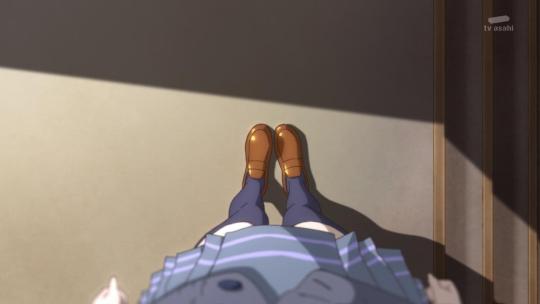
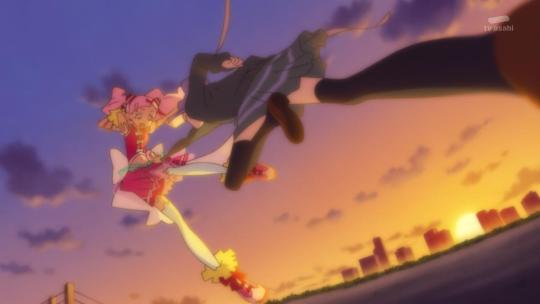
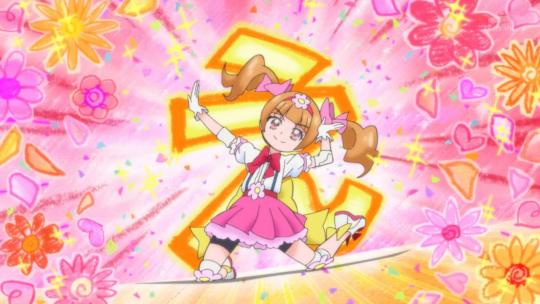
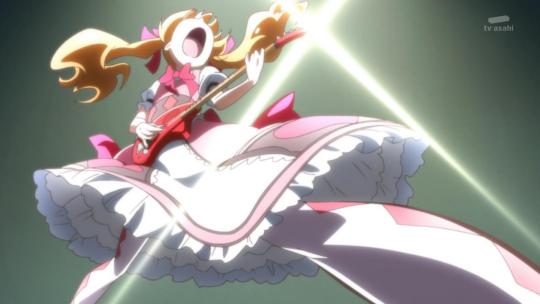
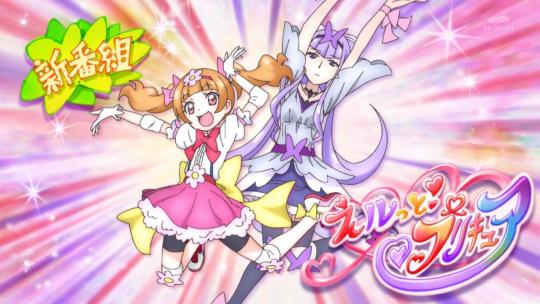
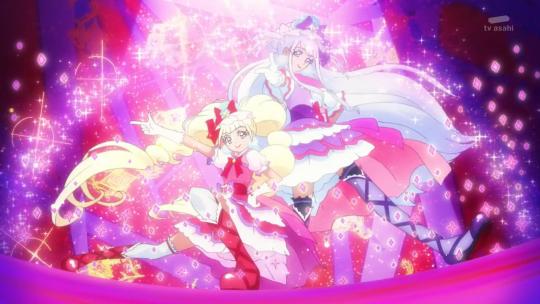
Hugtto! Precure started with an incredible opening arc, then never let off the gas pedal. Nearly every episode of Hugtto is a stand-out, never-before-seen, innovative tour-de-force. The combination of production miracles that resulted in Hugtto has been talked about by me on this blog before, (http://vanilla-blessing.tumblr.com/post/176000267859/hana-is-getting-unstable-a-pink-precure) but the length of time that Hugtto stayed in the paint, going extremely hard every single week with few exceptions, was just absurd. Every season of Precure has one or two peaks, sometimes a good season gets lucky and has even more, the best seasons bat a solid average, but are still expected to be held back by reality. Coming out of the fifteenth season of Precure with a majority of the best episodes in the entire franchise isn’t something that I can wrap my head around, but it definitely happened, mostly in 2018. It’s simultaneously a love letter to the franchise’s past, present, and future made by the biggest Precure fans on the planet, and it’s unquestionably the best season. Hugtto threw what we all knew was true and had accepted about Precure clear out the window, retroactively made older seasons better, watered my crops, brought world peace, ect.
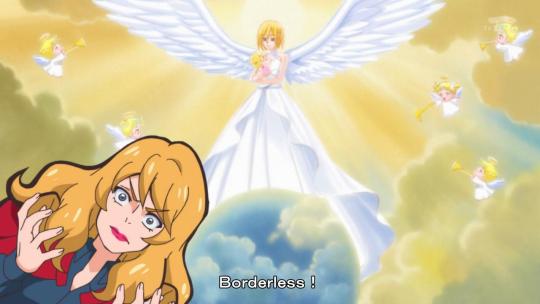
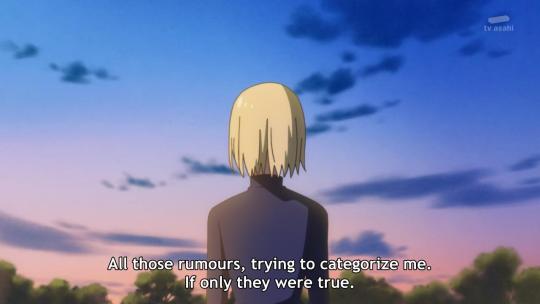
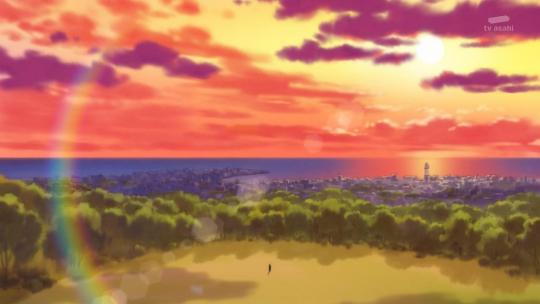
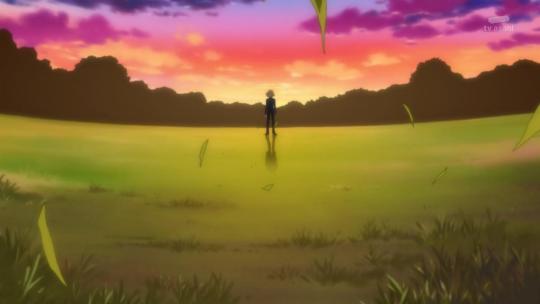
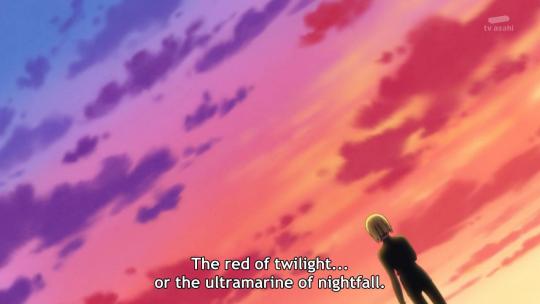
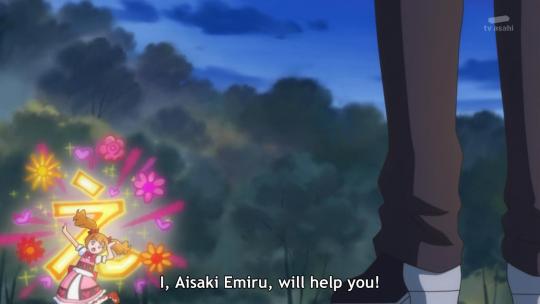
Oh yeah and boys can be cures now.
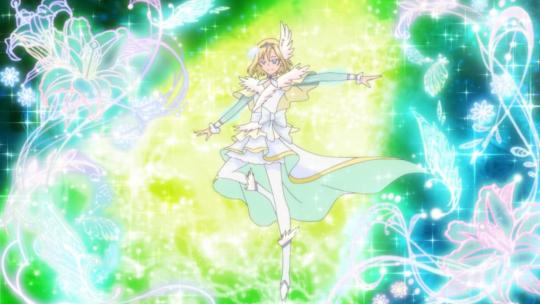
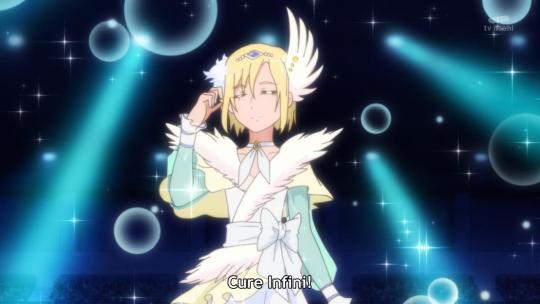
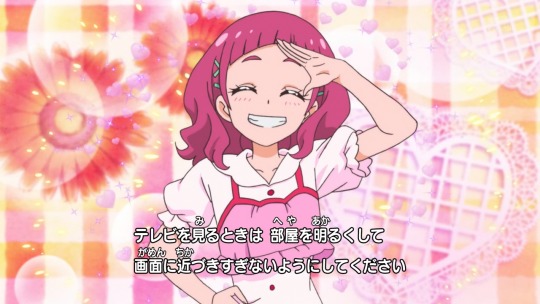
#2
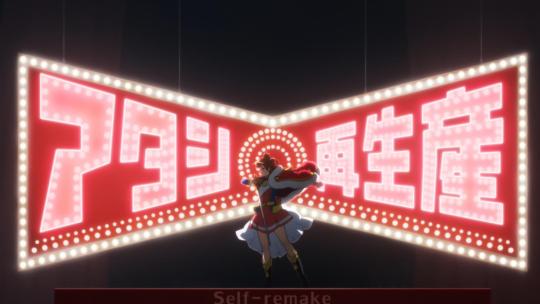
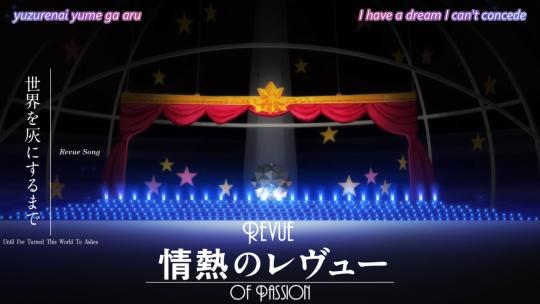
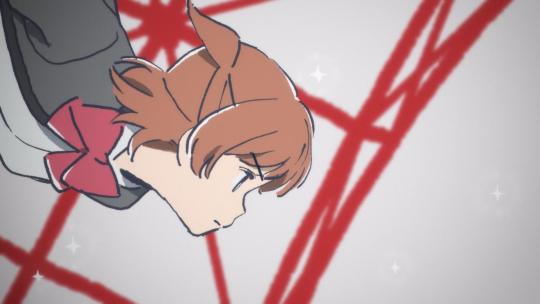
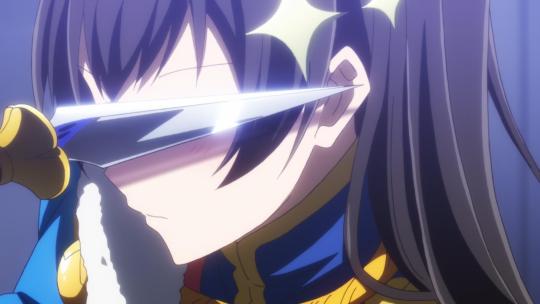
I’m definitely not done with Revue Starlight and this won’t be the last time I talk about it. Revue Starlight essentially carried the Summer 2018 anime season on its back. Starlight absolutely dominated my anime watching schedule; my week was seriously just waiting for and watching different translations and releases with every other show being almost incidental, far less important than waiting for the song lyrics to get translated for an episode I had seen three times already. I won’t get into everything here, since I’ve already talked about it on this blog after all (http://vanilla-blessing.tumblr.com/post/179023723689/subtext-is-for-cowards-revue-starlight), but I need to reiterate that it was such a commanding, unique, stylized experience and didn’t drop a single episode in its entire absurdly high-level production. The only reasonable explanation for this is devil magic, and hell, it was worth it. Revue Starlight is probably in my top 5 anime of all time and I wouldn’t get this list out if I said everything I wanted to say about it. It’s great. Watch it twenty times.
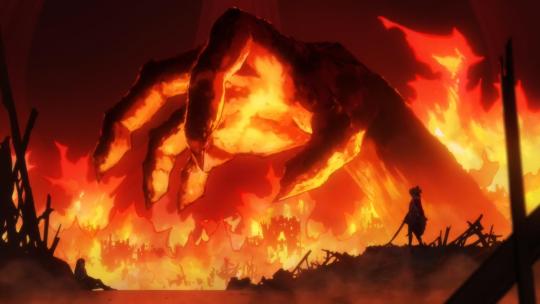
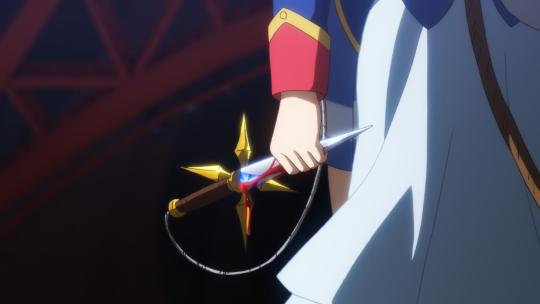
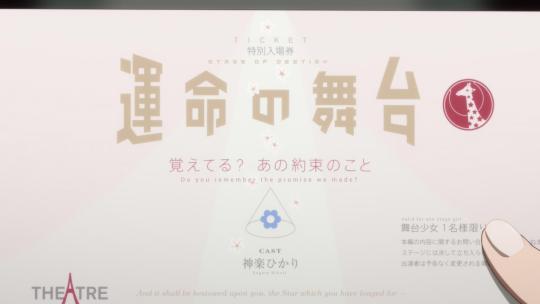
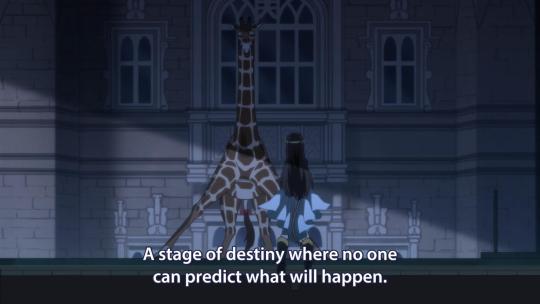
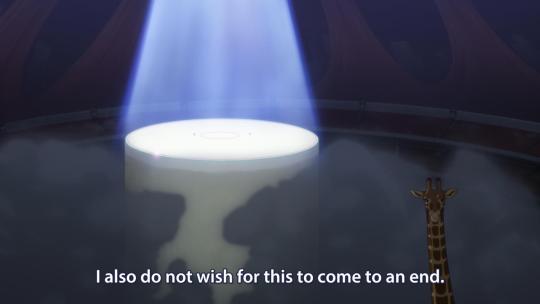

#3

Pop Teen Epic, or Hoshiiro Girldrop, was the most wildcard that has ever been in seasonal anime, and could have been absolutely anything. What none of us predicted was just how much of anything this show would be, encompassing an unprecedented range of artists, voice acting talent, and whatever AC-bu are, each giving their very individual takes on a self-described shitpost comic strip, sometimes covering the exact same material two or three times, with no regard for any sort of cohesion or structure.
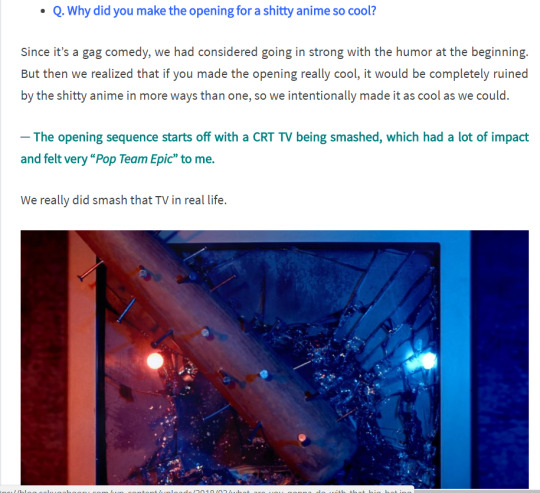
Nothing about this idea should have been funded, nothing in Pop Team Epic has any reason to work, and as a straight adaptation probably wouldn’t have worked. PTE spun gold from trash through the raw effort of artists doing their own thing, which captures the original spirit that made the formerly-cancelled comic popular in a way that’s much too intelligent for haters to understand. Also it got a dub, which is the most ridiculously bad idea i’ve heard in my life, and it owns that it happened.
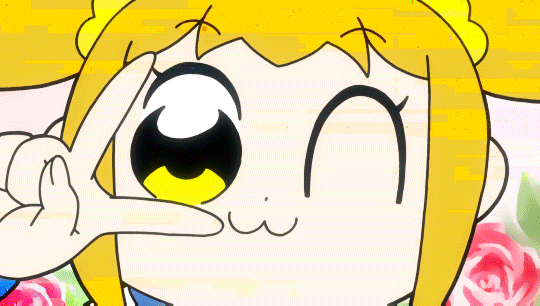
#4
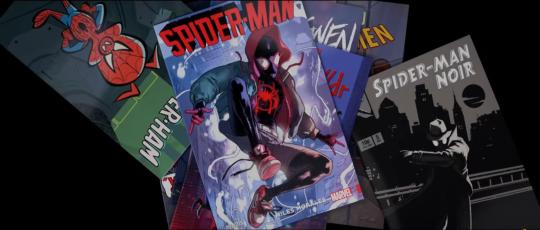
Spider-man into the Spider-verse is legit the best comic book movie ever made. It’s a fun, expressive twist on the most tired superhero origin story of all time, and showcases some of the most sssssssssstyle and raw, real emotion I’ve ever seen in animation. Its particular selection of influences is brilliant and poignant, rising far above the simple fanservice you’ve come to expect from Spider-man. The unrelenting individualistic spirit of this movie will stick with you the longest in the soundtrack, bravely incorporating a side of pop music that you don’t usually get to see in big-budget productions, pulling soundcloud rappers out of their grody (i’m told) dens into the spotlight with equal importance alongside the heroic score. Spider-verse is all about establishing your own unique flavor, and it manages to overwrite every other entry in this cursed franchise with its bold taste.
youtube
youtube
#5
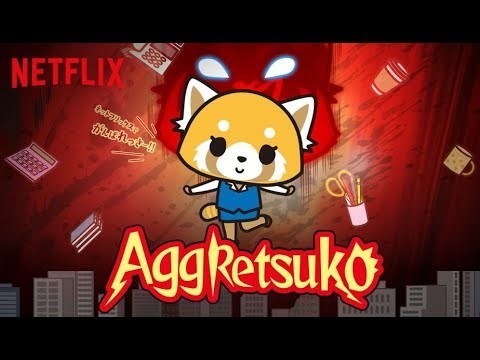
It doesn’t make sense to me how amazing Aggretsuko’s dub is. The impeccable timing of each line, the perfect integration with the comedy, and the optimal length of the episodes are all far beyond what I expected from a Netflix show. It not only converted the original series of shorts that I already had on my top 10 the first year into a godlike longer series I didn’t know I wanted, but went to the effort to bring real metal singers in for the karaoke. Honestly just repeat everything I said in my 2016 list and multiply it by five. I hope they make more. They’re making more.

#6
youtube
I was pretty slow to pick up anime in the Winter 2018 season, but I never missed Hakumei and Mikochi, maybe because it was like, the only simulcast on my favorite online anime streaming subscription service HiDiVE. The subs weren’t great, and it certainly wasn’t all that popular, but it was just the relaxing show I needed. Hakumei and Mikochi brought me back to my favorite non-racist parts of the Redwall series of books: friendly animals, delicious foods, alcohol, and rustic songs. I was ready to put it on my list for simply being a cute healing foodie anime, but to my surprise, it had much more in store within its tiny world: stark confrontations with mortality, a shy riverside necromancer, the inexplicable remake of The Raid: Redemption in miniature, fashion trends, frogs, carpenter weasels, carpenter skeletons, ghost celebrations, a country beetle with lofty dreams. The list of memorable people, places, and things contained in the gnomish roommates’ tiny world goes on and on.
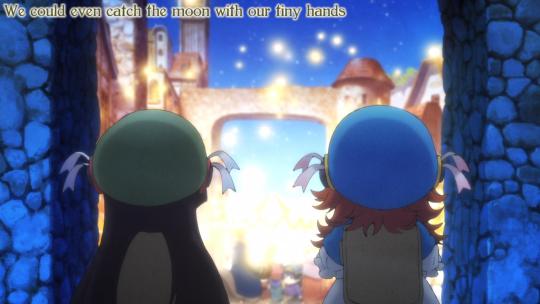
Masaomi Ando’s directing went completely along with the storybook aesthetic, maybe even to an overall detriment, which is exactly the kind of reckless commitment to style I love to see. The distinctive paneling, constantly gorgeous backgrounds, and deliberate pacing perfectly captured the imaginative stories I loved to read as a kid, but with more alcohol, and more sophisticated themes under the surface. Even something anime rarely get right, endings, were perfectly capstoned every week with a short digest that explored more of the history, legends, and very personal lore of their small, unique world. At its core, Hakumei and Mikochi is the calming story of tiny roommates you think it is, but it’s also so much more. They have day jobs and get drunk and remodel their house after it explodes that one time. They gamble dangerously to escape a blizzard, help a photographer give herself a little credit, and rescue their neighbor from a fancy grave of her own making. By the end of the show Hakumei practically built half a town. The collective stories from their everyday adventures build into something tremendous, and it all wraps up on the most perfect ending sequence I could have hoped for, which calls back to every story thus far as a new verse of the show’s central duet is sung. In any reasonable AnimeOTY Hakumei and Mikochi would be my top anime of 2018, but this year, the competition was unreasonable. This show will just have to settle for being the best regular anime of the year.
youtube
#7
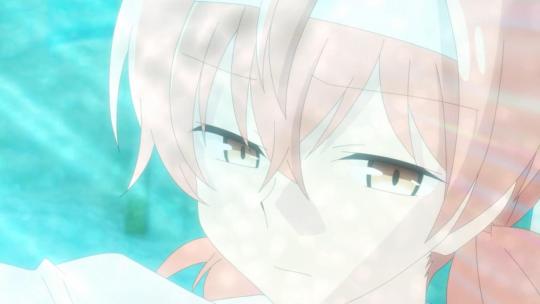
Bloom Into You is an incredible adaptation of an apparently yuri romance manga that raises the bar for anime adaptations in general. I don’t know when, but somewhere along the line I stopped expecting that serious capital R Romance anime would have a distinctive style, and gave up to the notion that there was no demand anymore and a stylized, seinen/josei romance would just never get made. Well that was 2016 and then Scum’s Wish happened which this blog has covered extensively.(http://vanilla-blessing.tumblr.com/post/168842023559/how-lerche-adapted-an-average-trashy-romcom-into, http://vanilla-blessing.tumblr.com/post/168789506264/scums-wish-and-our-messy-uncomfortable) To me Bloom Into You feels similar in concept, as a difficult romantic situation with no easy answers or completely happy people. The main perspective character, Yuu, is among my favorite romantic leads in any series; she doesn’t get romantic feelings, although she wants to, and despite being easily motivated, is kind of dispassionate. Her relationship that she was pushed into with Touko might as well be out of mutual convenience, since Touko doesn’t want to fall in love with someone who would love her back, and Yuu doesn’t think she can.
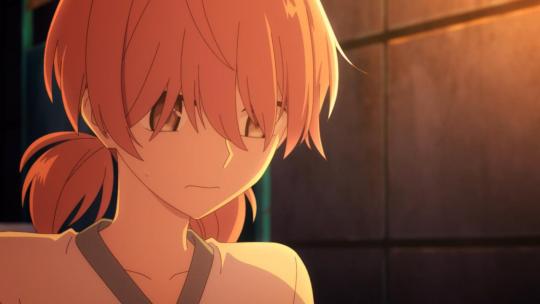
Yuu filters the developments of the series as they grow closer through a very different perspective compared to more emotional leads of usual romance stories, methodically breaking down and considering where she’s at, observing where others are at, before taking an action that makes sense to her. Her growth through the series takes a very different direction than the common dramatic formula; instead of running headfirst into misunderstandings to overcome romantic challenges, she’s compelled to take a step back and position herself in a way that allows her to understand and confront her girlfriend’s issues. The changes that she experiences herself during this process are extremely gradual, but are no less significant to her. Although the dramatic weight of the series is obviously all about Touko, the central thesis of Bloom Into You is to explore Yuu’s complex feelings, and ask to what degree our actions are dictated by our emotions. It’s a heavy topic to be sure, but what makes this anime adaptation special in particular is how the directing and production pull it off, to maybe an even stronger degree than the original material.
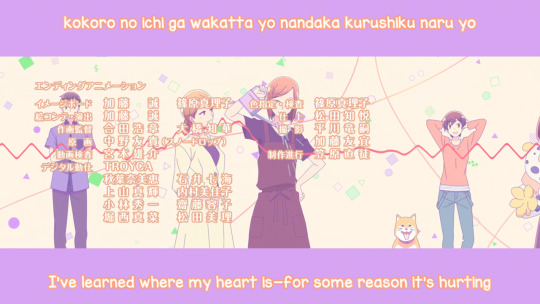
Bloom Into You’s most striking and noticeable feature is the incredible conservation of small movements that connect expressions naturally. Minute changes in characters’ faces are vital to observe the almost imperceptible changes in Yuu over the course of the series, and every aspect of the direction is in service of highlighting these subtle moments. In addition, repeated cinematic themes are reinforced over the show’s run, such as the use of light to impart a blinding realization, flower language to inform deeper personalities, even using a literal (not literal) cinema. Symbols such as trains, masks, and mirrors are used constantly and consistently to reinforce the show’s themes, which should be immediately obvious from the opening animation. I’m still kind of stunned that Bloom Into You’s ending theme is such a banger and managed to use an oscillating sine curve in a metaphorical way. These details might be lost without the brilliant layouts, intentionally resembling a stage, which always push the minute differences front and center. As an anime adaptation, Bloom Into You adds so much value in such a subdued, conservative way that it puts uninspired adaptations to shame.
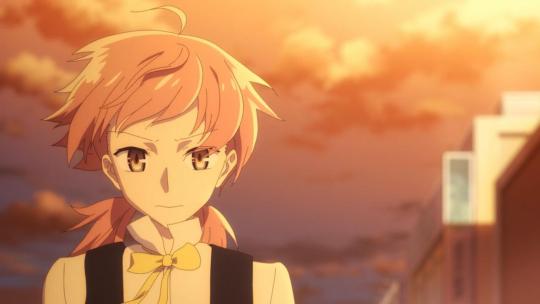
#8
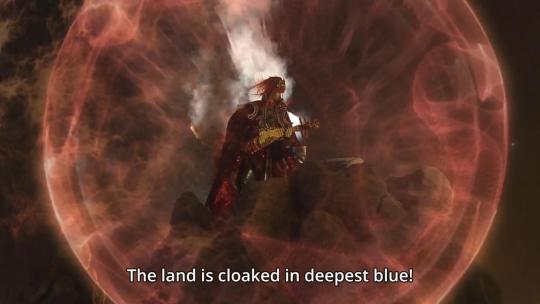
Thunderbolt Fantasy 2 rounded out the year with a good old new-fashioned Japanese-speaking Chinese-Wuxia Taiwanese puppet show. The novelty of this wild series, like, existing at all, is still incredible to me, but I was really wowed by the new characters and the direction the series went in after the already high standards of the first season. Following the outrageous action and fights of the previous season, I did not expect that season 2’s introductory goon would 1. Live past the first episode 2. So quickly become my favorite swordfighter and 3. Have inarguably the most complete character arc of the entire show thus far. The Princess of Cruelty’s struggle against her inner and outer demons in a unreasonably stacked, desperate situation developed her into easily the most compelling character of the season, and the rest of the cast including a corrupt police officer with extremely disconcerting and bad puppet teeth, a ventriloquist rock-lutist, and a nihilist monk each bring their own unique flavors to the table. The table that they throw the puppets in the air from to make the show. All of the new elements of Thunderbolt Fantasy 2 improved an already strong formula even more, and revealed an emotional depth to the series that I’m excited to see developed further. Some people might not call this anime, but those people haven’t seen Thunderbolt Fantasy for longer than 2 seconds. It’s so anime.
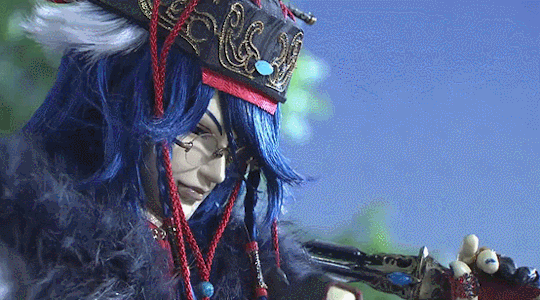
#9
I blasted all available seasons of Star vs the Forces of Evil early in 2018, and it was basically my first foray into straight-up American cartoon magical girl, despite watching all the Japanese ones, which was probably an oversight on my part. That’s because Star Versus is really good, and provided a flavor of magical girl I had been missing out on. I could talk about the excellent sparkle witch aesthetic of the show, fluid animation, and hilarious comedy, but I’d rather spend this blogspace posting Star Butterfly faces.
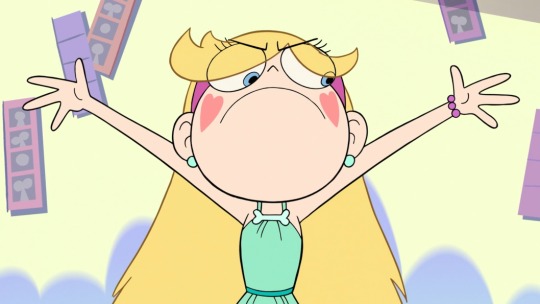
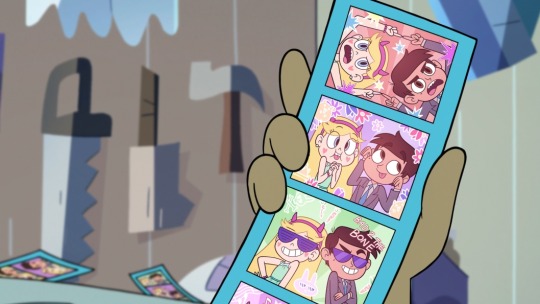
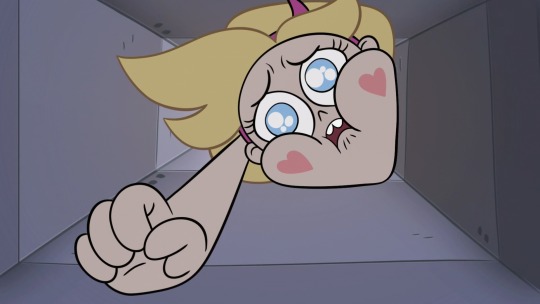
#10
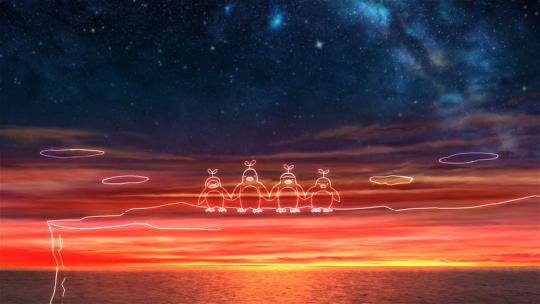
A Place Further Than the Universe, or YoriMoi, or my preferred moniker That Antartica Anime, wasn’t on my radar until well after it had finished airing, but it stuck with me for most of the year. Although it’s definitely melodramatic at times, it utilizes this tendency in exactly the right way to enhance the individual characters’ emotional arcs. Even though I was personally sort of taken out of it for many of the girls’ personal trials, :penguin emoji: is obviously thoughtfully written and carefully constructed, and especially knows how to orchestrate an immense emotional reaction with pitch-perfect timing. If there’s one particular aspect this anime has absolute mastery over, it’s hitting that perfect note and cue to create a memorable narrative climax. And for all my bellyaching about not fully relating to some of the characters, Miyake is definitively the #1 qb-relatable character of the year.
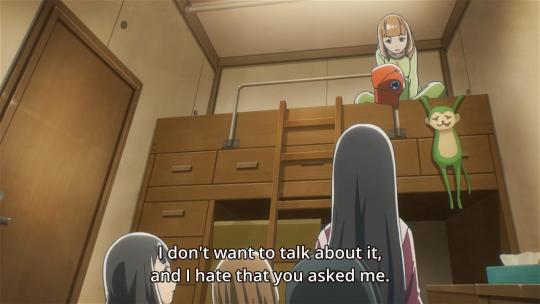
Here’s the rest of my list. Don’t @ me about it because if its not on my top ten then it doesnt really count anymore i dont make the rules thats just how it is
11. Yuru Camp
12. Hisone and Masotan
13. Asagao to Kase-san
14. Devilman Crybaby
15. After the Rain
16. Planet With
- friend of the show @queuebae on twitter
That’s why the 2018 anime of the year award goes to Kaiju Girls 2.
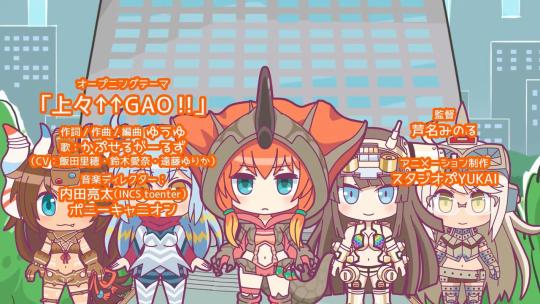
#top ten anime 2018#top ten pop team epics#pop teen epic#pop team epic#hoshiiro girldrop#poppiteppikiu#popttippiku#bob team epic#bob epic team#PTE 2018#Pop Team Epic Season 2
10 notes
·
View notes
Text
Avengers: Infinity War (15/20): Predictably Prosaic. Surprisingly Successful.
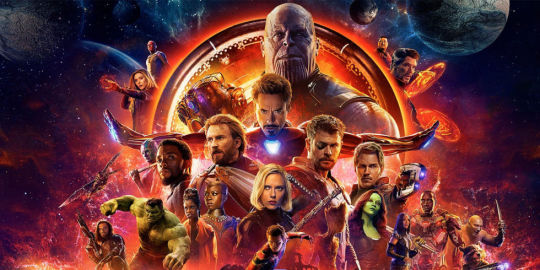
The first trailer for Avengers: Infinity War had me none-to-thrilled to get off my ass and go see the film. I mean, of course I was going to see it in theatres; I just didn’t think it would be very good. True, the past six months has shown somewhat of a renaissance in the Marvel Cinematic Universe, with Thor: Ragnarok re-infusing some fun into the franchise, and Black Panther slipping the tired-and-true MCU formula to show a bit of originality for a change. But the trailers just made Infinity War look, once again, so . . . generic. All epic battles, big menacing villains, and endless excuses for armour-plated movie stars to align themselves into group hero-poses.
In a way, I wasn’t wrong. But also, I was.
Because really, that’s all the film is. It begins with ‘Thanos is coming, guys. We’ve got to stop him,’ followed by a hundred-and-forty minutes of characters finding different ways to jump into his path and get stepped on. It’s all pretty MCU-standard. Nothing really stands out from other films, not the action or the dialogue, not the visuals, not the twists. Yet, I really did enjoy it. In a strange way, it even felt … fresh. At least a little, anyway.
But is that even possible? I mean, it must be. In all honesty though, I’m not sure how. What follows will be my best attempt to figure it out, exploring how this film differs from other MCU installments. Now, I’m probably going to have to go into specifics, so, you know, spoilers:
(SPOILERS BELOW)
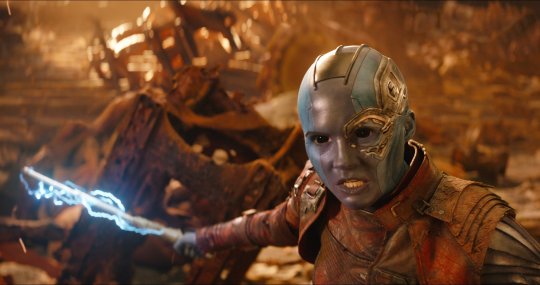
(SPOILERS!)
One concern I had going into Infinity War was that with so many characters and sub-franchises spun together, much of it would end up feeling more like a Marvel Grand Tour than an actual cohesive story, familiar characters shoe-horned into the plot with no real business or value in the narrative. Amazingly, this is not the case. Each character’s journey feels wholly organic and purposed against the larger backdrop of the collective. (With one small but notable exception: Bucky, whose presence, while not intrusive, is neither functional nor character driven. If you were to cut him from the film, not only would it not change the story, you would never think to wonder ‘where’s Bucky through all this?’.) Oh some characters are more or less important than others. Black Widow, Falcon, War Machine, Rocket, Drax, Groot, and even Captain America, and after the first twenty minutes or so Bruce Banner, are all relegated to sidekick status where their only job is to throw punches and crack-wise without really affecting what happens in the story. But their presence’s all make sense. To the extent that (unlike Bucky) you would notice if any was absent from the film. Deriving such a natural narrative flow from so many different sources, by itself, is a remarkable achievement.
But how is this achieved? Well Infinity War actually has a pretty interesting plot structure. At a glance, it appears to be one big climax to a meta-narrative that’s been building since the first Avengers film (some six year and thirteen movies back). But it does in fact follow the traditional three-act structure you expect from any major Hollywood blockbuster.
ACT 1: The Chaos of First Contact: Everyone who has anything to do with an infinity stone is suddenly, and unexpectedly, under attack. Some of these have an idea of what’s going on. Others do not. Some make it out both alive and uncaptured. Others do not. It’s abrupt and there’s absolutely no attempt beforehand to ‘set the stage’. (Historically, this is something I like to complain about. When a film assumes it has the audience’s emotional investment, having done nothing whatsoever to earn it. Infinity War might be one of the only cases where such a tactic proves effective. Because we are already invested. We know most these characters intimately by now, and anyone paying attention will have recognized that the franchise has been building to this for some time.) Anyway, it’s all very chaotic and it hits the loose community of heroes, splintering it into several different narrative arcs. Which brings us to…
ACT 2: Here we see the character settle into four different subplots, each with its own sub-protagonist: Iron Man, Thor, Scarlet Witch and Gamora. (Note that two these are exactly the person we’d expect given their previous roles in the franchise, while the others are the last we’d ever expect.) Each plot bends toward the others (Gamora’s getting a little extra push in hers from Thanos (get it?)) until they’ve merged into two main arcs: offence (kill Thanos) and defence (protect Vision). Thor’s successful weapon upgrade frees him to step into Scarlet Witch’s (defence arc), while Gamora’s death drives her surviving teammates into Iron Man’s (offence arc). All the while these, these two plotlines converging on the same thematic point: Stop Thanos.
ACT 3: Big Battle Fight-Zone! Villain defeats heroes in both the offensive and defensive plots.
So we have 1) Inciting Incident, 2) Setting Out to achieve the goal, and 3) Showdown. Unlike previous Marvel ensembles, the two main plotlines never come together. No one in any of the arcs has an idea what’s happening in the others (besides Doctor Strange, that is). Each arc, in fact, bares a structural resemblance to previous MCU films. And indeed, this is how Infinity War manages to juggle so many different characters and franchises. It doesn’t steer one mane arc around the map to pick up the others as it goes, but offers a complete re-shuffle, creating new groupings, and utilizing new protagonists. Each resulting plot, is quite small, fairly generic and not terribly interesting. But the narratives feel organic, and combined, they create a robust and immersive story.
But that begs the question: whose story? Which character is the film actually about? Oh, you could make the argument that as an ensemble Infinity War doesn’t have a main character. But for starters, the MCU has never produced an actual ensemble story. If you look close, Iron Man is the protagonist of the first two Avengers films. In Civil War, it’s Captain America. Even in the Netflix spinoff universe series, The Defenders, Daredevil tends to pull more focus than the others. So for this film to break away now would be completely unprecedented; and let’s face it, while Infinity War has some originality (in ways we’ll get to in a second), it was never intended to break the mould.
Additionally, it’s clearly not an ensemble because there are four characters distinctly set well above the rest in both importance to plot and audience empathy. And of these four, two prove to be by far more central than the others. (See ACT 2.) The audience’s goals are completely aligned with both Iron Man and Scarlet Witch, but there is no real interaction between these characters’; there is neither overlap, nor conflict. Does this mean they’re both separate protagonists? That the film is actually a pair of independent narratives that just happen to be told at the same time?
Well, no. Because what’s interesting (and quite rare) about Infinity War, is the main character may actually not be either of its PROTAGONISTS, but its ANTAGONIST.
When I say ‘antagonist’, I don’t mean ‘antihero’ (like Deadpool or Dirty Harry), and I don’t mean ‘protagonist who happens to be a villain’ (There Will be Blood). In such cases, though the main character may not be the most likable or moral person, they are still backed by the audience in terms of empathy and prioritization of goals. Thanos’s case is closer to Jack in The Shining. We actively cheer against him. Yet he drives the story and binds it together. Infinity War’s two main arcs, only really work as a single narrative, when that narrative is his.
And if you look at the plot from Thanos’s perspective, it’s actually extremely cohesive. He sets out to achieve his goal to collect all the stones and kill half the universe. He finds some early success before encountering the first big obstacle: he has to sacrifice a loved one to move forward. He does. (Act 1 Climax.) To reach his next goal, he must face a group of powerful fighters that want to kill him. They almost succeed but he’s saved by the very sacrifice he made in Act One (Act 2 Climax.) Finally he goes for the last stone. His enemies actually succeed in destroying it before he can reach it, but because of the power he’s achieved on his journey so far, he is able to resurrect it and finally achieve his goal. (Act 3 Climax.)
As narratives go, it’s not terribly evocative. It’s not a roller coaster of tension and surprises. (Then again, neither is the film as a whole.) But it does tie everything together quite nicely. What drama and excitement there is, is better found in the subplots because the stakes are higher for those who want to stop him. But these subplots only really work because of this half-invisible, counter-driven main plot.
And so, in a way, Infinity War uses the larger amalgamation of its characters almost more as a setting than driving forces in its narrative. There are of course a number of ‘character’ characters but the film doesn’t loop and flip all over the place to get them all together (as you might expect it to). It simply comes up with a few simple, linear stories for them, which combined create a broader, enjoyable whole. Offering the antagonist’s arc as a central narrative is a fairly elegant solution to the ‘too many franchises’ problem, transforming what might have felt like a scattered no-story series of events into a classic Hero’s Journey (or, in this case, Villain’s Journey) structure.
#Avengers#Infinity#War#Marvel#MCU#Marvel Cinematic Universe#Movies#Comics#Comic Book#Films#Review#Reviews
1 note
·
View note
Text
music cultures and economics assignment
opinion piece: is pop music original?
whenever i hear a song for the first time first, i naturally assume it is original and fresh from the artists’ mind. but how can this really be the case? with more than 97 million songs in the world, surely, it’s unlikely that each song is truly original. how could they not have been influenced by others that came before? how can they be unique without any crossovers and links to other songs? how can they all be truly original in structure, lyric and concept?
as a music rep in my old school, i often helped out in music classes, supporting children learning the blues, rhythm and witnessing fist-hand their experiences with new instruments and genres. one particular session left a lasting impression on my mind. we were teaching a series of lessons investigating the 4 main chord of pop music today, specifically how the songs in the charts can easily be mashed up. we watched a youtube video by the axis of awesome which has a medley of 36 songs, featuring songs from artists such as rhianna and train, all over the same 4 chords; C, G, Am, F. the aim of the lesson was to get the children to consider the question ‘is pop music too basic?’. by the end of the lesson, i too, was asking the same question! just by repeating the 4 chords, the axis of awesome could play a myriad of tracks, suggesting songs cannot be as original as i had first thought.
adorno’s belief on structure supports the idea that pop songs are not original. he believed that every pop song all followed the same basic song formula, and this is what made them standardised. being able to merge (or mash-up) popular songs together over only 4 chords, shows the underlying structure of the pieces are the same and therefore not original. adorno also believed that listeners were largely unaware of the similarity between the songs, engendering a feeling of security and reassured as nothing was unexpected. this could suggest why there are so many songs with the same basic structure and why they can all fit into one another so cleanly.
i am inclined to agree with adorno regarding music making listeners feel secure. i remember clearly an experience i had during a concert that i played in. a guest musician, roland taylor, was performing a new piece he recently had written. the concert which was being held in a church and had followed, until the point of taylor’s performance, a familiar ‘churchy’ style with uplifting melodies and haunting instrumental sections. taylor performed and the audience began to look a little bewildered and confused. taylor describes his style as ‘post-minimalist’, a style that was unfamiliar to the audience and as a result they are not keen. there was none of the expected rhythms and reassuring nuance which they had been enjoying. at the time, i thought it was definitely an original piece but having recently looked at taylor’s bio, i see that even he, with his extraordinary compositions, lists specific artists, early music, jazz and bach as being among his influences suggesting that even music which is nothing like we have previously experienced must have its roots in what has come before.
music for many is a creative outlet. whether its lyrics from the heart or a solo flute sighing its way through the piece, music is often a way for an artist to release their feelings. mac miller, for example, poured his heart out in the album ‘circles’. this was released after he died but shows how he was feeling before he passed and the thoughts he had at that point in his life. the song ‘good news’ especially shows how he was feeling at the time before his death and sounds like a cry for help. surely this is original as it’s his own thoughts and from his own experiences? i like this album as i can relate to some of the lyrics and makes me think about what others feel. however, i question whether this means that the piece becomes unoriginal as the listeners may begin to be influenced to feel the same emotion as the songwriter and therefore making the song standardised? i don’t fully believe this is the case as the song allows us to feel the emotions the artists want us to evoke. it also allows us to connect on a different level with the artist, with each listener creates their own unique connection according to their own feelings and circumstances.
different genres of music have different standard structures that set them apart from each other, but which keeps them musically indifferent within their own genre. for example, blues music typically has the same features of 12-bar blues and a walking bass whilst rock music typically features an electric guitar and male vocals. adorno believed that popular music contains certain elements such as a verse or chorus which can be changed without affecting the piece. he believed that even if the chords behind the basic structure of the verse are different or the different rock riff is changed, for example, the overall piece is structurally the same and therefore standardised.
new improvements in technology have fuelled franchising and turned music into a product. music has developed quickly over a short space of time and now can be accessed by a larger demographic. music, today, is distributed on a mass scale on sites such as spotify and apple music, enabling music to be found at the drop of a hat. this easy access has allowed music production to be accelerated. technology has also been created to cater to our specific taste and preferences. for example, i frequently listen to rex orange county and as a result, apple music creates playlists for me with work by similar artists so i can discover more music in that style, which i will likely enjoy. while such services could be deemed useful, they accelerate the rate of music distribution and thus, arguably, eliminating the need for originality.
adorno believes that mass-production is yet another reason why music has become unoriginal and standardised. ‘new’ music is often heard by many different people before it ends up as a product, producer, record label etc. this process can lead to the originality of the artist to become lost, as often the process of producing the song can change the fundamental originality of it in order to turn it into a marketable product. creativity and new concepts become obsolete.
adorno believes that although such “industrial” music production and distribution is making music standardised, the product is still individualistic in certain social aspects, such as lady gaga’s whacky fashion choices. lady gaga is a well-known figure within the music industry and has produced 6 albums all in different genres. while she maybe creatively exploring the different genres, i can’t help but feel like it’s a clever marketing ploy used to reach a larger demographic and therefore earning more royalties. this supports the argument that music is now a product which can be standardised rather than an artform used to express originality of thought and talent.
so, I am left with the question: is popular music original? i agree with adorno’s view that pop music is unoriginal due to its similar structure. the fact that axis of awesome found 36 songs (and probably plenty more now) that fit so cleanly with one another, cannot just be down to a fluke. there must be a basic song formula that they all follow they are unoriginal. i also agree that mass-production, aided by advancements in technology, is increasing unoriginality within the music industry as music becomes more as a marketable good seeking for the new markets and demographics. however, music is full of raw emotions shared by the artist to the listener. the individual element and personalisation of such outpouring certainly cannot be standardised and with hundreds of new genres that are completely different from one another that ‘popular music’ had become so broad, it’s hard to standardise. i personally don’t believe we will ever know if all music is truly original, but let’s hope that at least some of is!
word count: 1,362
academic piece: to what extent is pop music standardised?
pop music, according to shuker 2013, “defies precise, straightforward definition [since] the criteria for what counts as popular, and their application to specific musical styles and genres, are open to considerable debate” (shuker 2013, p. 5). for the purpose of this essay, the definition of popular music is ‘music that is ‘popular’ in the sense of being ‘of the people’, i.e., music that belongs to ordinary people and expresses their interests and concerns (wall, 2013 p. 175).
whilst it is difficult to state with absolute certainty whether popular music is standardised or not and indeed there are several credible arguments for both sides of the debate, it can be argued that, to a large extent, pop music is standardised as it broadly follows the same basic song formula. theodor w. adorno is a german philosopher, musicologist and composer best known for his critical theory of society and states “best known is the rule that the chorus consists of thirty-two bars and that the range is limited to one octave and one note.” (1941) this suggests that every song has been written based on this statement and using the same formula. if this is true, it may be one explanation as to why pop music is so commonly listened to; the listener is comforted by the repeated structure and enjoys the familiarity of the songs. adorno further supports this idea when he says, “the listener can supply the "framework" automatically, since it is a mere musical automatism itself” (1941). this shows that not only is pop music standardised within the same structure but the listener. although it could be conversely be argued that pop music can’t be standardised as there are so many sub-genres of music. adorno counters his hypothesis in his essay ‘on popular music’ where he states that the listeners, regardless of the song, still stays “openly connected with the underlying scheme”, which is the basic pop formula. therefore, ‘the listeners always feel on the safe ground’ as they are familiar with the structure and the basic formula that makes up popular music.
another argument which gives weight to the idea of pop music being standardised is pseudo-individualisation. pseudo-individualisation directly translates to the ‘illusion of choice’ and is “the standardization of cultural production and of audience reaction to contemporary culture.” (o’brien and szeman, 2017, p 120). adorno states that “by pseudo-individualisation we mean endowing cultural mass production with the halo of free choice or open market on the basis of standardisation itself." (1941) this suggests that artists now are referred to as cultural goods and therefore standardised as they become a product. hains reinforces this idea when he states that “sameness is disguised by product design and marketing techniques which present the illusion of freedom and choice” (2018), meaning that disguising the artist through marketing and production design makes the listener forget that the music is standardised, so the music becomes a product rather than a creative concept and the artists are tuned into idols rather than individuals. a clear example of pseudo-individualisation is with benny goodman and guy lombardo, both are mentioned by name in adorno’s ‘on popular music’. he says, “the listener is quickly able to distinguish the types of music and even the performing band, this in spite of the fundamental identity of the material and the great similarity of the presentations apart from their emphasized distinguishing trademarks.” (1941). suggesting that while both artists have different genres, “swing and sweet” (adorno, 1941), and their music is perceived as different, they are in fact, formulaic and therefore are standardised which is the reason as to why they became popular.
there are many further examples of adorno’s concept of standardisation, one such being the songs of a UK girl band little mix who rose to fame after winning the x-factor television programme in 2011 and have now sold over 50 million albums worldwide. their hit song ‘shout out to my ex’ is a clear example of standardisation. it sounds undeniably similar to ‘ugly heart’ by G.R.L. this similarity has been commented on by both music critics and fans alike who highlighted that the melody and harmony of the chorus in both songs sound almost identical. the very public controversy which ensued prompted little mix during an interview with Qmusic (a belgian radio station) to state “rvery song is going to have a similar chord sequence, slightly similar lyrics and melodied- it happens all the time.” (corner, l. 2016, digital spy report). such well known examples support adorno’s theory that elements of a popular song can be interchangeable and included in another. plagiarism is also a good example of standardisation. plagiarism is when you take other people’s work and use it as your own and has happened a lot within in the music industry. an example is that of the estate of marvin gaye who successfully sued robin thicke and pharrell williams for $5million following the release of the song ‘blurred lines’ because they stated, the track copied marvin gaye’s song ‘got to give it up’ (savage, 2018, bbcReport). such examples show clearly that adorno’s theory of standardisation and pseudo-individualisation do occur frequently in popular music.
when considering adorno’s research, it is important to remember that there are many criticisms of his work which should be considered. adorno has been criticised for the way in which he writes, as his style isn’t easily comprehensible. adorno is aware of this and has stated he does it on purpose because he wants people to interpret his work in their own way and to defy identity thinking. (fagan, n.d). another limitation is temporal validity. adorno’s ‘on popular music’ was written in 1941 when technology wasn’t an influencing factor in regard to releasing music. technology has advanced significantly since 1940s and has accelerated the release of new music. in the 1940s, radio was perceived as the most popular way of listening to music. today, more than 89% of people stream music online (IPPI, 2019). music nowadays is easier to find, it reaches a wider range of people and has sparked the creation of new genres. according to the guardian, there are currently in excess of “1,264 genres that make modern music” (2014) implying that music is now becoming less standardised due to the wider range of genres making up the current ‘pop music’ culture. A further result of technological advances is the increase in production of music which could also suggest why there are so many sub genres of music. adorno disputes mass production being a cause of standardisation stating, “the production of popular music can be called 'industrial' only in its promotion and distribution, whereas the act of producing a song-hit still remains in a handicraft stage” and that it is "still 'individualistic' in its social mode of production." (1941). this suggests that pop music is original when presented to the public due to different chords and melody but isn’t original when it come to the generic basis of the song itself.
while adorno’s research lacks in temporal activity and is considered by many to be extreme and opinionated, we must take into account that so far, his research has stayed relevant and still applies to popular culture. also, even though there are many different styles of genres of music, they still largely follow the same structure and include many of the same elements such as verse, chorus or instrumental section.
in conclusion, popular music can be seen to be standardised as it follows the same basic song structure and turns music into a product which can be standardised (pseudo-individualisation). while we must take into account adorno’s research lacks in temporal validity and the new advances of technology may change things, standardisation is apparent within the music culture today.
word count: 1,288
bibliography:
adorno, t (1941) ‘on popular music’ available at: http://www.icce.rug.nl/~soundscapes/DATABASES/SWA/On_popular_music_1.shtml (accessed 19 november 2020)
corner, l. ‘little ,ix respond to GRL comparisons on new single: “stop trying to get publicity”’ digital spy, 24 october 2016 available at: https://www.digitalspy.com/music/a811967/little-mix-respond-to-grl-comparisons-on-new-single-shout-out-to-my-ex/ (accessed 29 november 2020)
fagan, a. (no date) theodor adorno available at: https://iep.utm.edu/adorno/#H6 (accessed on 25 november 2020)
fitzpatrick, r. ‘from charred death to deep filthstep: the 1,264 genres that make modern music’. The guardian, 4 september 2014 available at: https://www.theguardian.com/music/2014/sep/04/-sp-from-charred-death-to-deep-filthstep-the-1264-genres-that-make-modern-music (accessed 25 november 2020)
hains, s. (2018) adorno and pseudo-Individualisation available at: http://samhains.com/blog/mcc/2018/06/16/adorno-pseudo-individualization.html (accessed 25 november 2020)
IFPI (2019). music listening report 2019. available at: https://www.ifpi.org/wp-content/uploads/2020/07/Music-Listening-2019-1.pdf (accessed on 1 october 2020)
o’brien, s. and szeman, s. (2017) popular culture: a user’s guide, page 120
savage, m. ‘blurred lines: marvin Ggaye’s family keeps $5m payout’. bbc news, 22 march 2018 available at: https://www.bbc.co.uk/news/entertainment-arts-43497970 (accessed on 25 november 2020)
shuker, r. (2013) popular music page 5 wall, t. (2013) studying popular music culture page 175
overall word count:2,650
-04/12/20
0 notes
Text
Comments on “Where’s the Winter Palace”
I have two main critiques of this interesting but, I argue, ultimately unpersuasive essay on the Marxist-Leninist movement in the US. This note grew out of a Facebook comment, and it presumes familiarity with the general subject as well as the essay linked above. I left aside several other critiques which were made by other people on the thread, so this is an incomplete critique.
First, I found the critique of line-centrism (laid out in "Dogmatism and 'Line'") less than persuasive; I thought it misidentified the cause of the NCM’s failing in the first place (here I disagree with Max Elbaum who is the original source for this claim); applies with far less force to the Marxist-Leninist movement at present than it did to the NCM; and, finally, is unrealistic in the sense that it takes an unfortunate truth about large group organization, Marxist-Leninist or otherwise (that the determination of some kind of a minimal line and the holding of it is crucially necessary to effective politics and will also never satisfy every individual party member entirely) and makes it an avoidable, volitional failure borne of dogmatism (whereas I think it is just a feature of doing politics as such); I also think that the argument that certain issues are simply not ones on which lines should be tightly drawn (e.g., imperialist wars of aggression) is unpersuasive.
Second, I thought that the attempted historicization of Marxism-Leninism (i.e., the reading of it as an analysis which was true “then” but is now “outdated Cold War politics”) was also unpersuasive. I don’t think that the authors really argued for this point with as much evidence as such a strong claim merits; I do take up, in detail, what evidence they do provide at the end of “The Sect System”, and I argue that this evidence does not provide a foundation for their claims. I also address some of their specific study suggestions for Marxist-Leninists, which I argue are inconsistent and, in some cases, difficult or impossible to reconcile with Lenin’s work or the Third International tradition generally.
To the first point. I’ll set aside the first sub-point (about the NCM) since that’s something of a different topic. On the second point, I think, viewed historically, the three organizations which the authors are talking about are far less strict about adherence to lines on every conceivable issue than during the NCM, less strict than the Trotskyist movement (from its inception to present), and, to some degree, less strict than the official CP movement; the movement in all of those subsections of the left and on the left, generally, during the 1930s-1980s was substantially larger in the US than it is now. So, I think this provides some prima facie evidence that adherence to a strict line is, at the very least, not a huge brake on the size and influence of the left, all else equal. The NCM failed, for sure, and its genuinely ouroboros-character with regard to line-struggle clearly contributed to that (although again, I think the emphasis on that is overstated); but, the fact that line-struggle is now far less heated and that the movement is smaller means that this can’t be the only, or primary, cause (WWP goes far out of its way to avoid polemics against other groups, e.g.—one would never see from WWP the kind of personalization of politics that was common during the NCM, such as the adoption of hyper-specific name-based epithets or condemning the line of fellow leaders of tiny groups, by name, in print, as, quite literally, “evil”). I can't speak for all the groups in question, but certainly the ones I'm most familiar with have no restrictions on members disagreeing with assessments of other members on a great variety of questions—it's just disagreements which would threaten unity of action which are prohibited (I think it's perfectly reasonable to prohibit people from publicly saying things like "I fundamentally think this strike that we're supporting as a group is wrong"—there just isn’t a point in having a political organization that can’t agree on some baseline goals and strategies, in my view). For some groups, that could well reasonably include discussions about China; if one believes that the particular method of organizing socialist revolution in China ineluctably led to a counterrevolution or ineluctably led to a socialist-developmental state, then it would be good to avoid or pursue those methods (or at least learn the lessons that can be learned from them and apply them to a different context)—that actually would be a question of great importance (and, in a way, the author sare implicitly entering into that debate without intending to by arguing that the experience of those countries is probably irrelevant—that is “a position” in that debate, in my view). [I should acknowledge that this last point is also laid out in a comment on the original post concerning Cuba, made by one Daniel Sullivan].
To the third sub-point of the first point: the policy of presenting a united front on questions of great import seems to me to be a pretty standard organizational practice of most political orgs., small communist ones and large liberal ones; in the absence of this kind of minimal discipline, the group can and almost certainly would simply cease to reproduce itself as a group (or turn into an inert federation). Even the DSA draws lines somewhere (and I think the only reason that they can be so lax about what lines they do draw is that they don't actually get much done, conditional on their size). Where the lines of disagreement should be drawn is a good and open question, in my view, and I think it would be better to be more specific about which kinds of lines of disagreement are wise and which aren't; I think it overstates the question to say that groups are too fixated on the proper line as such, since surely nearly everyone would agree that lines need be drawn somewhere—the more specific question of what kinds of lines are or aren’t relevant is much harder to answer at the level of principle. The conclusion to the essay and the “further reading” includes a number of suggestions which are actually adequate to the level of generality posed by this argument—in other words, the fact that this critique could apply to almost an effective organization—by simply advocating very loose organizations, the DSA among them. It is fine to make this argument, of course, but I think it’s wrong; those types of groups are, as a rule, typically not productive ones (I think this is pretty well-established by social movements sociology; I don’t have much time here to elaborate on that, but the empirical question is kind of moot—I would imagine that a pre-condition of being a Marxist or even simply a social democrat, as opposed to an anarchist, would mean holding that view as a precept).
I’d like to end my commentary on this point by suggesting the great relevance of such line struggles on the specific question of Syria since the authors specifically raise this point: they suggest that positions on Syria are basically of little relevance to the left (presumably they mean the left outside of Syria) because of the negligible practical outcomes of those positions: "[i]f you don’t 'uphold' Bashar al-Assad, you’re 'no better than the State Department', despite the fact that 'uphold' in this context means little more than voicing support". By contrast, it seems to me that the relevance of one's position on Syria is very clear: if one doesn't think that Assad is a leading a national-bourgeois war of liberation but instead is prosecuting an imperialist war of conquest, then there would be a far less clear imperative for the workers' movement to oppose the war. In fact, if it were true that Syria (and Russia) were after all imperialist powers, socialists here would need to be careful to not demand an antiwar politics with such fervor that they reduced the ability of the United States to genuinely defend itself against larger imperialist powers (and it would imply a need to coordinate very closely with workers in Syria and Russia, closer than is possible at present thanks to the degeneration of the left in Russia and the US, to ensure that neither wing of the communist movement inadvertently assisted one imperialist power over another). The urgent need to unilaterally call off the war on Syria and the strategy that has developed around that (which is not dissimilar in many ways to the strategy that developed around the war on Vietnam for instance) flows/flowed from a Leninist analysis of the situation. A different analysis could lead to an entirely different political strategy. Even more fundamentally than that, an analysis which says that this question just isn’t that relevant to the first world left—because it can’t do anything about the war—is an analysis which leads us to a position that we shouldn’t do anything about the war (the position “the war shouldn’t matter to us that much” implies a position of “we shouldn’t do much about it”, which compounds the problem of “we can’t do much about it”, which further fuels the position “the war shouldn’t matter much to us”—it’s a classic vicious cycle).
My second point is that I don't find the near-relegation of Marxism-Leninism to the dustbin of history as unambiguous as the authors seem to argue. They imply in the introduction that Leninism is "outdated Cold War politics" (or at least, that appears to be the meaning from the context, although it's not explicit). Later they expand on this claim, and though they do argue that “the world is still in the era of imperialism as Lenin defined it”, they then append a long list of changing historical conditions and ask rhetorically whether we are “in the same period that Stalin speaks of”; they don’t answer in completely unequivocal terms, but since the sub-section is titled “can Marxism-Leninism be salvaged” and since they reply to their rhetorical question with “certainly a lot has changed”, it seems to me that they are, without saying so outright, arguing that at the very least its relevance has been severely weakened. So, I’d like to look at the evidence they offer. Their list of changed conditions is as follows: “the Eastern Bloc has collapsed, formal colonialism has largely been replaced with neo-colonialism, Keynesianism has been replaced with neo-liberalism, and the United States has emerged as the dominant imperialist power”.
It seems to me that it would be better to be clear about the exact stakes of each of these historical changes and how exactly they render Lenin's analysis outdated or not. It's easy, as the authors say, to list changes, but it's equally easy to list continuities: we still live in a capitalist world; most of the African continent, Latin America, and the Arab world are under the heel of “Western” powers; the threat of inter-imperialist wars has returned to the horizon; the continued slide towards the full restoration of capitalism in China and the destruction from within of the USSR mean that we actually have a world which looks much more like the world just before 1914 than the world of 1975 did; and so on. Without a more detailed and clearer explication, this kind of list-making practice doesn’t tell us all that much, in my opinion. And to the implicit claim that simply being old makes the practice of Leninism outdate, I would counter that the dominant political practices of the imperialist countries (right-liberalism and conservative modernization politics) are virtually as old as capitalism itself (and of course, Marx is also older than Lenin, and the democratic socialist politics which the authors end by halfway-advocating are roughly as old).
Looking specifically at the examples here, I would suggest that the relevance of these examples is left unstated and that each example seems to me to be less-than-sufficient to invalidate a Leninist analysis. The Eastern Bloc didn't even exist when Stalin provided that definition (1924), so the relevance of that point is indeterminate, in my view; formal colonialism was also more or less conquered by the workers movement just a few years after the Chinese and Cuban revolutions, and so it, too, has not existed in most of the world for long after Marxism-Leninism seems to have clearly been a relevant analytical framework (and I also don't think that Lenin or other leading Third International politicians assumed that the existence or not of formal colonialism was of life-or-death relevance to their analysis of imperialism); I think it's probably premature to say that Keynesianism has replaced neoliberalism—that seems, to me, to be an outcome of the class struggle (and it's also unclear whether Keynesianism was ever "dominant" or what the exact content of neoliberalism is)—and, in the first place, the relevance of this point is unclear; and, finally, it seems highly uncertain in what precise sense the United States is the dominant imperialist power, how long this conjuncture will continue to last, and how exactly that would invalidate Lenin's analysis of imperialism (there is a great text by a guy called Alec Abbott which can be found here; in pretty fine detail it goes over, from a Leninist perspective, the question of whether we really are in an epoch of ultra-imperialism thanks to the US' primus inter pares status).
I now want to address the authors’ argument that the “M-L canon” is too often presented out-of-context and with minimal updates, demonstrating that the canon is of conjunctural, historical relevance but not of great relevance to the present day. I should begin by saying that I do think that the lack of context given for older texts in that one, specific study guide on Reddit is bad pedagogy, but I also think that this online study guide is probably not broadly representative of the internal education policy of these groups (I know that it isn't for at least one), where older members and people who know this history can often supply that crucial background knowledge; it would be a major publishing undertaking to provide that kind of annotated study guide, although it’s something that I have finally begun myself for a specific subset of the M-L “canon”). I agree with the authors that the exclusion from the one specific Reddit canon of newer writers like Samir Amin is lamentable (again, setting aside that this does not characterize very adequately, in my view, the attitude of actual *parties* to newer analysis), but I again think they’d do better to argue exactly why authors should be included (such as Etienne Balibar who is a philosopher and, aside from his interesting work on global racism with Immanuel Wallerstein, seems like he doesn’t have much to say which is of direct relevance to the US communist left). To argue for a more expansive canon sounds intuitively appealing when pitched at a high level of abstraction, but for the critique to really have teeth, I think a specific critique should argue for adding certain people for certain reasons (I do think the arguments for adding Ho or Gramsci or Luxemburg are fairly self-evident, although it should be noted that Luxemburg sharply disagreed with the Bolsheviks on a number of questions and that Gramsci, though a consistent Leninist, is simply difficult to read in a way that Ho, who I know for a fact appears on one of the candidacy reading lists of one of the parties mentioned, is not—I don’t think this means that people should ignore Gramsci or Luxemburg, but it does mean that it is not a great crime, in my view, to set them aside in some contexts). Let me also note that the critique of the line-centrism made earlier is to some degree in tension with the argument that organizers in M-L parties unduly restrict their canon or are movementists in the sense that they do not reflect adequately on their strategies—to add more and more authors to the canon is to add more and more things to debate lines on (if we are to take seriously the suggestion that we add, for instance, two people who think exactly-opposite things to the canon).
Much of their critique feels sort of formalistic and procedural in this specific sense: the authors advocate for more diversity in terms of what kind of analysis and strategy communist activists should consider, and that’s desirable in the abstract, but they bring together under that heading a jumble of examples of other traditions which are either already well-covered by the expansive vision of Marxism-Leninism that characterizes WWP, PSL, and FRSO, or ones which are, at the end of the day, not compatible with one another because the traditions in question are directly opposed on key questions: “autonomism & operaismo, Marxist-feminism, [and] pre-war social democracy”. I’ve never encountered a single person claiming to advocate Leninism, in roughly eight years of being around people who call themselves that, who thought that Marxist-feminism was anything but of the highest importance, and of course, it’s almost impossible to study Lenin without simultaneously studying pre-war social democracy; anyone who’s read Lenin has, in a partial sense, studied the shortcomings and successes of pre-war social democracy (also, surely if M-L is conjuncturally dated, so, too, is the pre-war SPD). And, finally, it’s something of a contradiction in terms to ask Marxist-Leninists to study operaismo since one of the foundational analyses of Leninism as a political practice and analysis is that approaches such as operaismo are ultimately premised on mistaken analyses (Lenin didn’t live to see this tendency but he was very familiar with some of its precursors). That doesn’t mean it’s without merit—I recommend Bologna’s work on Marx as a crisis theorist and the electoral base of fascism to many people, for instance. But to say that communists must take an interest, necessarily, in this long-dead variant of the workers’ movement (which did not prove to be any kind of silver bullet—of course, its major theorist Tronti ultimately rejoined the PCI and has since become an open defeatist); we simply don’t have the time to study every last possible strategic analysis that exists. I again think that it would be far preferable for the authors to advocate the specific reasons why this analysis is important and how communists can learn from it even though the authors also advocate learning from Lenin, some of whose key precepts are actually, in a way, pre-emptive critiques of the very basis of operaismo (I agree that it would be good for Marxist-Leninist parties to have some people around who study or know this historical material, but it seems unduly onerous for all cadre to know this material). I think it’s good to study everything that we can, but at the end of the day, either Lenin was right or the autonomists were right—we simply have to draw lines, even if “drawing lines” just means “pursuing this strategy and not another”. There is no way to believe A and ¬A, dialectics aside. As I said earlier, I think their recommendations here are formalistic: it’s good and well to advocate greater diversity in an abstract sense, and we of course all agree on the maximum diversity possible in terms of our “canon”, but the devil really is in the details of what is “possible”. Some of their suggestions in this regard seem aimed to ask Marxist-Leninists to simply not be Marxist-Leninists (but their post doesn’t exactly offer a general or comprehensive critique of Marxism-Leninism, which I believe would have made for a more consistent essay).
While the essay offers an interesting historical overview of the Marxist-Leninist movement at present, it is ultimately premised on what I think is a very formal and, to put a finer point on it, simply vague criticism. The authors close their essay by arguing that “in the U.S. in 2018, the truly important theoretical tasks have not been solved” but what these tasks are is left unstated as far as I can tell, let alone what kinds of answers might need to be supplied. Even just a rough sketch of the type of question to which this pronouncement refers would have made it easier for people to engage the essay in a more nuanced fashion, I think. As I noted above, it would have been better to simply argue clearly and directly against Leninism as a theory of the epoch of imperialism outright (the essay comes close to being, but is not, that); instead, the argument is often couched in procedural terms (the form of organization is wrong, the willingness to draw lines is wrong, the selective reading of texts and general seeking of a correct analysis rather than as many analyses as possible is wrong) rather than in concrete, substantial terms. I think the essay would have benefited from simply being more precise on these questions: why exactly does the non-existence of the Eastern Bloc, which didn’t exist when Lenin lived, matter? How, precisely? Why is it that it actually does not matter whether people in the imperialist countries argue against the war on Syria and spread antiwar propaganda? What, then, should communists do? How is it that Draper’s quasi-Bolshevik advice, which is recapitulated on the last page, can be reconciled with a DSA whose merits, in the opinion of the authors, are that it is has no effective national unity or consistency among locals? Despite some points about concrete strategy and political practice throughout the essay which are worth taking seriously, ultimately the essay aims for a very general case against Leninism (and, I would argue, communism and Marxism, given what the authors write about the dictatorship of the proletariat, although I don’t think the authors would agree with this reading) but fails to make that coherent case beyond highly impressionistic sketches of history.
J. Seratsky, 12 Mar 2018.
1 note
·
View note
Link
“Go is an open source programming language that makes it easy to build simple, reliable, and efficient software”. GoLang In many languages, there are many ways to solve a given problem. Programmers can spend a lot of time thinking about the best way to solve it. Golang, on the other hand, believes in fewer features — with only one right way to solve the problem. This saves developers time and makes the large codebase easy to maintain. There are no “expressive” features like maps and filters in Golang. “When you have features that add expressiveness it typically adds expense” Rob Pike Recently published new logo of golang: https://blog.golang.org/go-brandGetting Started Golang is made of packages. The package main tells the Golang compiler that the program is compiled as an executable, rather than a shared library. It is the entry point for an application. The main package is defined as: package main Let’s move ahead by writing a simple hello world example by creating a file main.go in the Go lang workspace. Workspace A workspace in Go is defined by the environment variableGOPATH. Any code you write is to be written inside the workspace. Go will search for any packages inside the GOPATH directory, or the GOROOT directory, which is set by default when installing Go. GOROOTis the path where the go is installed. Set GOPATH to your desired directory. For now, let’s add it inside a folder ~/workspace. # export env export GOPATH=~/workspace # go inside the workspace directory cd ~/workspace Create the file main.go with the following code inside the workspace folder we just created. Hello World! package main import ( "fmt" ) func main(){ fmt.Println("Hello World!") } In the above example, fmt is a built-in package in Go which implements functions for formatting I/O. We import a package in Go by using the importkeyword. func main is the main entry point where the code gets executed.Println is a function inside the package fmt which prints “hello world” for us. Let’s see by running this file. There are two ways we can run a Go command. As we know, Go is a compiled language, so we first need to compile it before executing. go build main.go This creates a binary executable file main which now we can run: ./main # Hello World! There is another, simpler, way to run the program. The go run command helps abstract the compilation step. You can simply run the following command to execute the program. go run main.go # Hello World! Note: To try out the code that is mentioned in this blog you can use https://play.golang.org Variables Variables in Go are declared explicitly. Go is a statically typed language. This means that the variable type is checked at the time of variable declaration. A variable can be declared as: var a int In this case, the value will be set as 0. Use the following syntax to declare and initialize a variable with a different value: var a = 1 Here the variable is automatically assigned as an int. We can use a shorthand definition for the variable declaration as: message := "hello world" We can also declare multiple variables in the same line: var b, c int = 2, 3 Data types Like any other programming language, Golang supports various different data structures. Let’s explore some of them: Number, String, and Boolean Some of the supportednumber store types are int, int8, int16, int32, int64, uint, uint8, uint16, uint32, uint64, uintptr… The string type stores a sequence of bytes. It is represented and declared with keyword string. Abooleanvalue is stored using the keyword bool. Golang also supports complex number type data types, which can be declared with complex64 and complex128. var a bool = true var b int = 1 var c string = 'hello world' var d float32 = 1.222 var x complex128 = cmplx.Sqrt(-5 + 12i) Arrays, Slices, and Maps An array is a sequence of elements of the same data type. Arrays have a fixed length defined at declaration, so it cannot be expanded more than that. An array is declared as: var a [5]int Arrays can also be multidimensional. We can simply create them with the following format: var multiD [2][3]int Arrays are limiting for cases when the values of array changes in runtime. Arrays also do not provide the ability to get a subarray. For this, Golang has a data type called slices. Slices store a sequence of elements and can be expanded at any time. Slice declaration is similar to array declaration — without the capacity defined: var b []int This creates a slice with zero capacity and zero length. Slices can also be defined with capacity and length. We can use the following syntax for it: numbers := make([]int,5,10) Here, the slice has an initial length of 5 and has a capacity of 10. Slices are an abstraction to an array. Slices use an array as an underlying structure. A slice contains three components: capacity, length, and a pointer to the underlying array as shown in the diagram below: image src: https://blog.golang.org/go-slices-usage-and-internalsThe capacity of a slice can be increased by using the append or a copy function. An append function adds value to the end of the array and also increases the capacity if needed. numbers = append(numbers, 1, 2, 3, 4) Another way to increase the capacity of a slice is to use the copyfunction. Simply create another slice with a larger capacity and copy the original slice to the newly created slice: // create a new slice number2 := make([]int, 15) // copy the original slice to new slice copy(number2, number) We can create a sub-slice of a slice. This can be done simply using the following command: [2 3 4] Maps are a data type in Go, which maps keys to values. We can define a map using the following command: var m map[string]int Here m is the new map variable, which has its keys as string and values are integers. We can add keys and values easily to a map: 3 Typecasting One type of data type can be converted into another using type casting. Let’s see a simple type conversion: 1 Not all types of data type can be converted to another type. Make sure that the data type is compatible with the conversion. Conditional Statements if else For conditional statements, we can use if-else statements as shown in the example below. Make sure that the curly braces are in the same line as the condition is. if num := 9; num < 0 { fmt.Println(num, "is negative") } else if num < 10 { fmt.Println(num, "has 1 digit") } else { fmt.Println(num, "has multiple digits") } switch case Switch cases helps organize multiple condition statements. The following example shows a simple switch case statement: i := 2 switch i { case 1: fmt.Println("one") case 2: fmt.Println("two") default: fmt.Println("none") } Looping Golang has a single keyword for the loop. A sngle for loop command help achieve different kinds of loops: i := 0 sum := 0 for i < 10 { sum += 1 i++ } fmt.Println(sum) The above example is similar to a while loop in C. The same for statement can be used for a normal for loop: sum := 0 for i := 0; i < 10; i++ { sum += i } fmt.Println(sum) Infinite loop in Go: for { } Pointers Golang provides pointers. Pointers are the place to hold the address of a value. A pointer is defined by *. A pointer is defined according to the type of data. Example: var ap *int Here ap is the pointer to an integer type. The & operator can be used to get the address of a variable. a := 12 ap = &a The value pointed by the pointer can be accessed using the * operator: 12 Pointers are usually preferred while passing a struct as an argument or while declaring a method for a defined type. While passing value the value is actually copied which means more memoryWith the pointer passed, the value changed by the function is reflected back in the method/function caller.Example: 11 Note: While you are trying out the example code in the blog, do not forget to include it with package main and import fmt or other packages when needed as shown in the first main.go example above. Functions The main function defined in the main package is the entry point for a golang program to execute. More functions can be defined and used. Let’s look into a simple example: 3 As we can see in the above example, a Golang function is defined using the func keyword followed by the function name. The arguments a function takes needs to be defined according to its data type, and finally the data type of the return. The return of a function can be predefined in function as well: 3 Here c is defined as the return variable. So the variable c defined would be automatically returned without needing to be defined at the return statement at the end. You can also return multiple return values from a single function separating return values with a comma. func add(a int, b int) (int, string) { c := a + b return c, "successfully added" } func main() { sum, message := add(2, 1) fmt.Println(message) fmt.Println(sum) } Method, Structs, and Interfaces Golang is not a completely object-oriented language, but with structs, interfaces, and methods it has a lot of object-oriented support and feel. Struct A struct is a typed, collection of different fields. A struct is used to group data together. For example, if we want to group data of a Person type, we define a person’s attribute which could include name, age, gender. A struct can be defined using the following syntax: type person struct { name string age int gender string } With a person type struct defined, now let’s create a person: //way 1: specifying attribute and value p = person{name: "Bob", age: 42, gender: "Male"} //way 2: specifying only value person{"Bob", 42, "Male"} We can easily access these data with a dot(.) Male You can also access attributes of a struct directly with its pointer: Bob Methods Methods are a special type of function with a receiver. A receiver can be both a value or a pointer. Let’s create a method called describe which has a receiver type person we created in the above example: Bob } As we can see in the above example, the method now can be called using a dot operator as pp.describe. Note that the receiver is a pointer. With the pointer we are passing a reference to the value, so if we make any changes in the method it will be reflected in the receiver pp. It also does not create a new copy of the object, which saves memory. Note that in the above example the value of age is changed, whereas the value of name is not changed because the method setName is of the receiver type whereas setAge is of type pointer. Interfaces Golang interfaces are a collection of methods. Interfaces help group together the properties of a type. Let’s take the example of an interface animal: type animal interface { description() string } Here animal is an interface type. Now let’s create 2 different type of animals which implement the animal interface type: Sound: Meow!!! In the main function, we create a variable a of type animal. We assign a snake and a cat type to the animal and use Println to print a.description. Since we have implemented the method describe in both of the types (cat and snake) in a different way we get the description of the animal printed. Packages We write all code in Golang in a package. The main package is the entry point for the program execution. There are lots of built-in packages in Go. The most famous one we have been using is the fmt package. “Go packages in the main mechanism for programming in the large that go provides and they make possible to divvy up a large project into smaller pieces.” — Robert Griesemer Installing a package go get // example go get github.com/satori/go.uuid The packages we installed are saved inside the GOPATH env which is our work directory. You can see the packages by going inside the pkg folder inside our work directory cd $GOPATH/pkg. Creating a custom package Let’s start by creating a folder custom_package: cd custom_package To create a custom package we need to first create a folder with the package name we need. Let’s say we are building a package person. For that let’s create a folder named person inside custom_package folder: cd person Now let’s create a file person.go inside this folder. package person func Description(name string) string { return "The person name is: " + name } func secretName(name string) string { return "Do not share" } We now need to install the package so that it can be imported and used. So let’s install it: go install Now let’s go back to the custom_package folder and create a main.go file The person name is: Milap Here we can now import the package person we created and use the function Description. Note that the function secretName we created in the package will not be accessible. In Go, the method name starting without a capital letter will be private. Packages Documentation Golang has built-in support for documentation for packages. Run the following command to generate documentation: godoc person Description This will generate documentation for the Description function inside our package person. To see the documentation run a web server using the following command: godoc -http=":8080" Now go to the URL http://localhost:8080/pkg/ and see the documentation of the package we just created. Some built-in packages in Go fmt The package implements formatted I/O functions. We have already used the package for printing out to stdout. json Another useful package in Golang is the json package. This helps to encode/decode the JSON. Let’s take an example to encode/decode some json: Encode package main import ( "fmt" "encoding/json" ) func main(){ mapA := map[string]int{"apple": 5, "lettuce": 7} mapB, _ := json.Marshal(mapA) fmt.Println(string(mapB)) } Decode 1 While decoding the json byte using unmarshal, the first argument is the json byte and the second argument is the address of the response type struct where we want the json to be mapped to. Note that the json:”page” maps page key to PageNumber key in the struct. Error Handling Errors are the undesired and unexpected result of a program. Let’s say we are making an API call to an external service. This API call may be successful or could fail. An error in a Golang program can be recognized when an error type is present. Let’s see the example: resp, err := http.Get("http://example.com/") Here the API call to the error object may pass or could fail. We can check if the error is nil or present and handle the response accordingly: package main import ( "fmt" "net/http" ) func main(){ resp, err := http.Get("http://example.com/") if err != nil { fmt.Println(err) return } fmt.Println(resp) } Returning custom error from a function When we are writing a function of our own, there are cases when we have errors. These errors can be returned with the help of the error object: func Increment(n int) (int, error) { if n < 0 { // return error object return nil, errors.New("math: cannot process negative number") } return (n + 1), nil } func main() { num := 5 if inc, err := Increment(num); err != nil { fmt.Printf("Failed Number: %v, error message: %v", num, err) }else { fmt.Printf("Incremented Number: %v", inc) } } Most of the packages that are built in Go, or external packages we use, have a mechanism for error handling. So any function we call could have possible errors. These errors should never be ignored and always handled gracefully in the place we call these functions, as we have done in the above example. Panic Panic is something that is unhandled and is suddenly encountered during a program execution. In Go, panic is not the ideal way to handle exceptions in a program. It is recommended to use an error object instead. When a panic occurs, the program execution get’s halted. The thing that gets executed after a panic is the defer. 3 { fmt.Println("Panicking!") panic(fmt.Sprintf("%v", i)) } defer fmt.Println("Defer in g", i) fmt.Println("Printing in g", i) g(i + 1) } Defer Defer is something that will always get executed at the end of a function. In the above example, we panic the execution of the program using panic(). As you notice, there is a defer statement which will make the program execute the line at the end of the execution of the program. Defer can also be used when we need something to be executed at the end of the function, for example closing a file. Concurrency Golang is built with concurrency in mind. Concurrency in Golang can be achieved by Go routines which are lightweight threads. Go routine Go routines are the function which can run in parallel or concurrently with another function. Creating a Go routine is very simple. Simply by adding a keyword Go in front of a function, we can make it execute in parallel. Go routines are very lightweight, so we can create thousands of them. Let’s look into a simple example: I am concurrent As you can see in the above example, the function c is a Go routine which executes in parallel with the main Go thread. There are times we want to share resources between multiple threads. Golang prefers not sharing the variables of one thread with another because this adds a chance of deadlock and resource waiting. There is another way to share resources between Go routines: via go channels. Channels We can pass data between two Go routines using channels. While creating a channel it is necessary to specify what kind of data the channel receives. Let’s create a simple channel with string type as follows: c := make(chan string) With this channel, we can send string type data. We can both send and receive data in this channel: package main import "fmt" func main(){ c := make(chan string) go func(){ c "hello" The receiver Channels wait until the sender sends data to the channel. One way channel There are cases where we want a Go routine to receive data via the channel but not send data, and also vice versa. For this, we can also create a one-way channel. Let’s look into a simple example: package main import ( "fmt" ) func main() { ch := make(chan string) go sc(ch) fmt.Println( In the above example, sc is a Go routine which can only send messages to the channel but cannot receive messages. Organizing multiple channels for a Go routine using select There may be multiple channels that a function is waiting on. For this, we can use a select statement. Let us take a look at an example for more clarity: package main import ( "fmt" "time" ) func main() { c1 := make(chan string) c2 := make(chan string) go speed1(c1) go speed2(c2) fmt.Println("The first to arrive is:") select { case s1 := In the above example, the main is waiting on two channels, c1 and c2. With select case statement the main function prints, the message sends from the channel whichever it receives first. Buffered channel There are cases when we need to send multiple data to a channel. You can create a buffered channel for this. With a buffered channel, the receiver will not get the message until the buffer is full. Let’s take a look at the example: package main import "fmt" func main(){ ch := make(chan string, 2) ch Why is Golang Successful? Simplicity… — Rob-pike Great! We learned some of the major components and features of Golang. Variables, DatatypesArray slices and mapsFunctionsLooping and conditional statementsPointersPackagesMethod, Structs, and InterfacesError HandlingConcurrency — Go routines and channelsCongratulations, you now have a decent understanding of Go. One of my most productive days was throwing away 1,000 lines of code. Ken Thompson LinkedIn, Github, Twitter Do not stop here. Keep moving forward. Think about a small application and start building. Want to write CPU efficient code? Read more about How does a CPU work
0 notes
Text
9 Light - Some Important Background 18Aug17
Introduction
We observe the Universe, and physics within the Universe, and we try to make sense of it. There is often tension between our natural impression of the physical world and what our models and mathematical logic tell us.
Consider the most important of our senses – sight. Our eyes detect photons of light and our brain composes this information into a visualization of the world around us. That becomes our subjective perceived reality.
Nearly all the information we receive about the Universe arrives in the form of electromagnetic radiation (which I will loosely refer to as ‘light’).
However, light takes time to travel between its source and our eyes (or other detectors such as cameras). Hence all the information we are receiving is already old. We see things not as they are, but as they were when the light was emitted. Which can be a considerable time ago. Which means that we are seeing the objects when they were much younger than they are “now”. In other words, we are seeing back in time to what they looked like then.
Light from the sun takes nearly ten minutes to reach us. Light from the nearest star about 4 years. Light from the nearest spiral galaxy (Andromeda) is about 2 million years old (but Andromeda is becoming closer at about 110 km/sec). Light from distant galaxies and quasars can be billions of years old. In fact our telescopes can see light (microwaves actually) that is so old it originated at the time the early universe became transparent enough for light to travel at all.
Imagine we are at the centre of concentric shells, rather like an infinite onion. At any one moment, we are receiving light from all these shells, but the bigger the shell from which the light originated, the older the information. So what we are seeing is a complete sample of history stretching back over billions of years.
It would be mind boggling exercise to try to reimagine our mental model of what the universe is really like “now” everywhere. The only way I can think to tackle this would be some sort of computerized animation.
Even then there are a range of other distortions to contend with. All the colors we see are affected by the relative speeds between us and the sources of the light. And light is bent by gravity, so some of what we see is not where we think it is. There are other distortions as well, including relativistic distortions. So, in short, what we see is only approximately true. Believing what we see works well for most purposes on everyday earth but it works less well on cosmological time and distance scales.
Light is vital to our Perception of Nature
Electromagnetic radiation is by far the main medium through which we receive information about the rest of the universe. We also receive some information from comets, meteorites, sub-atomic particles, neutrinos and possibly even some gravitational waves, but these sources pale into insignificance compared to the information received from light in all its forms (gamma rays, x-rays, visible light, microwaves, radio waves).
Since we rely so heavily on this form of information it is a concern that the nature of light has perplexed mankind for centuries, and is still causing trouble today.
Hundreds of humanity’s greatest minds have grappled with the nature of light. (Newton, Huygens, Fresnel, Fizeau, Young, Michelson, Einstein, Dirac … the list goes on).
At the same time the topic is still taught and described quite badly, perpetuating endless confusion. Conceptual errors are perpetuated with abandon. For example, radio ways are shown as a set of rings radiating out from the antenna like water ripples in a pond. If this were true then they would lose energy and hence change frequency with increasing distance from source.
Another example: It is widely taught that Einstein’s work on the photoelectric effect shows that light must exist as quantized packets of energy and that only certain energy levels are possible. I think the equation e = h x frequency (where h is Planck’s constant) does not say this at all. The frequency can be any integral number or any fraction in between. The confusion arises because photons are commonly created by electrons moving between quantized energy levels in atoms, and photons are commonly detected by physical systems which are also quantized. But if a photon arrives which does not have exactly one of these quantised levels of energy and is absorbed, the difference simply ends up in the kinetic energy of the detector. Or so it seems to me.
The Early Experimenters
Most of the progress in gathering evidence about light has been achieved since the middle of the 17th century. Galileo Galilei thought that light must have a finite speed of travel and tried to measure this speed. But he had no idea how enormously fast light travelled and did not have the means to cope with this.
Sir Isaac Newton was born in the year that Galileo died (1642 – which was also the year the English Civil War started and Abel Tasman discovered Tasmania). As well as co-inventing calculus, explaining gravity and the laws of motion, Newton conducted numerous experiments on light, taking advantages of progress in glass, lens and prism manufacturing techniques. I think Newton is still the greatest physicist ever.
In experiment #42 Newton separated white sunlight into a spectrum of colors. With the aid of a second prism he turned the spectrum back into white light. The precise paths of the beams in his experiments convinced him that light was “corpuscular” in nature. He argued that if light was a wave then it would tend to spread out more.
Other famous scientists of the day (e.g. Huygens) formed an opinion that light was more akin to a water wave. They based this opinion on many experiments with light that demonstrated various diffraction and refraction effects.
Newton’s view dominated due to his immense reputation, but as more and more refraction and diffraction experiments were conducted (e.g. by Fresnel, Brewster, Snell, Stokes, Hertz, Young, Rayleigh etc) light became to be thought of as an electromagnetic wave.
The Wave Model
The model that emerged was that light is a transverse sinusoidal electro-magnetic wave, with magnetic components orthogonal to the electric components. This accorded well with the electromagnetic field equations developed by James Clerk Maxwell.
Light demonstrates a full variety of polarization properties. A good way to model these properties is to imagine that light consists of two electromagnetic sine waves travelling together with a variable phase angle between them. If the phase angle is zero the light is plane polarized. If the phase angle is 90 degrees then the light exhibits circular polarization. And so on. The resultant wave is the vector sum of the two constituent waves.
Most people are familiar with the effect that if you place one linear polarizing filter at right angles to another, then no light passes through both sheets. But if you place a third sheet between the other two, angled at 45 degrees to both the other two filters, then quite a lot of light does get through. How can adding a third filter result in more light getting through?
The answer is that the light leaving the first filter has two components, each at 45 degrees to the first sheet’s plane of polarization. Hence a fair bit of light lines up reasonably well with the interspersed middle sheet. And the light leaving the middle sheet also has two components, each at 45 degrees to its plane of polarization. Hence a fair bit of the light leaving the interspersed sheet lines up reasonably well with the plane of polarization of the last sheet.
Interesting effects were discovered when light passes through crystals with different refractive indices in different planes (see birefringence). Also when light was reflected or refracted using materials with strong electric or magnetic fields across them (see Faraday effect and Kerr effect).
Young’s Double Slit Experiment
Experiments performed by Thomas Young around 1801 are of special interest. Light passing through one slit produces a diffraction pattern analogously to the pattern a water wave might produce. When passed through two parallel slits and then captured on a screen a classic interference pattern can be observed. This effect persists even if the light intensity is so low that it could be thought of as involving just one photon at a time. More on this later.
The Corpuscular Model Returns
At the start of the 20th century, Albert Einstein and others studied experiments that demonstrated that light could produce free electrons when it struck certain types of metal – the photoelectric effect. But only when the incident light was above a characteristic frequency. This experiment was consistent with light being a sort of particle. It helped to revive the corpuscular concept of light.
Arthur Compton showed that the scattering of light through a cloud of electrons was also consistent with light being corpuscular in nature. There were a lot of scattering experiments going on at the time because the atomic structure of atoms was being discovered largely through scattering experiments (refer e.g. Lord Rutherford).
The “light particle” was soon given a new name - the photon.
Wave Particle Duality
Quantum mechanics was being developed at the same time as the corpuscular theory of light re-emerged, and quantum theories and ideas were extended to light. The wave versus particle argument eventually turned into the view that light was both a wave and a particle, (see Complementarity Principle). What you observed depended on how you observed it.
Furthermore, you could never be exactly sure where a photon would turn up (see Heisenberg Uncertainty Principle, Schrodinger Wave equation and Superposition of States).
The wave equation description works well but certain aspects of the model perplexed scientists of the day and have perplexed students of physics ever since. In particular there were many version of Young’s double slit experiments with fast acting shutters covering one or both slits. It turns out that if an experimenter can tell which slit the photons have passed through, the interference pattern vanishes. If it is impossible to determine which slit the photons have passed through, the interference pattern reappears.
It does not matter if the decision to open one slit or the other is made after the photons have left their source – the results are still the same. And if pairs of photons are involved and one of them is forced into adopting a certain state at the point of detection, then the other photons have the equal and opposite states, even though they might be a very long distance away from where their pairs are being detected.
This all led to a variety of convoluted explanations, including the view that the observations were in fact causal factors determining reality. An even more bizarre view is that the different outcomes occur in different universes.
At the same time as all this was going on, a different set of experiments was leading to a radical new approach to understanding the world of physics – Special Relativity. (See an earlier essay in this series.)
The Speed of Light
Waves (water waves, sound waves, waves on a string etc.) typically travel at well-defined speeds in the medium in which they occur. By analogy, it was postulated that light waves must be travelling in an invisible “lumiferous aether” and that this aether filled the whole galaxy (only one galaxy was known at the time) and that light travelled at a well defined speed relative to this aether.
Bradley, Eotvos, Roemer and others showed that telescopes had to lean a little bit one way and then a little bit the other way six months later in order to maintain a fixed image fixed of a distant star. This stellar aberration was interpreted as being caused by the earth moving through the lumiferous aether.
So this should produce a kind of “aether wind”. The speed of light should be faster when it travelling with the wind than if it travelling against the wind. The earth moves quite rapidly in its orbit around the sun. There is a 60 km/sec difference in the velocity of the earth with respect to the “fixed stars” over a six month period due to this movement alone. In addition the surface of the earth is moving quite quickly (about 10 km/sec) due to its own rotation.
In 1886 a famous experiment was carried out in Ohio by Michelson and Morley. They split a beam of light into two paths of equal length but at right angles to each other. The two beams were then recombined and the apparatus was set up to look for interference effects. Light travelling back and forth in a moving medium should take longer to travel if its path lines up with an aether wind than if its path goes across and back the aether wind. (See the swimmer-in-the-stream analogy in an earlier blog).
However, no matter which way the experiment was oriented, no interference effects could be detected. No aether wind or aether wind effects could be found. It became the most famous null experiment in history.
Fizeau measured the speed of light travelling in moving water around a more or less circular path. He sent beams in either direction and looked for small interference effects. He found a small difference in the time of travel (see Sagnac effect), but not nearly as much as if the speed of light was relative to an aether medium through which the earth was moving.
Other ingenious experiments were performed to measure the speed of light. Many of these involved bouncing light off rotating mirrors and suchlike and looking for interference effects. In essence the experimenters were investigating the speed of light over a two-way, back-and-forth path. Some other methods used astronomical approaches. But they all came up with the same answer – about 300 million meters/second (when in a vacuum.)
It did not matter if the source of light is stationary relative to the detection equipment, or whether the source of light is moving towards the detection equipment, or vice versa. The measured or inferred speed of light was always the same. This created an immediate problem – where were the predicted effects of the aether wind?
Some scientists speculated that the earth must drag the aether surrounding it along with it in its heavenly motions. But the evidence from the earlier stellar aberration experiments showed that this could not be the case either.
So the speed of light presented quite a problem.
It was not consistent with the usual behaviour of a wave. Waves ignore the speed of their source and travel at well defined speeds within their particular mediums. If the source is travelling towards the detector, all that happens is that the waves are compressed together. If the source is travelling away from the detector, all that happens is that the waves are stretched out (Doppler shifts).
But if the source is stationary in the medium and the detector is moving then the detected speed of the wave is simply the underlying speed in the medium plus the closing speed of the detector (or minus that speed if the detector is moving away).
The experimenters did not discover these effects for light. They always got the same answer.
Nor is the speed of light consistent with what happens when a particle is emitted. Consider a shell fired from a cannon on a warship. If the warship is approaching the detector, the warship’s speed adds to the speed of the shell. If the detector is approaching the warship then the detector’s speed adds to the measured impact speed of the shell. This sort of thing did not happen for light.
Lorentz, Poincaré and Fitzgerald were some of the famous scientists who struggled to explain the experimental results. Between 1892-1895 Hendrik Lorentz speculated that what was going on was that lengths contracted when the experimental equipment was pushed into an aether headwind. But this did not entirely account for the results. So he speculated that time must also slow down in such circumstances. He developed the notion of “local time”.
Quite clearly, the measurement of speed is intimately involved with the measurement of both distance and time duration. Lorentz imagined that when a measuring experiment was moving through the aether, lengths and times distorted in ways that conspired to always give the same result for the speed of light no matter what the orientation to the supposed aether wind.
Lorentz developed a set of equations (Lorentz transformations for 3 dimensional coordinates plus time, as corrected by Poincaré) so that a description of a physical system in one inertial reference frame could be translated to become a description of the same physical system in another inertial reference frame. The laws of physics and the outcome of experiments held true in both descriptions.
Einstein built on this work to develop his famous theory of Special Relativity. But he did not bother to question or explain why the speed of light seemed to be always the same – he just took it as a starting point assumption for his theory.
Many scientists clung to the aether theory. However, as it seemed that the aether was undetectable and Special Relativity became more and more successful and accepted, the aether theory was slowly and quietly abandoned.
Young’s Double Slit Experiment (again)
Reference Wikipedia:
“The modern double-slit experiment is a demonstration that light and matter can display characteristics of both classically defined waves and particles; moreover, it displays the fundamentally probabilistic nature of quantum mechanical phenomena.
A simpler form of the double-slit experiment was performed originally by Thomas Young in 1801 (well before quantum mechanics). He believed it demonstrated that the wave theory of light was correct. The experiment belongs to a general class of "double path" experiments, in which a wave is split into two separate waves that later combine into a single wave. Changes in the path lengths of both waves result in a phase shift, creating an interference pattern. Another version is the Mach–Zehnder interferometer, which splits the beam with a mirror.
In the basic version of this experiment, a coherent light source, such as a laser beam, shines on a plate pierced by two parallel slits, and the light passing through the slits is observed on a screen behind the plate. The wave nature of light causes the light waves passing through the two slits to interfere, producing bright and dark bands on the screen, as a result that would not be expected if light consisted of classical particles.
However, the light is always found to be absorbed at the screen at discrete points, as individual particles (not waves), the interference pattern appearing via the varying density of these particle hits on the screen.
Furthermore, versions of the experiment that include detectors at the slits find that each detected photon passes through one slit (as would a classical particle), and not through both slits (as a wave would). Such experiments demonstrate that particles do not form the interference pattern if one detects which slit they pass through. These results demonstrate the principle of wave–particle duality. “
In this author’s view, there is so much amiss with this conventional interpretation of Young’s Double Slit Experiment experiment that it hard to know where to begin. I think the paradox is presented in an unhelpful way and then explained in an unsatisfactory way. It is presented as a clash between a wave theory of light and a particle theory of light, and it concludes by saying that light therefore has wave-particle duality.
Deciding that a photon has “wave-particle duality” seems to satisfy most people, but actually it is just enshrining the problem. Just giving the problem a name and saying “that is just the way it is” doesn’t really resolve the issue, it just sweeps it under the carpet.
In this author’s view, what the experimental evidence is telling us is that light is not a wave and that it is not a particle. Neither is it both at the same time (being careful about what that actually means), or one or the other on a whimsy. It is what it is.
Here is just one of the just one of this author’s complaints about the conventional explanation of the double slit experiment. In my opinion, if you place a detector at one slit or the other and you detect a photon then you have destroyed that photon. Photons can only be detected once. To detect a photon is to destroy it.
A detector screen tells you nothing about the path taken by a photon that manages to arrive at the final screen, other than it has arrived. You have to deduce the path by other means.
Wikipedia again: “The double-slit experiment (and its variations) has become a classic thought experiment for its clarity in expressing the central puzzles of quantum mechanics. Because it demonstrates the fundamental limitation of the ability of an observer to predict experimental results, (the famous physicist and educator) Richard Feynman called it "a phenomenon which is impossible […] to explain in any classical way, and which has in it the heart of quantum mechanics. In reality, it contains the mystery [of quantum mechanics].” Feynman was fond of saying that all of quantum mechanics can be gleaned from carefully thinking through the implications of this single experiment.”
There is a class of experiments, known as delayed choice experiments, in which the mode of detection is changed only after the photons have begun their journey. (See Wheeler Delayed Choice Experiments, circa 1980’s – some of these are thought experiments). The results change depending on the method of detection and seem to produce a paradox.
Reference the Wikipedia article on Young’s slit experiment, quoting John Archibald Wheeler from the 1980’s: “Actually, quantum phenomena are neither waves nor particles but are intrinsically undefined until the moment they are measured. In a sense, the British philosopher Bishop Berkeley was right when he asserted two centuries ago "to be is to be perceived."
Wheeler went on to suggest that there is no reality until it is perceived, and that the method of perception must determine the phenomena that gave rise to that perception.
They say that fools rush in where angels fear to tread. So, being eminently qualified, the author proposes to have a go at explaining Young’s Double Slit Experiment. But first he would like to suggest a model for photons based on the evidence of the experiments, Einstein’s Special Relativity and some fresh thinking.
#Speed of Light#Wave-Particle duality#Young's Double Slit Experiment#Photons#Experiments on light#WaveParticleDuality#Young'sDoubleSlitExperiment#ExperimentsonLight
1 note
·
View note
Text
Saw DSoD
I love how the movie is built, it feels like there's a lot to discuss, in fact we had a pretty long debate about Kaiba’s fate on NAC’s discord. Kuwabara did an amazing job because a Lot of times the visual design of the movie conveyed messages alongside the script, helping make these high-concepts easier to understand. Him and Takahashi worked really great together, and all the animators on board made a great job with how sharp and beautiful the movie became.
It's great, it was a very good, full story and I cannot wait to buy the bluray when it releases (to see the subs and catch whatever the dub couldn't convey) and see this again to enjoy it some more and catch more of the visuals. (Also Gaia looked very yuma-esque with his colors, nice.)
Under the cut some long ramblings
Dub-script: Felt pretty alright! There were some dialogue stuff (the eight millenium item!) that immediately pulled me out, but there were like two or three and very, very spread far in-between. Lots of added goofs but mostly just side-jabs, which honestly made the characters feel a bit fuller (my favorite has to be Tristan's "you're not crazy, you're just dumb" in the softest voice ever). There's a ton of high-concepts and it did an adequate enough job at presenting them, specially since most are told to us visually, but i'll touch on that later. Felt very true to the movie while keeping a tone similar to the original dub, kinda like Ocarina of Time 3D, it's not exactly the old thing bc the old thing has huge flaws, but it's how you'd remember it with its improvements. Yugi and Kaiba came out particularly well. I fucking loved Mokuba, I forgot that since thsi is the manga canon that means Mokuba is actually a good character. The story: Aigami ironically sorta has the problem Arc V has in which he is more of a walking theme than a villain, but his actions are so very important to everything, his motivations are crystal clear and relatable. Heck, you could make an argument that he shares the protagonist role along with Yugi, on the other side of the coin you can say that Kaiba is the protagonist. It's pretty interesting how Yugi is the only heroic dude here, but he gets the less amount of time because his character story is already told, so instead it's two extremely morally gray dudes with conflicting goals trying to do something for the wrong reasons. The expanded role Shadi gets was fairly surprising. I love that it turned out he was a ghost all along lol. Surprised that the evil/good item split wasn't used to explain away his questionable actions, he was just a friendly ghost who killed for good reasons. Guess it fits with the justice of the time. So the gift of prana was made possible thanks to him "defeating" death, pretty cool. I love, love that Prana Leaving is a self-fulfilling prophecy, and Aigami just gave reason for Atem to return and take it away. Super love the story, memories are such a big part of DM, so seeing it expanded as metaphysics and alternate worlds is a good-ass view. It's a good story, mostly playing with high-concepts and established characters. The prana stuff is overplayed since it's such a concept and a half for a 2 hour movie, but I love how firmly the rules are established and how they mesh with the journey our characters have had, particularly Jou being able to overcome the prana stuff thanks to his memory of Atem bringing his story full-circle, because despite being higher than humanity it still falls below the gods, below those who have truly ascended, thus even the memory of Atem is too powerful. The Visuals: really just gonna continue talking about the story next paragraph, but until then: the movie looks beautiful. The visual designs on everything look amazing, the expressions are lively, the movements are great, the colors were fantastic. The only thing I don't dig much is Anzu's designs, bit too waifu, but alas. Where the visuals truly shine is in telling the story. The opening shot just, god, just so good. I'm guessing the opening of it represents how memories can fade away to the light, to being forgotten, but the ones that persist make way for other memories to follow along and each is a world of its own. I want to link that to stories in general, the power of fiction is that to survive as memories, so while many get destroyed and become forgotten, those who survive make way to others, much like how the original yugioh manga survived being forgotten and allowed for an adaptation world to happen, and a world of Yugioh R, and the world/story of Gx, and its manga, and so on as the Yugioh franchise grows, but it's not even the start of that DNA sequence (also worlds that can survive being forgotten is the DNA of fiction itself, but that's just obvious given the way the worlds are presented) there were stuff before even the original yugioh story, such as what Takahashi used for inspiration. If Dragon Ball was in that DNA sequence, Journey to the West would be there as well above it, helping it survive and shaping it with what's forgotten and remembered of it. And after that metaphor we get the space bridge in the shape of the kaiba corp logo. lmao. There are so many visual things i'll probably just list them at random now: -There's one consistent element i just want to call "ascension", when golden particles happen to represent the powers of Prana, be it to teleport the kids or to send goons to other dimensions. And immediately after its first use we see the sands of egypt and yup, that's it, that's the whole thing, it's much like the sands of egypt, it gives shape to the land but it's not consistent, it changes and shifts and rapidly changes the landscape while it remains seemingly the same, it ascends like a pharaoh would. -Aigami vs Kaiba has one main element: Aigami's cards make the "ascension" happen to the crystal dragons, and it is so great even those seemingly timeless beings fall to it, because they are attached to this world's rules, then BEWD also falls to it, that is why Kaiba's deepest memory of holding power beyond mortals makes for a being greater than sand: stone. A stone so powerful it is above prana, and thusly the stone soldier of obelisk can defeat Diva's whole shenanigans even when they use this ascension to empower themselves or when they defy our laws by using cubes to make all sorts of curved shapes. -Aigami vs Yugi has the coolest representation of Aigami losing himself, with his final monster being much more man-made than anything else, it's just a creature with gears and a machine gun, no longer a being above humans. And Yugi so easily expects his anger it lets him play a triple combo that locks him into venting his rage to his own defeat. -Aigami vs Yugi and Kaiba has the latter two use a plague and technology to try and harm Aigami's creature, but it is too strong. It's also a good inverse, Kaiba is mostly tech-based but at that point he uses biological stuff to do harm and Yugi was more living-creatures-based but switches to technology, or rather progress. While Kaiba devolves in his desperate struggle, Yugi continues moving forward, which is important for what Kaiba does at the end. -Jou in his own memory world owns, the light destroying his memory ultimately falling to the power of his memory of dueling Atem at the end of Battle City is amazing. Having closure with Atem is such a good detail to show off. -Loved, loved LOVED that the space station/bridge was made just like the alcatraz island his dad had, just he uses it to go above war and such things and into a higher place. -ATEM LOOKED SO GOOD. He looked like his early manga self and that was amazing to see. Also just adding here, Takahashi's sequence looked awesome if overly detailed. -Loved how Atem's return makes things go normal by having all that "ascension" stuff go back to the ground, the sands of egypt return to how they should be instead of defying nature. Makes me think that the rain scene has a deeper meaning with how it's water that falls, but alas it eludes me. -Really dug the contrast with the darker "sand" stuff, showing seemingly straight-up death only by ring- oops, there's Kaiba. Going off to his techno-tomb, being sent from a place high-above to the ground, as he slowly dies but gets enough time to finally face Atem one last time, to get the memory he craves the most. He fucking dies, man. -Yugi says goodbye to another loved one who goes off to a place above. It's because she's leaving like Atem with going up to the heavens being another representation of the afterlife you guys. The score: was alright, pretty neat here and there.
12 notes
·
View notes